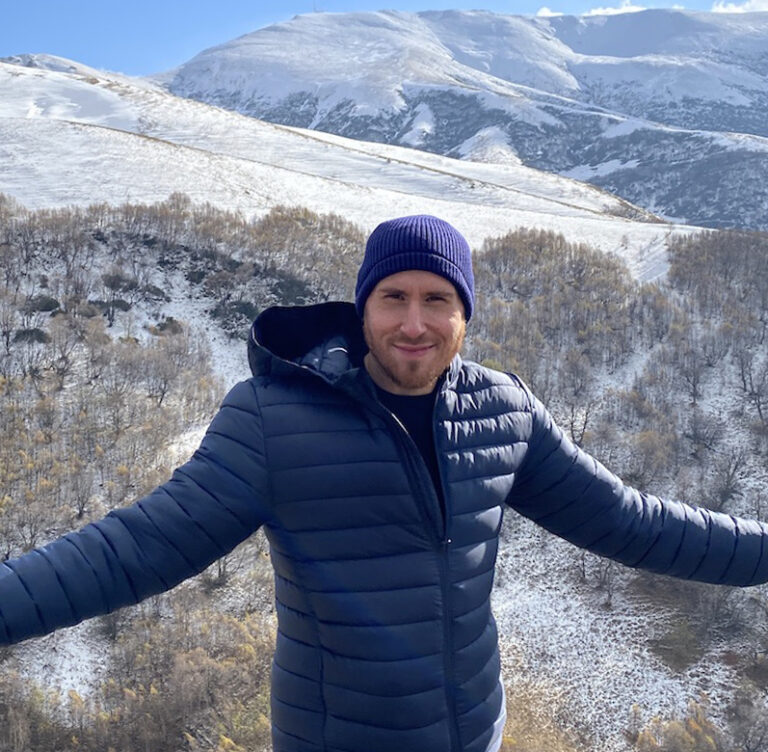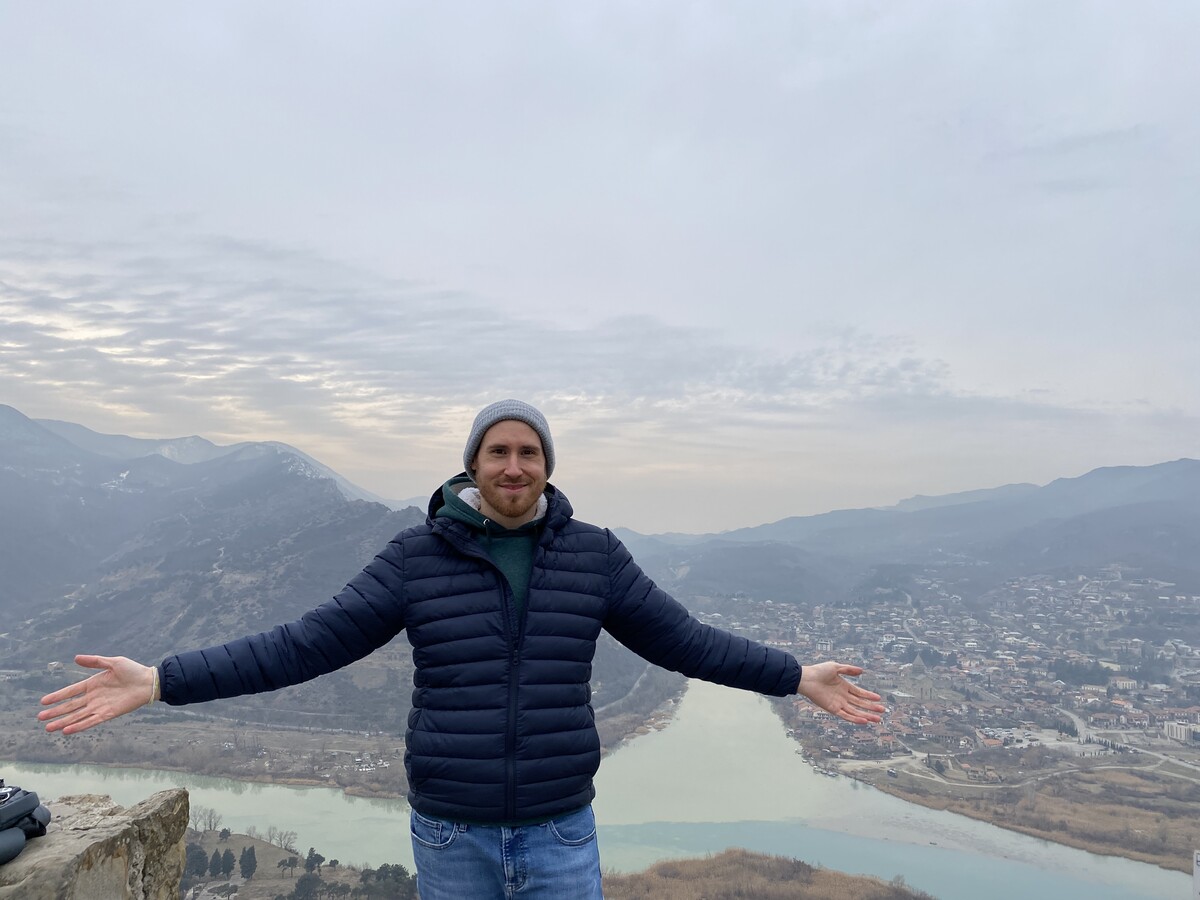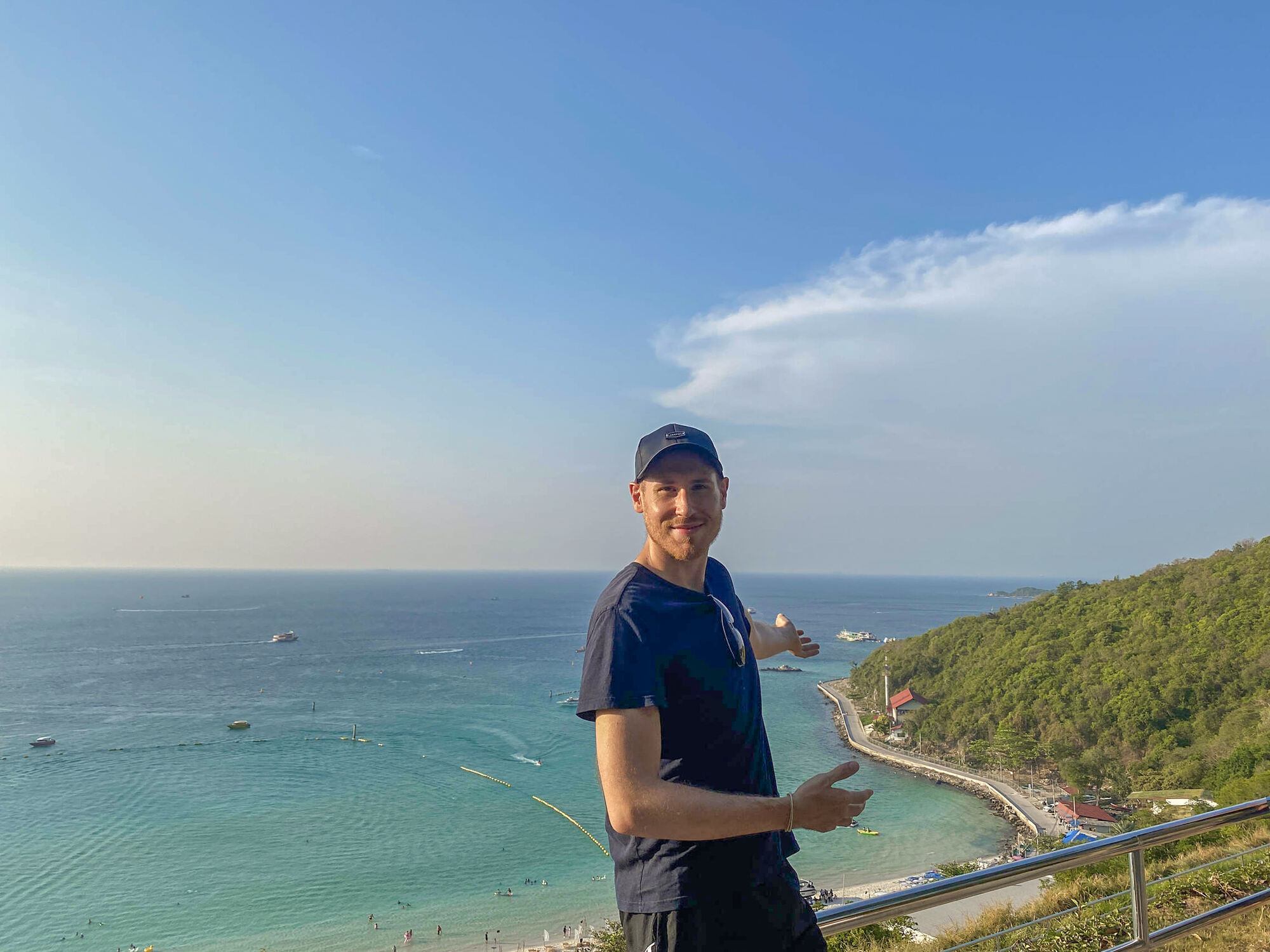Tuscany is perhaps the most beautiful place to go to in Italy and this is where you are probably headed. So, to plan the perfect 7 day Tuscany itinerary, you need to plan the places to visit – everything!
I’m half Italian and I spent a few years living in Tuscany (in a small town called Prato, near Florence and Lucca), and I can’t wait to tell you everything you should know when coming to this part of Italy.
Tuscany is quite touristy and you can expect a lot of tourists in the cities and smaller towns, however, this doesn’t mean that you won’t have a fabulous time!
If this is your first time in Tuscany, I will take you through Tuscany day by day with the best itinerary. The perfect travel guide, how to save money, and my local tips.
Also, while many people will rent a car, others won’t, so I’ll discuss both options in this itinerary for added convenience. Now, let’s get started!

Table of Contents ⬇️
ToggleOverview: 7-Day Tuscany Itinerary
In a nutshell, this is the itinerary for 7 days in Tuscany you’ll want to do, which is a mix of museum, cultural exploration, and Tuscan countryside to make the most of your time in the region.
- Day 1 and 2: Florence
- Day 3: Day Trip to Lucca
- Day 4: Day Trip to Siena
- Day 5: San Gimignano, Volterra, Cortona
- Day 6: Val D’Orcia – Montepulciano, Montalcino, Pienza
- Day 7: Spend the Day in Pisa
Make sure to read this guide until the end as I’ll go through the best places to eat, to stay, and cover the options you have no matter if you rent a car or not.
Do You Need a Car for this Tuscany Itinerary?
No, you can also take the train, which is a good way to travel around Tuscany. The region has a reliable train service that goes to major cities and a lot of surrounding towns. Public transport is straightforward and you can easily get around without a car.
This is not only convenient but also lets you avoid the challenges of parking and driving in unfamiliar areas. Driving around feels normal to me, but if you’re not comfortable, then I’ll discuss the best day tours you can join in this guide, including wine tour options!
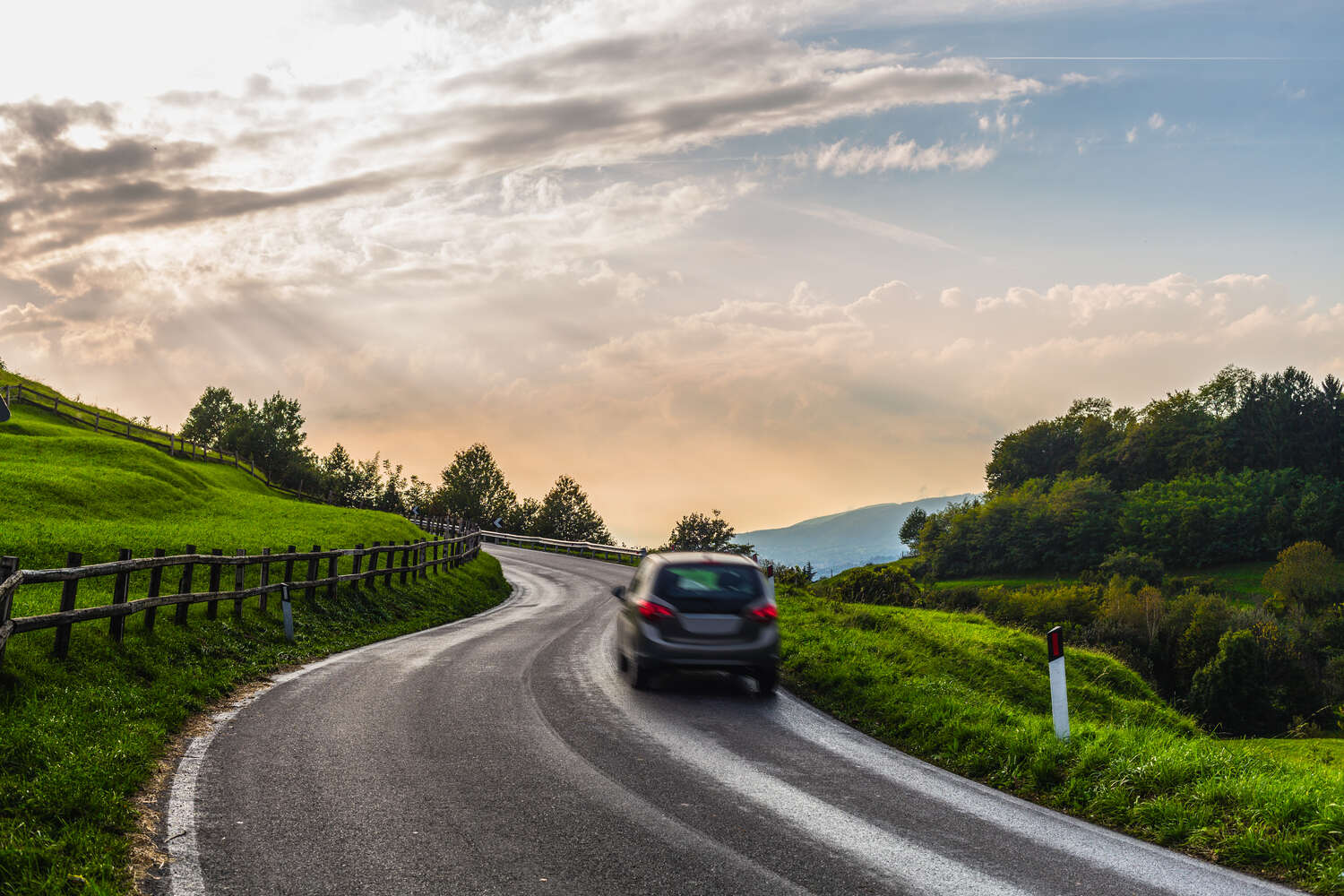
What is the Best Time to Visit Tuscany?
Visit in spring (April to June) and fall (September to October) – during the months of mild temperatures and wildflowers, fewer tourists, and for the beautiful and scenic landscapes – if that is your preference.
Summer (July and August) on the other hand is much more touristy. Attractions are busier and temperatures hotter, but many visitors (particularly in August) are willing to trade the over-the-top heat for a taste of authentic Tuscan life and extended daylight hours.
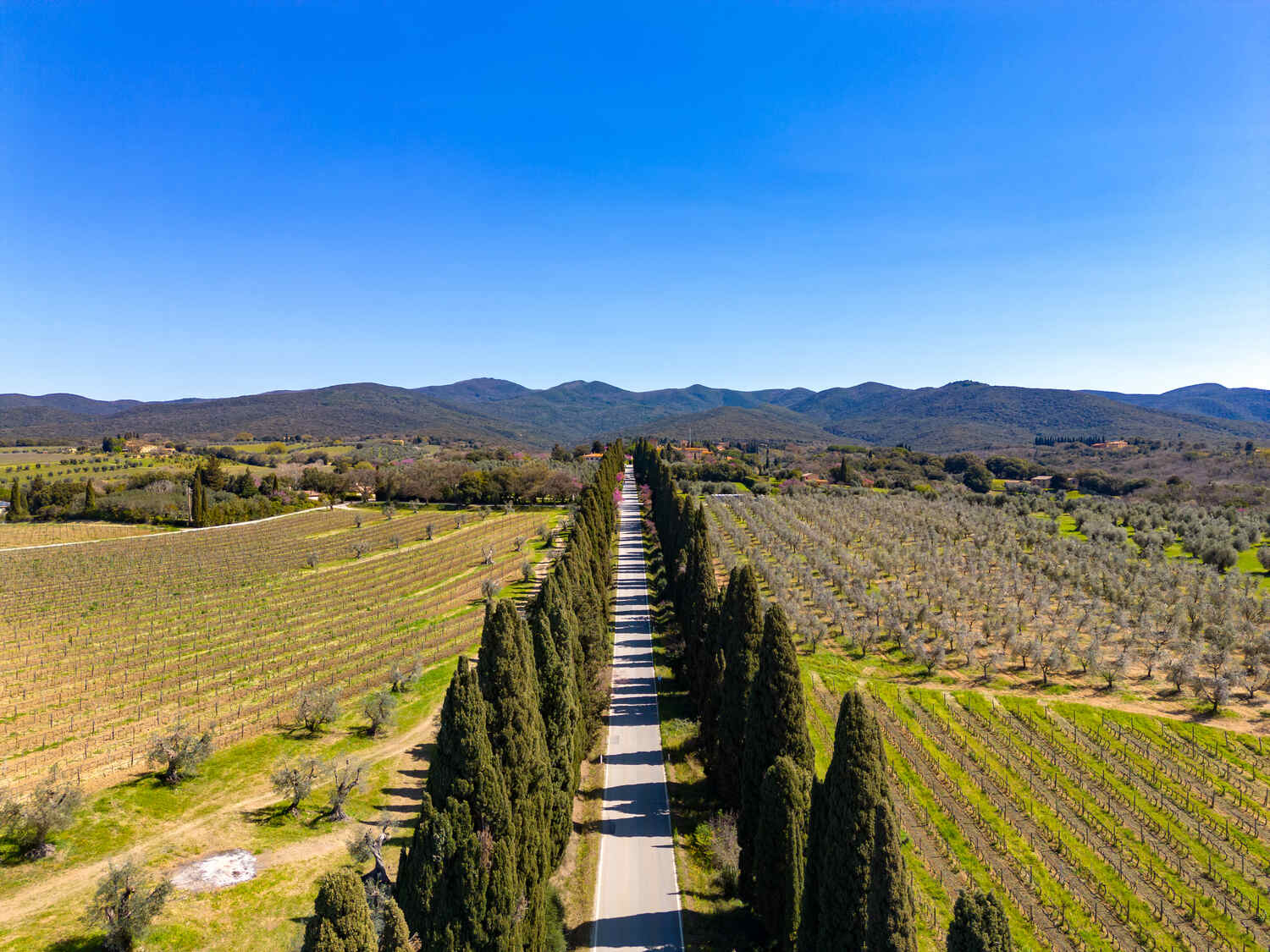
Is a One Week Itinerary in Tuscany Enough?
A week in Tuscany is enough to see the major landmarks and try all the best regional cuisine; it’s a comprehensive and good start in getting to know Tuscany while the rest of the time is spent in the city shopping and exploring.
If you have more time, consider staying 10 days as then you will have more relaxation time and a more comprehensive visit at a slower pace.
Should You Stay in the City or in the Countryside?
This doesn’t have to be an either/or decision on whether to stay in the city or the countryside while in Tuscany; I suggest a combination of both to enjoy the best of each.
In such a case, the best place for you to set up your home base would be Florence, the capital of Tuscany cultural and historical part.
For instance, you can easily access iconic museums, galleries, and architectural masterpieces if you settle in the city. On the other hand, up in the countryside, consider staying at agriturismos, which are local guest houses in a pastoral setting.
These also allow you to enjoy the soothing beauty that is characteristic of the greenness of the Tuscan countryside while also sampling authentic home-cooked Italian cuisines.
Meaning – You get the best of the cities while enjoying the peaceful setting and local homemade food in your private cottage.
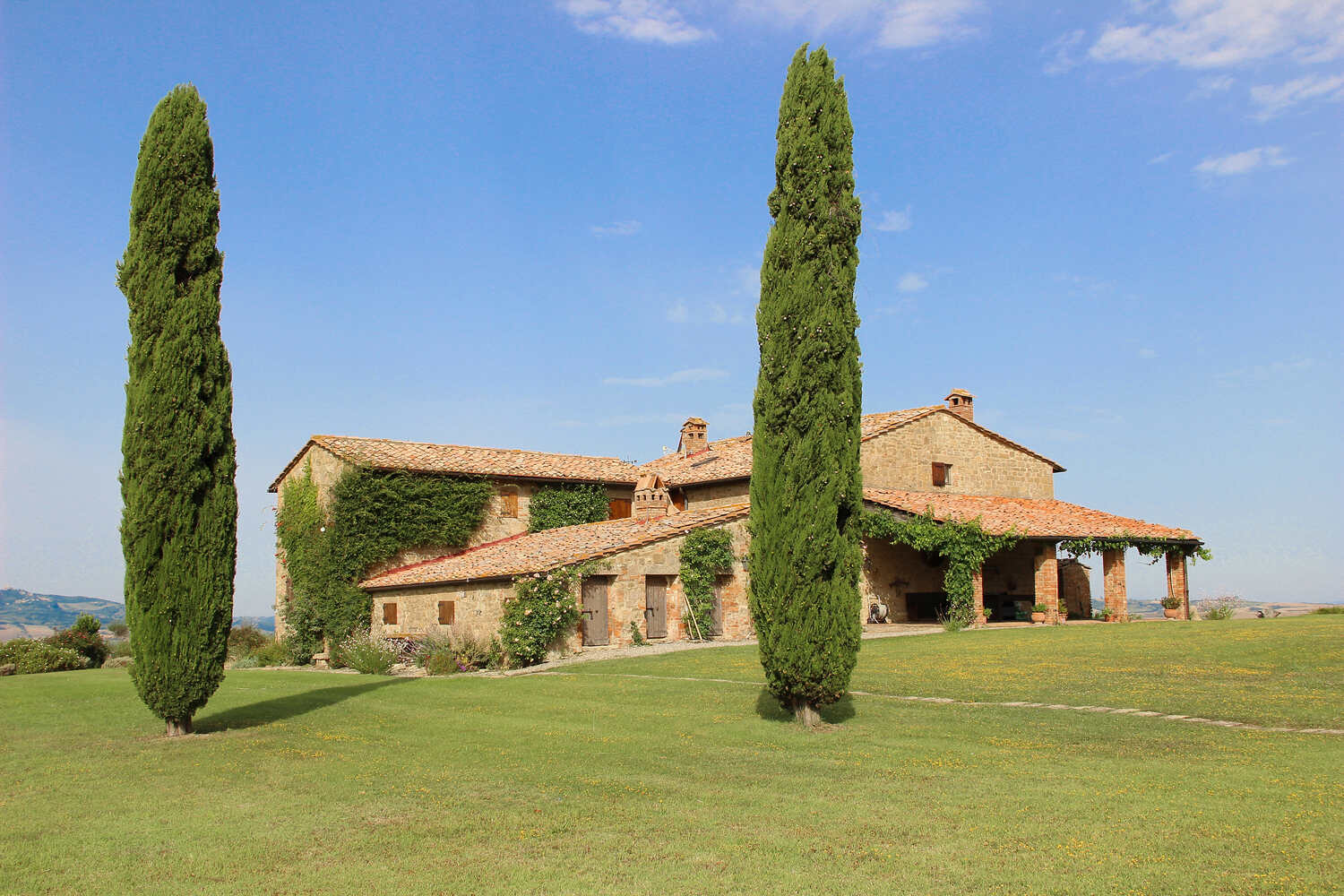
7 Day Tuscany Itinerary: A Detailed Guide
I assume you’ll start your trip around Tuscany in either Florence or Rome. I personally started in Florence and stayed here as a base while taking a day trip to Lucca and Siena.
Many people head straight to the countryside or smaller towns in Tuscany like Siena, but I think starting your trip in Florence is best to get a feel of Tuscany.
Also, you can either fly into Florence Airport or Pisa International Airport. The former is closer to the city and is more convenient, but flights to Pisa are cheaper and rental cars too.
We flew into Pisa Airport and we then drove to Florence, took a road trip around the region for a few nights, and ended the journey in Pisa where we spent one day and returned the car.
Some people fly into Bologna Airport but I find it’s pretty far and you definitely don’t want to waste any minute on your trip!
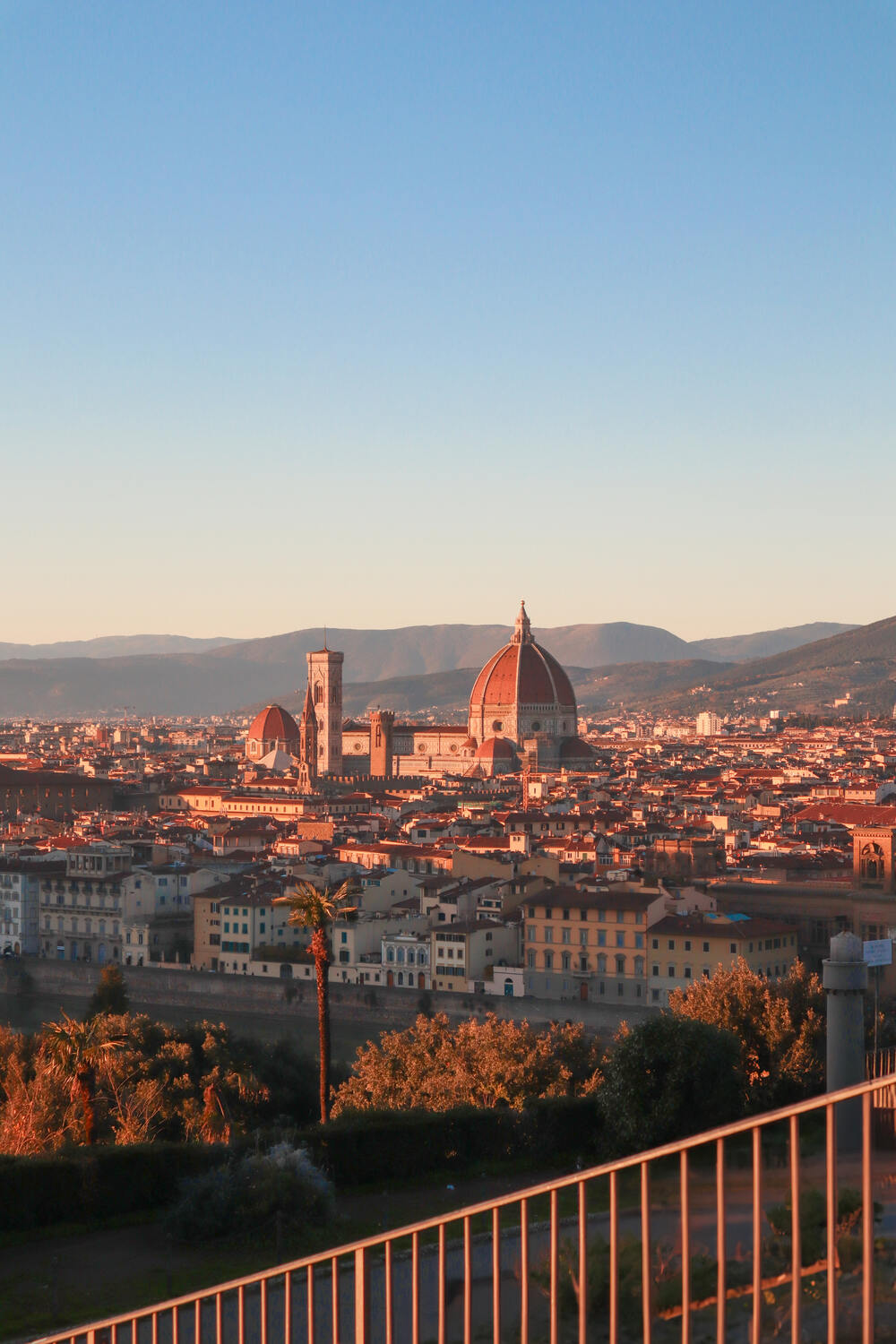
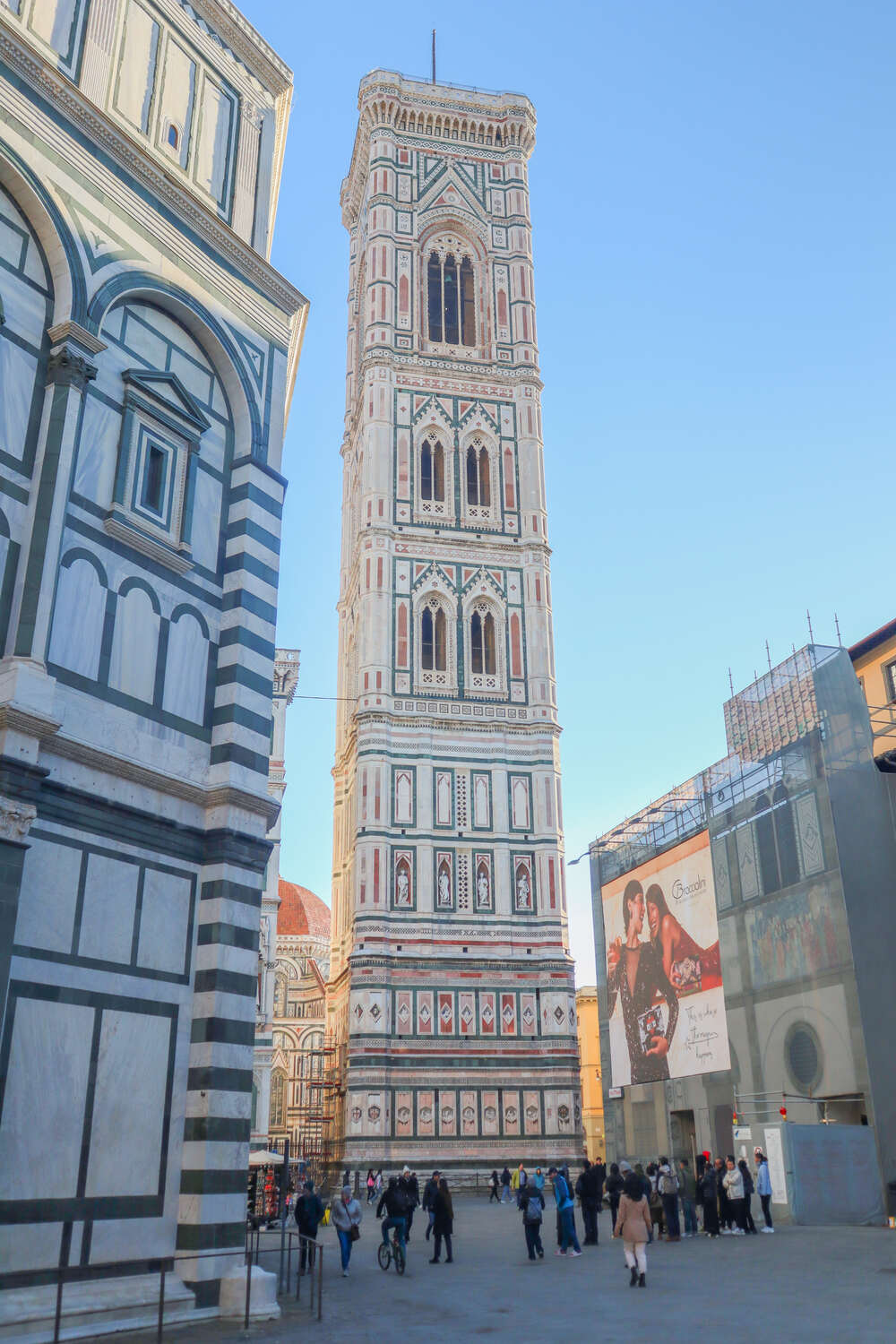
Day 1: Florence
Time to start that 7-day Tuscany itinerary, and my choice is for Florence, the capital city of the region. Some people miss Florence out entirely on their Italian road trips, which is a major mistake.
Begin your day in Florence directly in front of Cathedral Santa Maria del Fiore (Il Duomo). This stunning cathedral (complete with a red dome, no less) can’t be missed and is a must-do on any trip to Florence.
I would recommend booking a combined ticket such as the Duomo Complex ticket, which includes the cathedral itself, Brunelleschi’s Dome, Giotto’s Bell Tower, and the Baptistery, to avoid the longest queues.
We spent about an hour in each and it was all very much worth it.
To avoid the masses, begin your journey early. While the city views from the dome’s 463-step climb are wonderful, the climb is not for the faint-hearted!
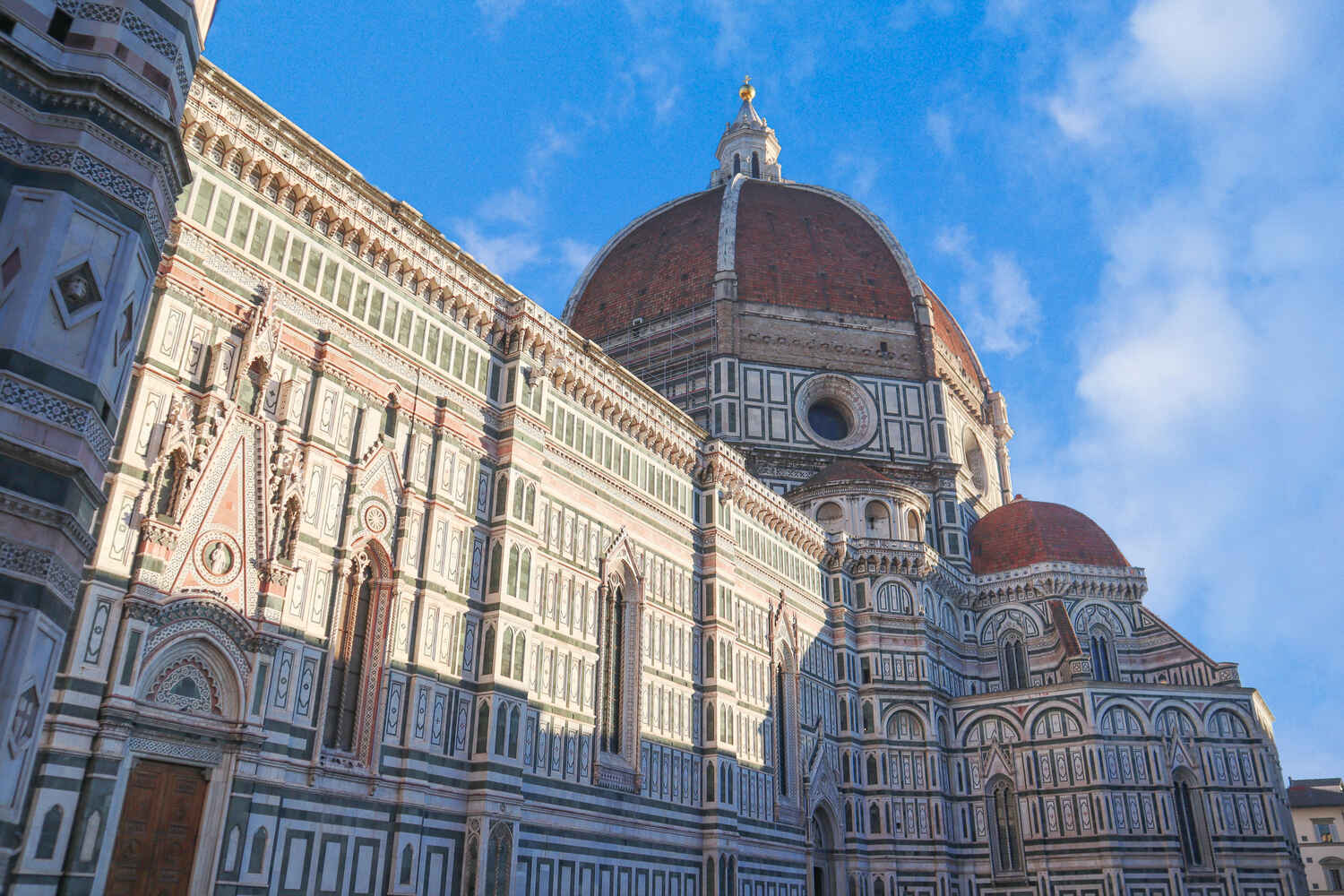
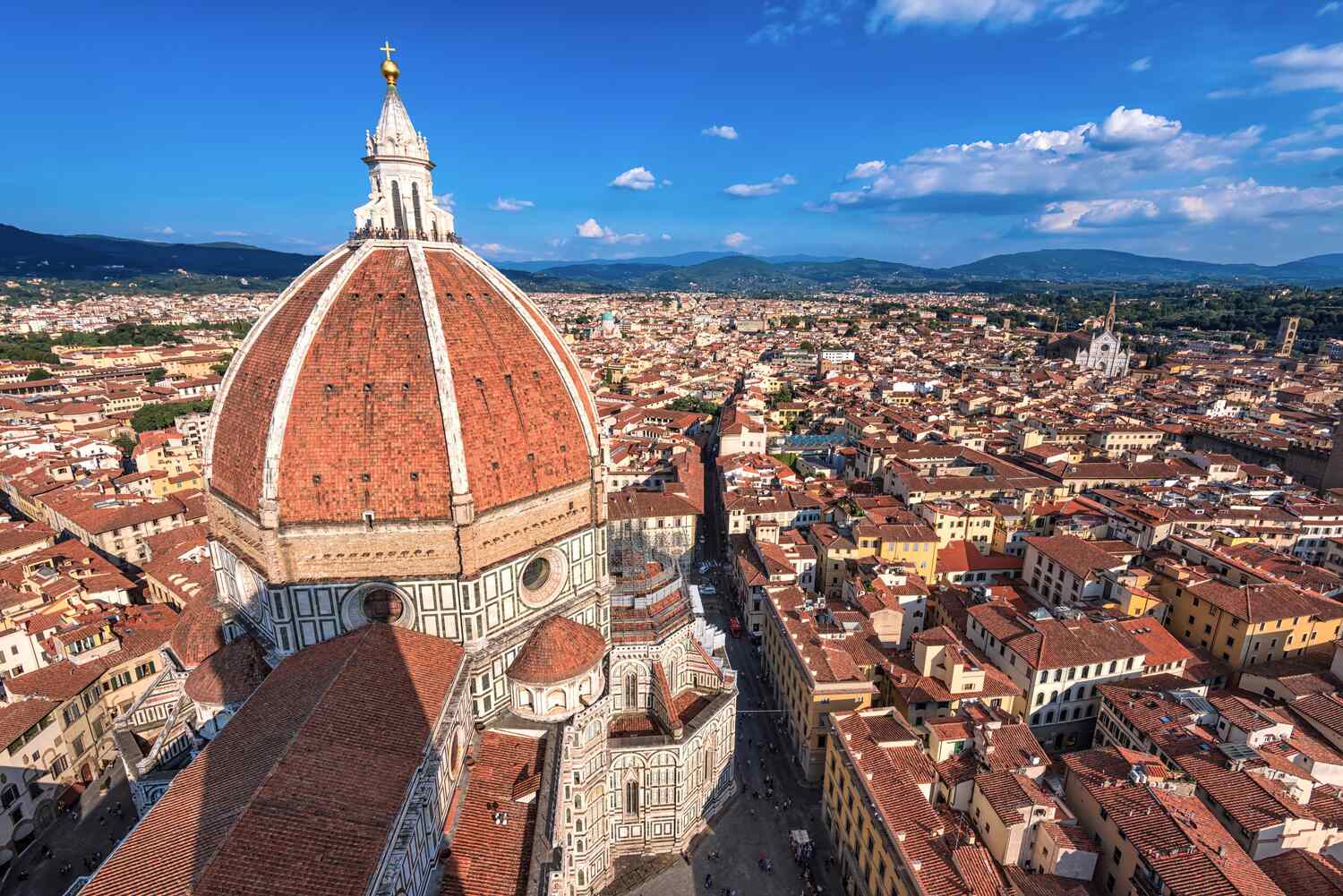
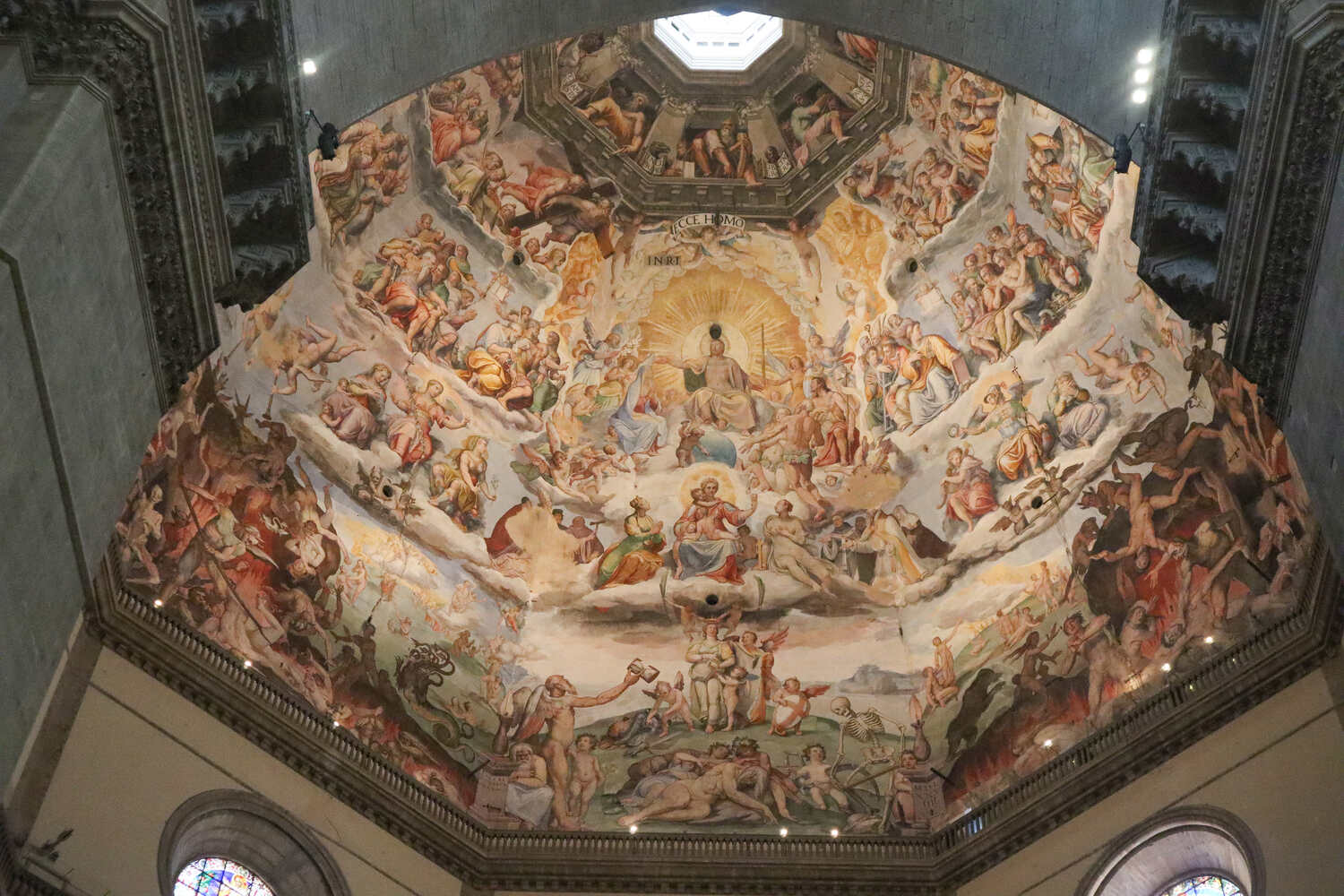
For lunch, make your way to Trattoria Mario, a delicious spot close to the San Lorenzo market. Owned by a family, they serve traditional Tuscan meals.
Their menu changes daily, but you can usually count on staples like Ribollita (a Tuscan soup with personality), Tortellini in Brodo, and Bistecca alla Fiorentina (a T-bone steak cooked on an open flame).
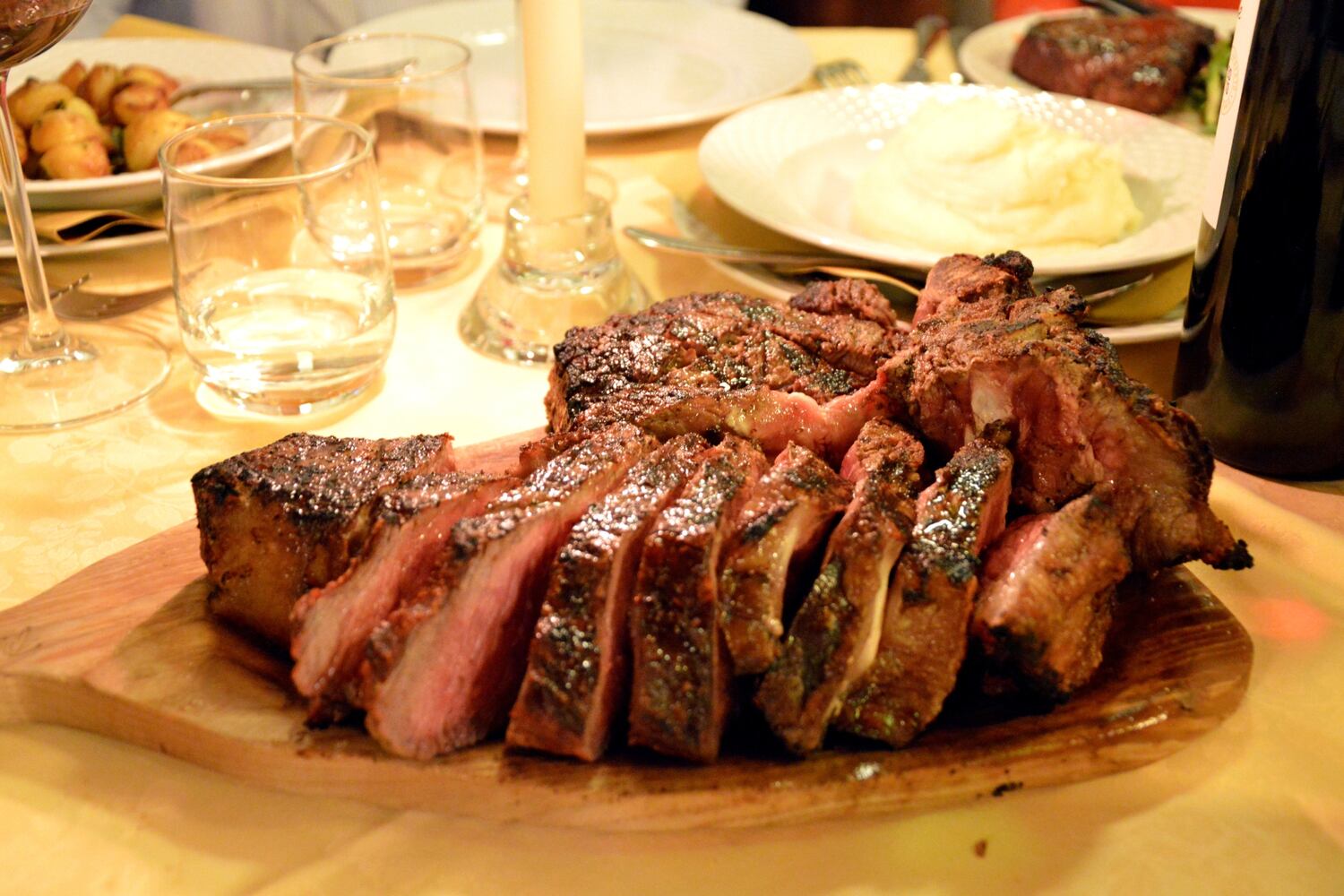
After a delicious lunch, do a guided tour of the Uffizi. The Uffizi Gallery is one of Italy’s top museums, and it houses an extensive collection of Renaissance art, arguably the most significant in the world.
The collection at the Uffizi is the most comprehensive in the world of Renaissance art, highlights include Botticelli’s “The Birth of Venus” and “Primavera,” Leonardo da Vinci’s “Annunciation,” and Michelangelo’s “Doni Tondo.”
Even the building is a work of art. With its long sweeping corridors and lavishly decorated ceilings.
Plan to spend 1 to 4 hours here, but the museum is well worth a visit. After your museum visit, walk through the hopping Ponte Vecchio street market. Ponte Vecchio is the oldest bridge in Florence and is known for its stone arches coming right from the Middle Ages and the shops that lurk on both sides of the bridge.
One interesting fact about this bridge is that, in its early days, there were meat shops selling directly over the river, so undesirable smells were not present in the main section of the city.
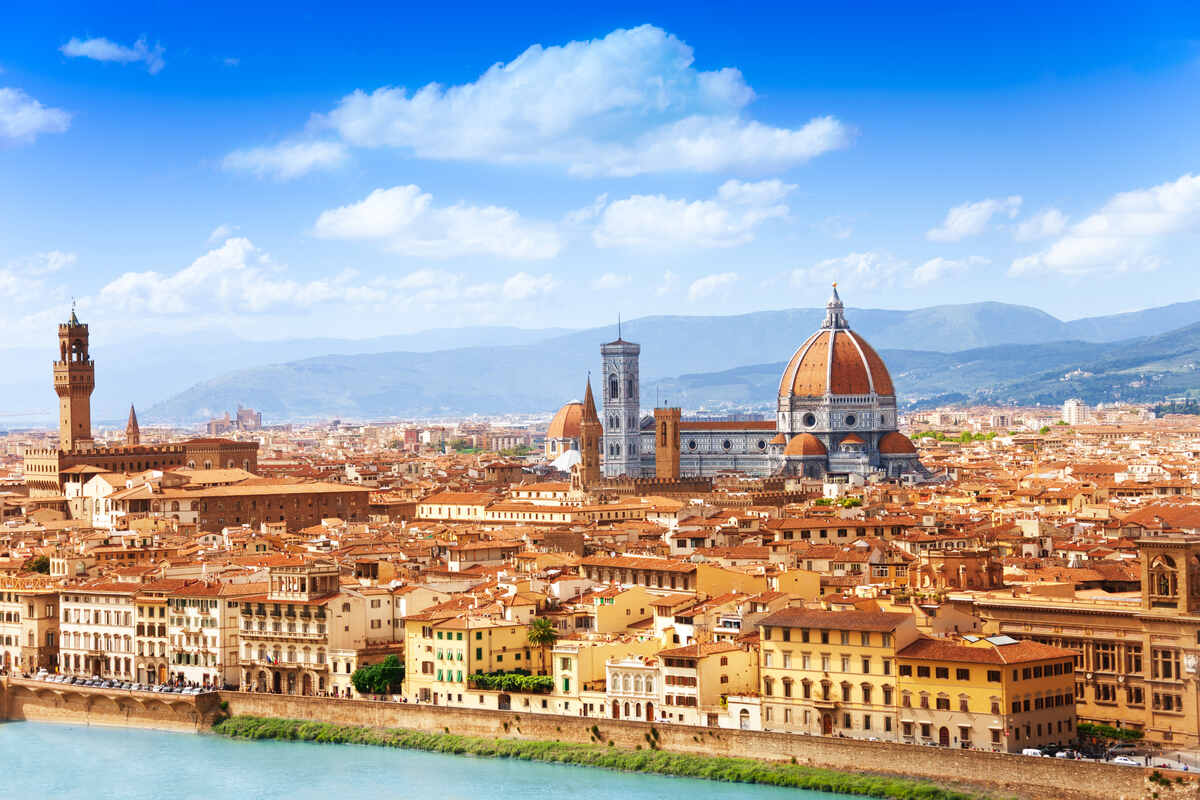
Related Guide
Here’s a complete guide about
planning your itinerary in Florence.
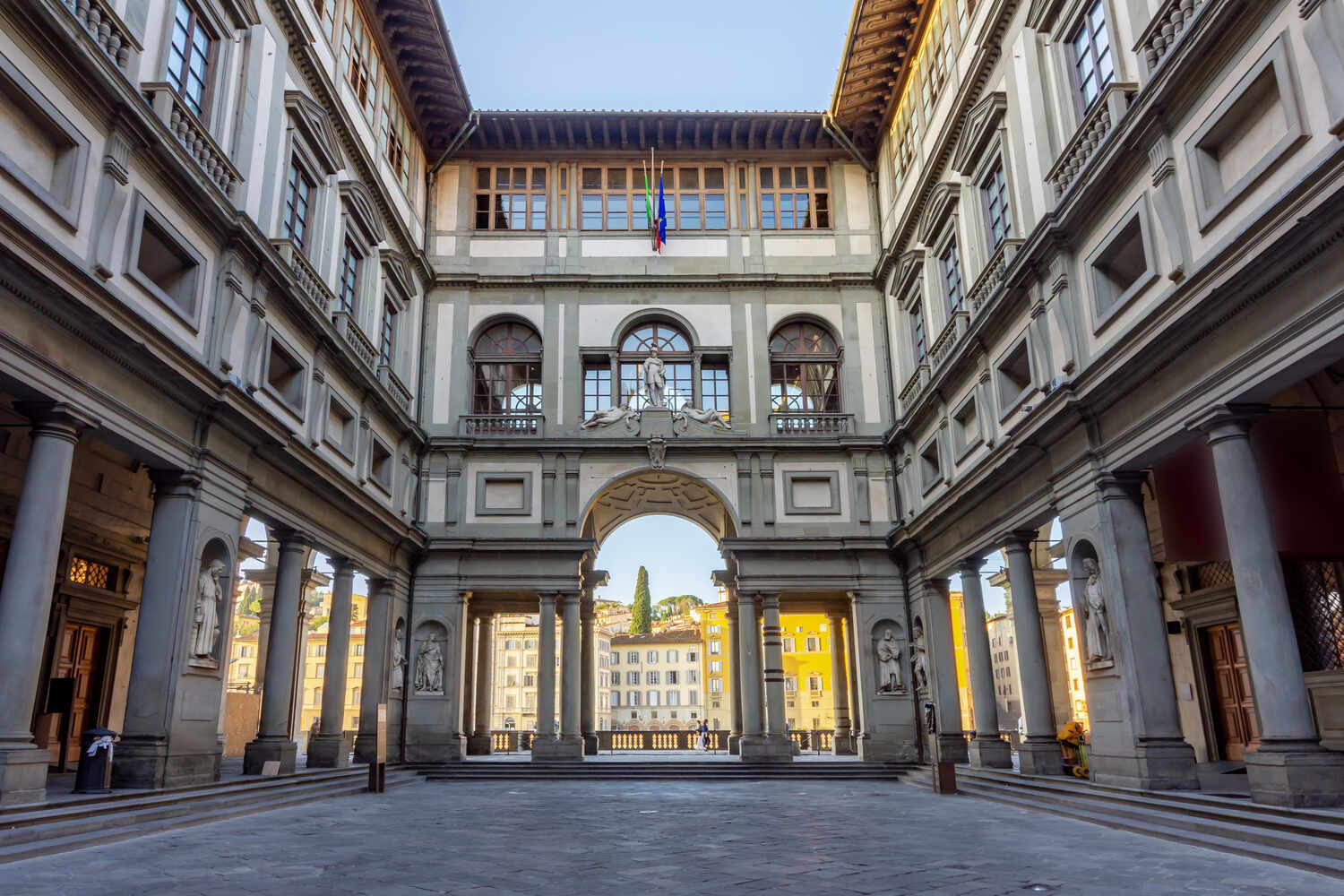
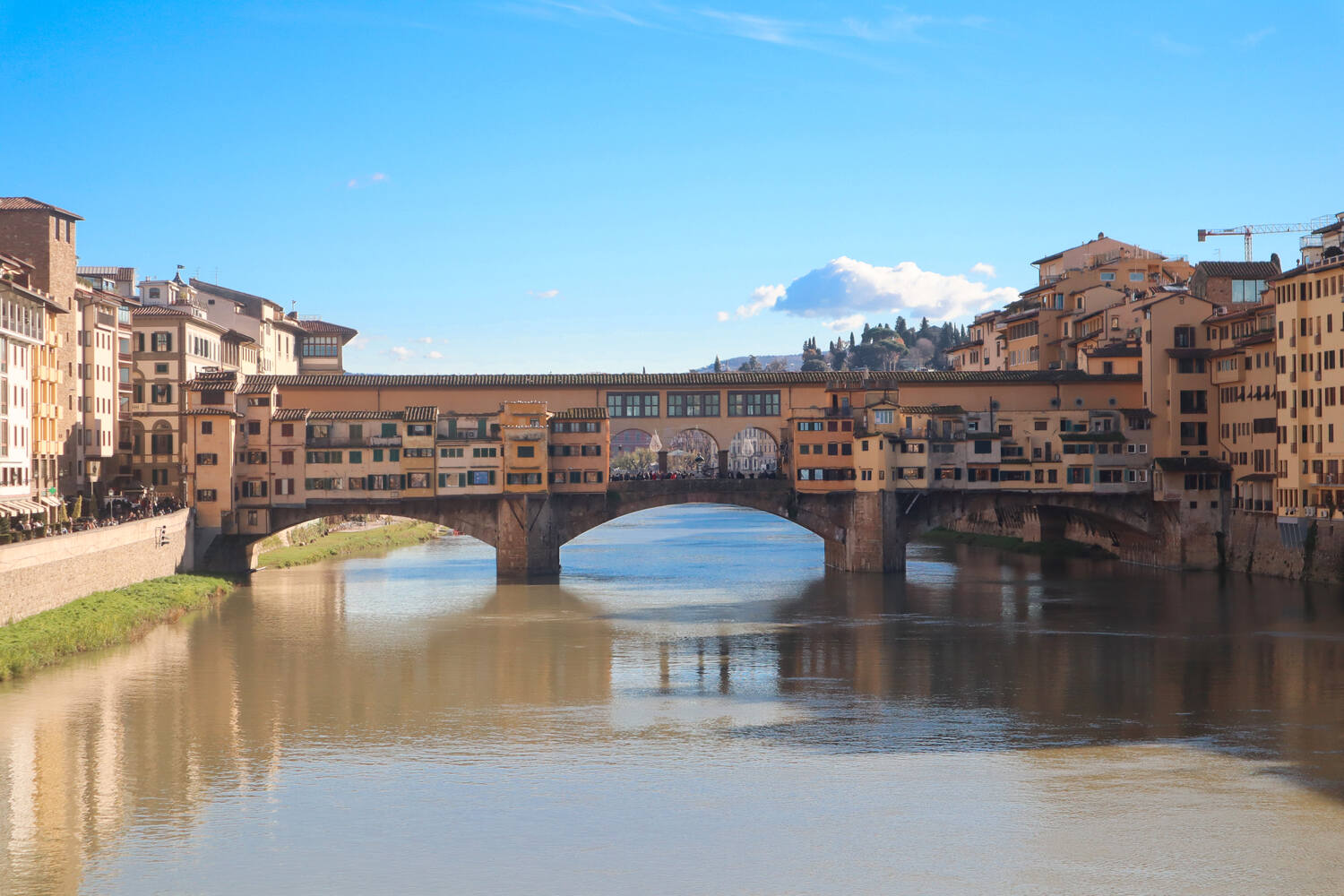
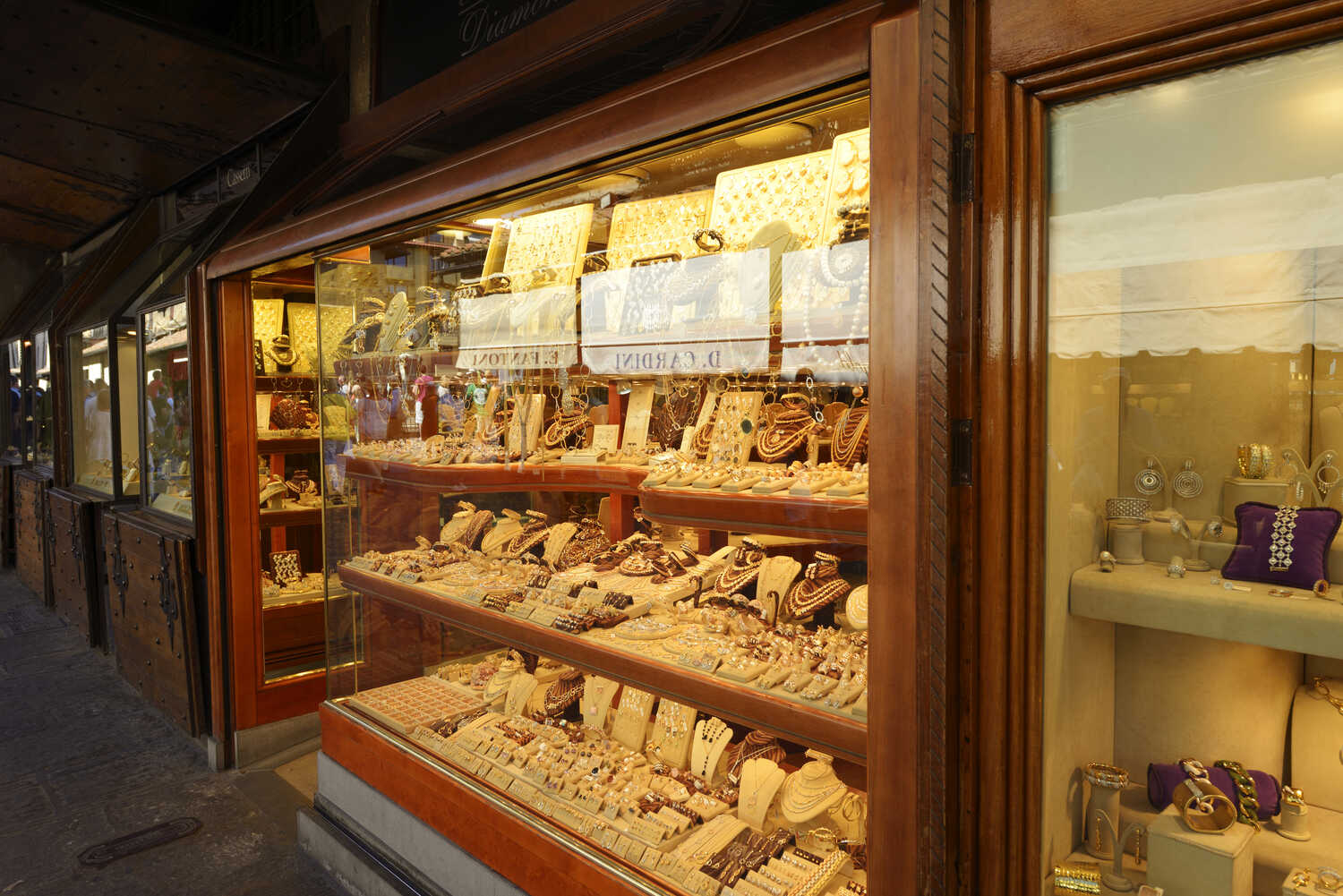
Then end your day with the best for last, and climb to Piazzale Michelangelo to watch the sunset. This square is located about 3km south of the city centre on a hill and has sweeping views over Florence, including the Duomo and the Arno River.
Let me tell you, this is easily the best viewpoint in Florence, and possibly in Tuscany!
For great dinner spots, I always recommend La Grotta Toscana, which again, is centrally located and very tasty in comparison to other places in town.
And good news — you can get a discount on The Fork app, so make sure to download it ahead of time.
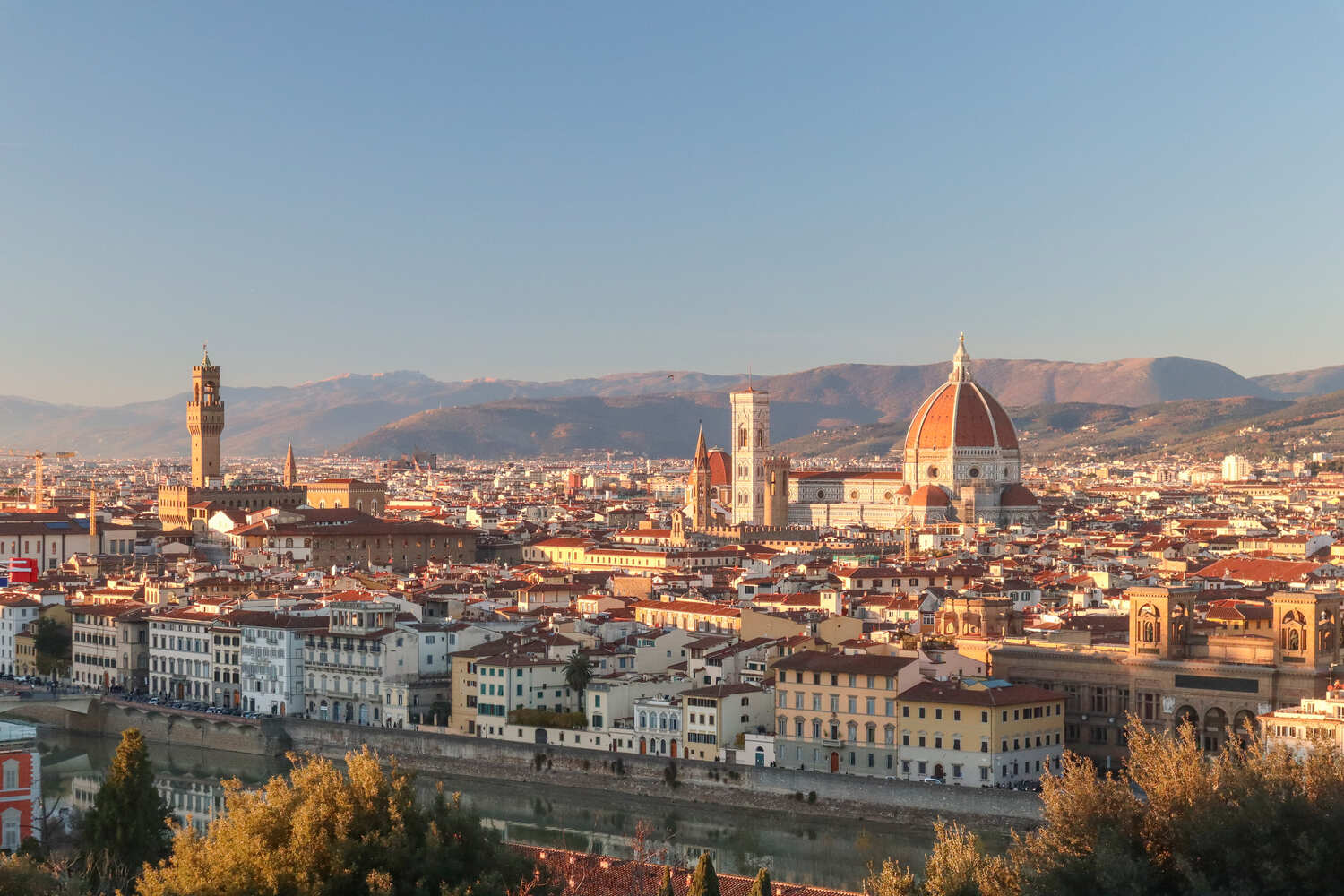

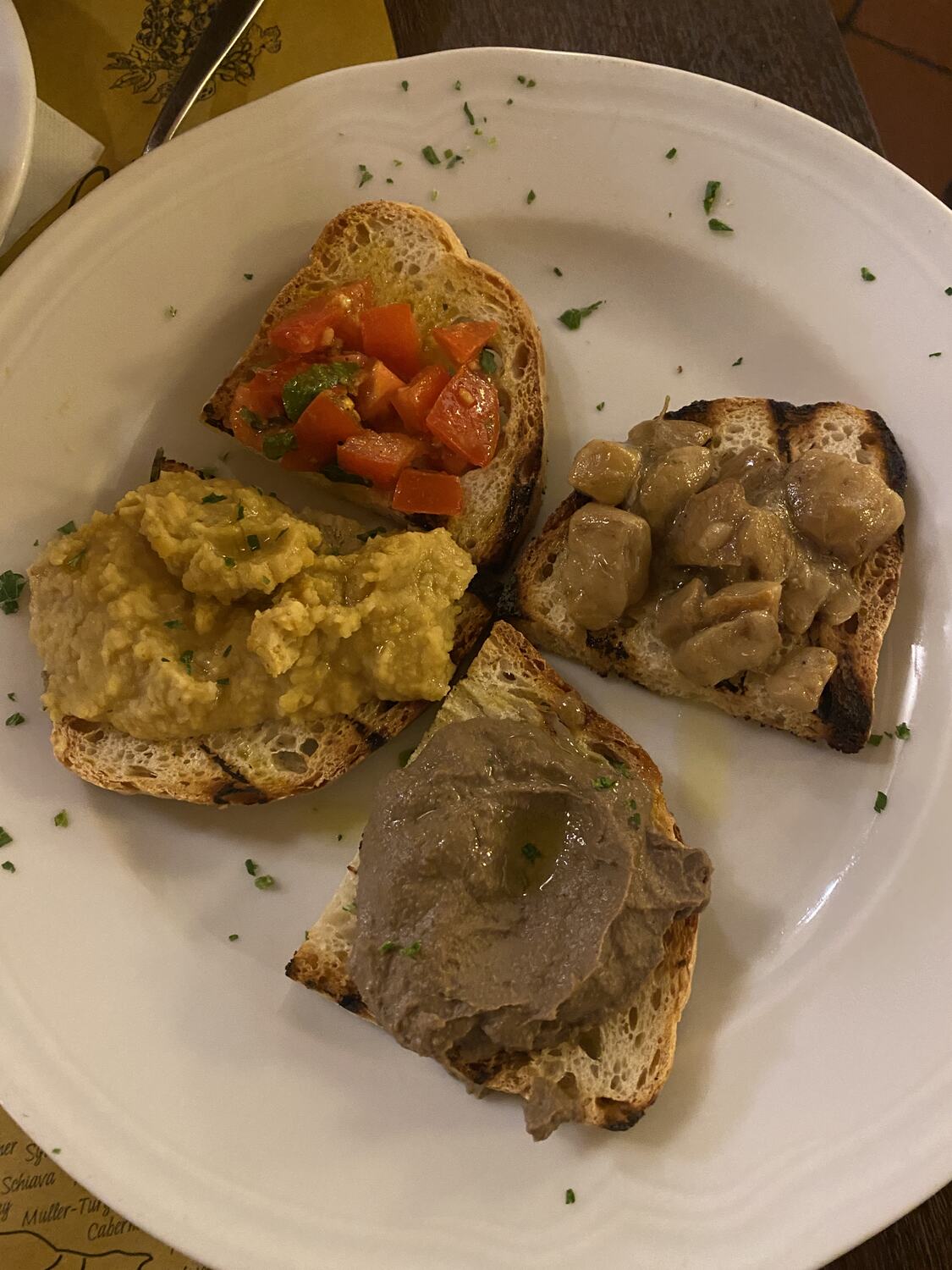
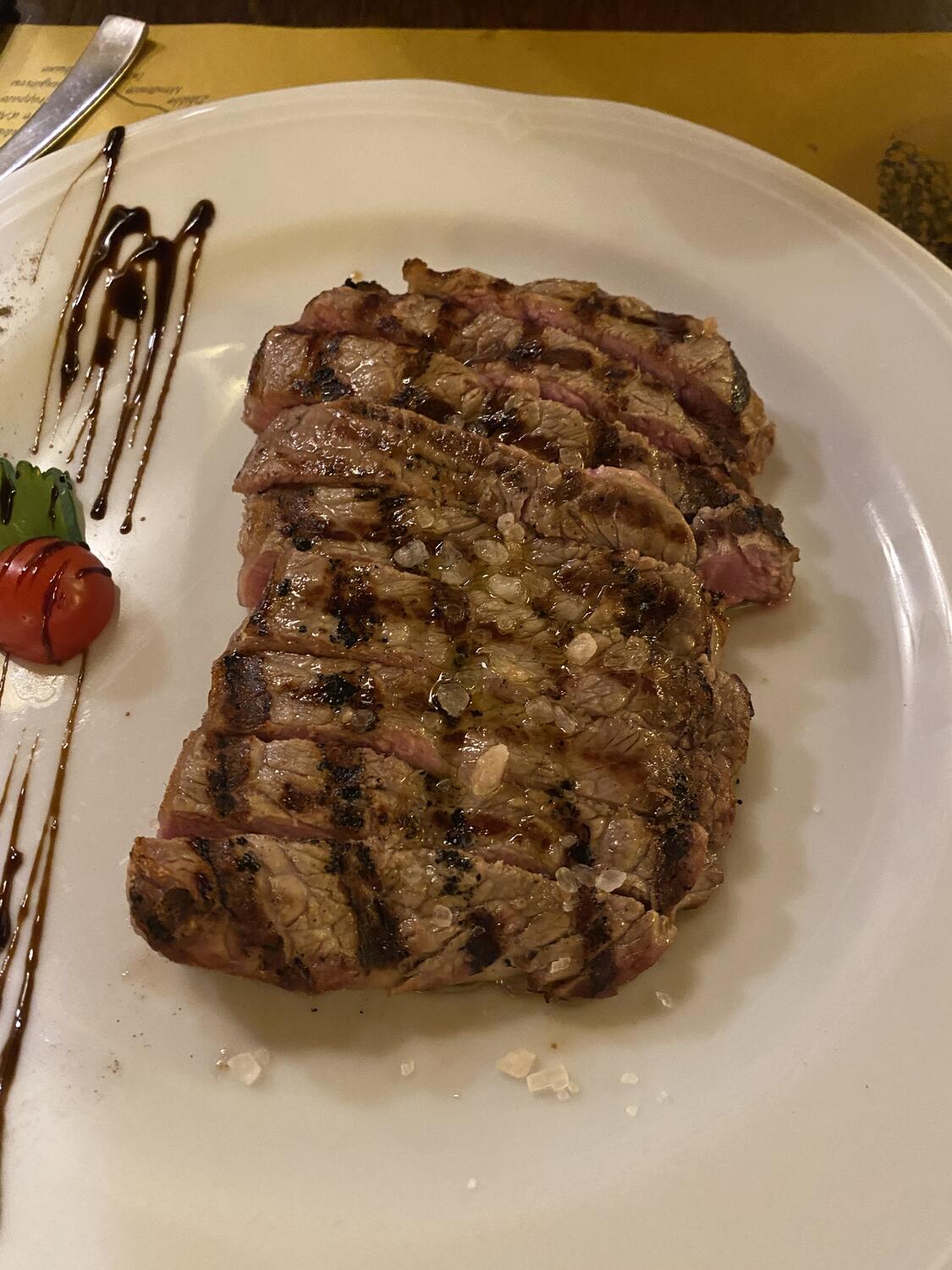
Where to Stay in Florence
- Luxury: NH Collection Palazzo Gaddi
- Mid-Range: II Guelfo Bianco
- Budget: Ostello Bello Firenze
Where to Eat in Florence
- La Grotta Toscana: Watch as your gourmet Tuscan courses and pastas turn into reality. You don’t want to miss their pasta dishes!
- Trattoria Mario: A bustling family-run joint famous for serving traditional Florentine steak as well as other homely Tuscan dishes.
- Osteria Santo Spirito: This osteria in the Oltrarno district serves plenty of pasta dishes and local wine.
Best Tours in Florence
Day 2: Florence
Your second day should begin with a trip to the Palazzo Pitti, the Renaissance wonder where the rulers of Florence resided; it is now a museum complex and is quite a fair distance from the city’s tourist attractions.
It is much easier to visit in the early hours before it fills up with crowds during the day.
You’re better off purchasing the skip-the-line combined ticket in advance online – perfect if you’re doing both the gallery and the Boboli Gardens.
Visit the large collections of the palace rooms and galleries, which include paintings, costumes, and jewelry, providing a look into the lives of the Medici family and their time.
After that, find your way to the Boboli Gardens, located behind the palace right in the same complex.
It takes nearly 3-4 hours just to visit Palazzo Pitti and Boboli Gardens as the entire complex is massive, but visiting the attraction is really worth it.
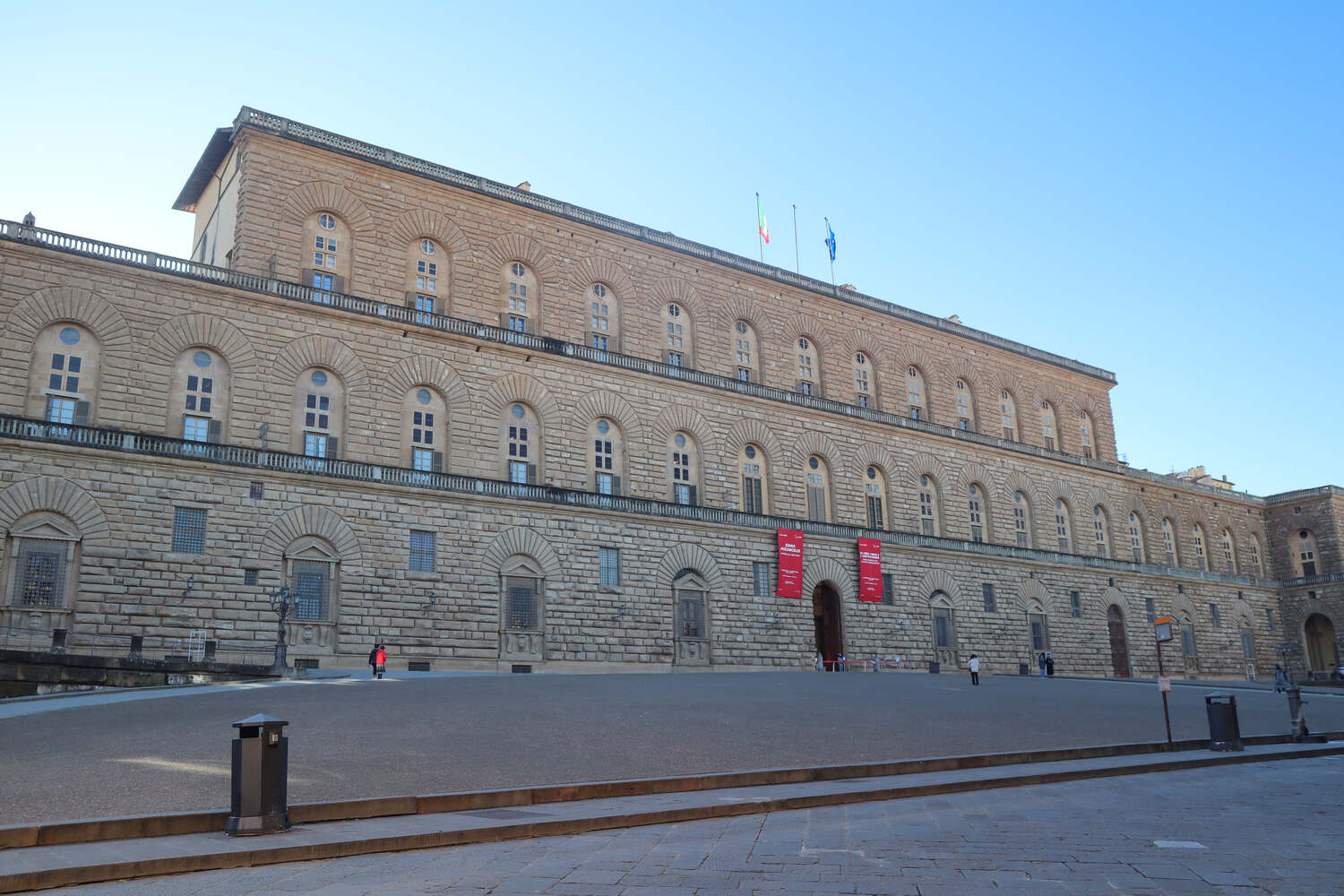
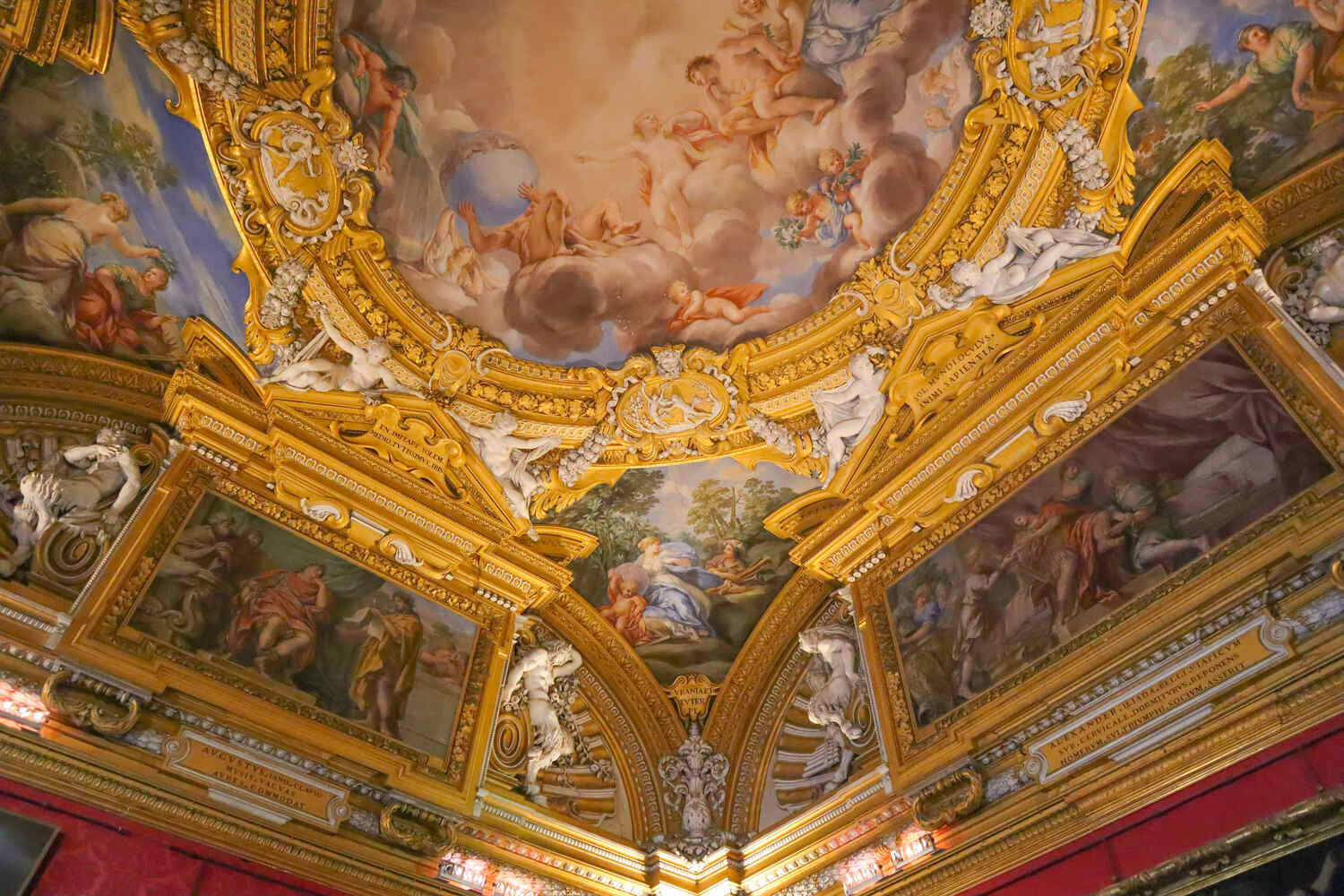

Treat yourself to lunch at Trattoria Vasari, celebrated for its traditional recipes of Tuscan gastronomy. Located very near to the Pitti Palace, it’s really good value, and the food is simply delicious.
Make sure you try the Carbonara there. Also, if you are in the mood for dessert, the ice cream at Mancuso is just splendid.
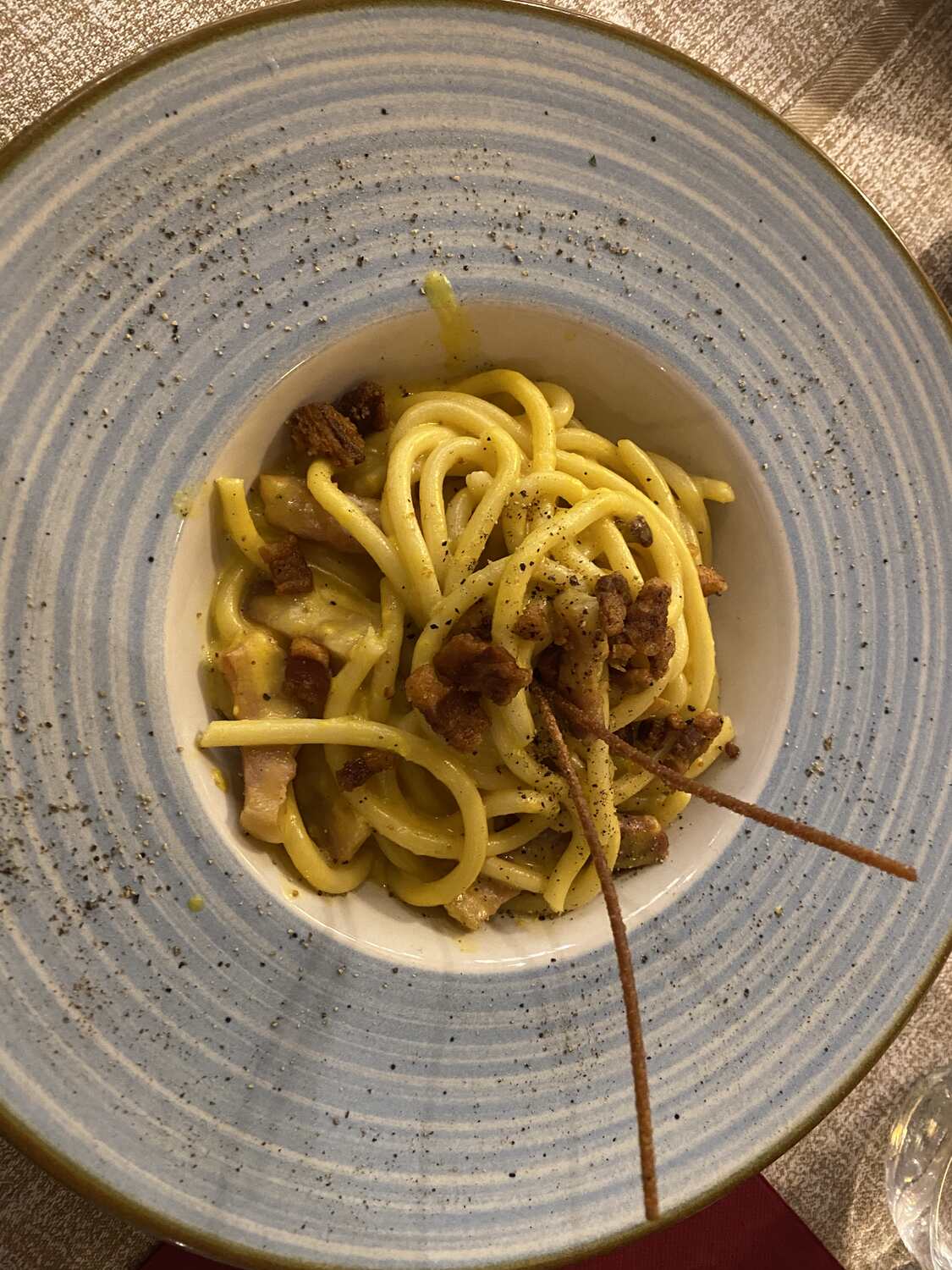
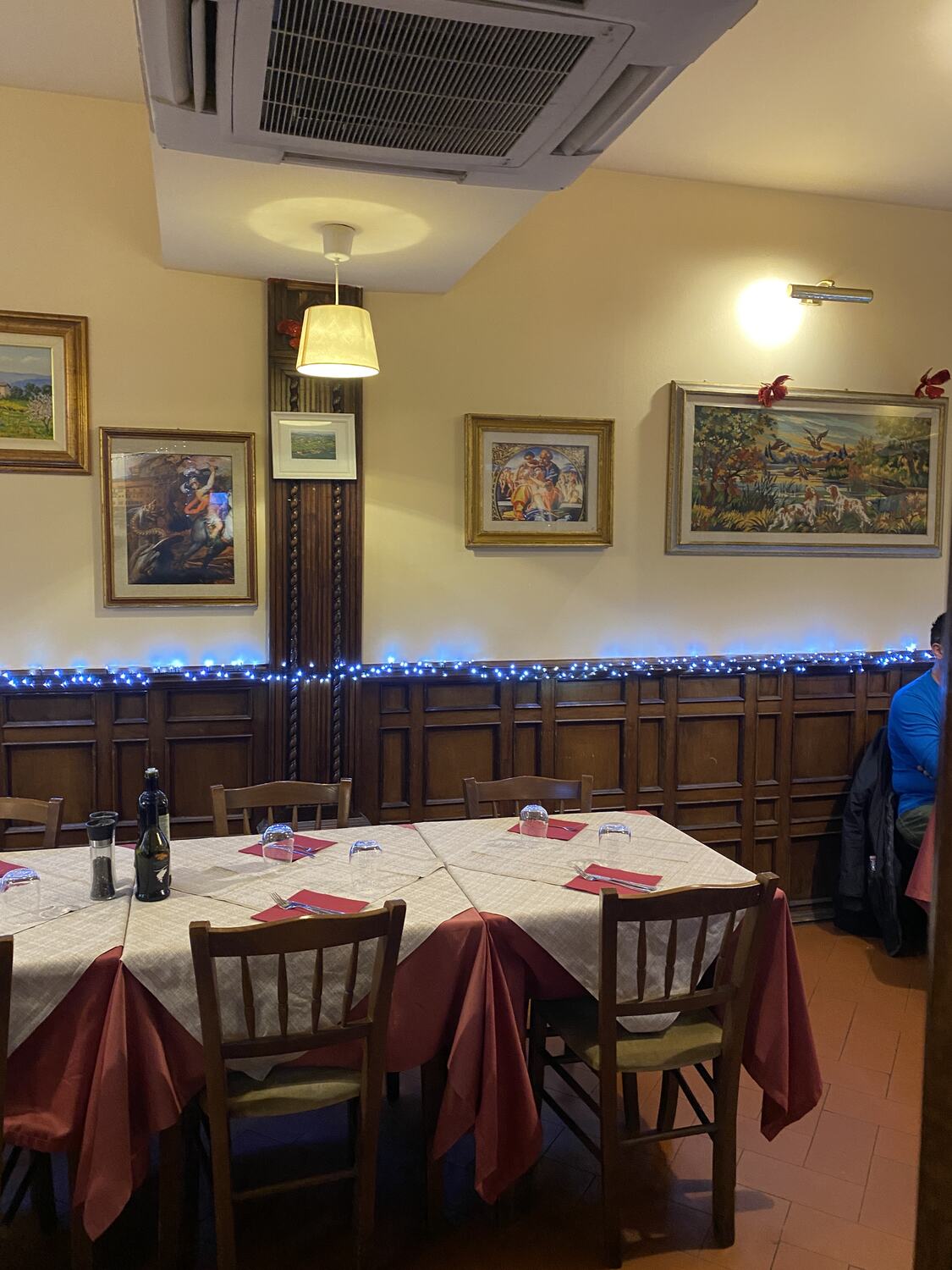
One of the best activities to end on a high is the incredible Santa Croce church, the final resting place of Michelangelo, Galileo, and Machiavelli
It gets pretty crowded almost all year so the earlier you get there the fewer people you will see.
Later, enjoy some leisure time at the Florence leather market, where you can shop for souvenirs and handmade leather goods. I got a leather handbag for my mom for 55 euros, negotiated from 70, and you can expect a similar price, but make sure it’s actual leather!
After you have located the leather market go around seeing all the shops, as almost all of them sell the same things. I got my mom a leather handbag for 55 Euro, reduced from 70, and you can probably expect something similar, but make sure it is real leather!
And visit the famous Accademia Gallery and the iconic David of Michelangelo before calling it a day at a Florence restaurant – A Florentine experience is incomplete without it!
Head back to Piazzale Michelangelo, for another peaceful sunset view, or take a walk through the historic center in the evening – that’s when the town seems magical with all those beautiful streets and monuments lit up.
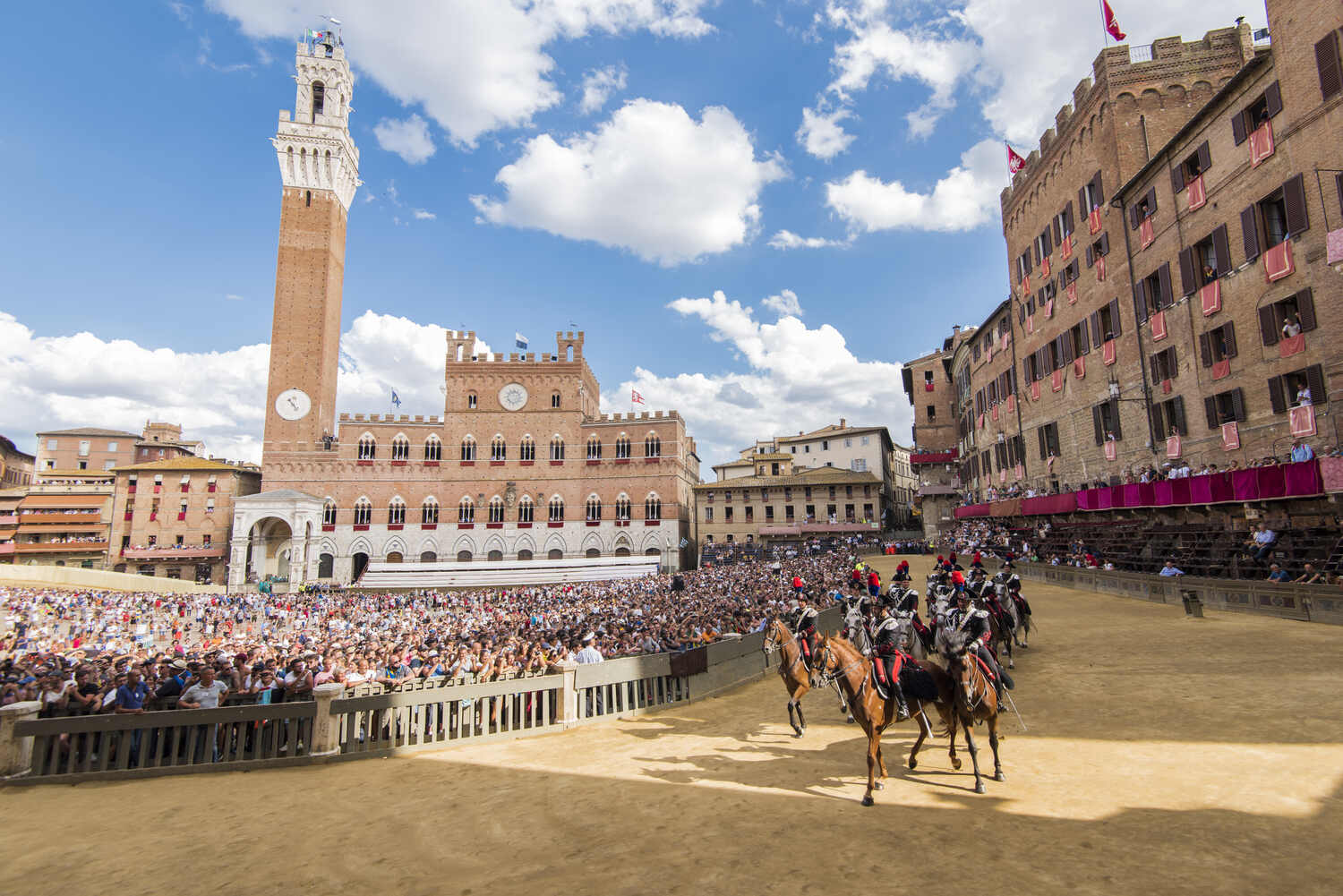
Related Guide
Here’s a complete guide about
the best day trips from Florence.
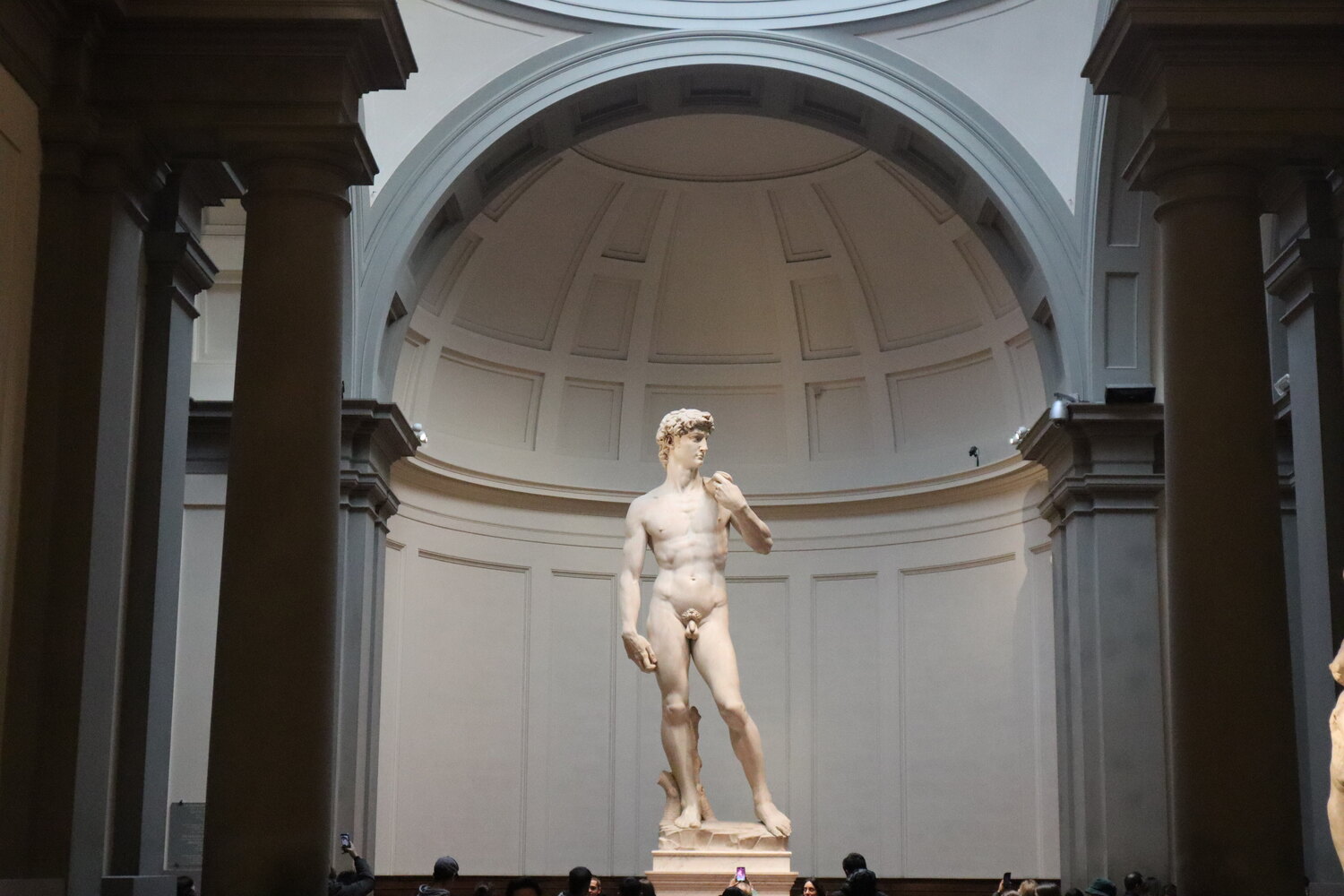
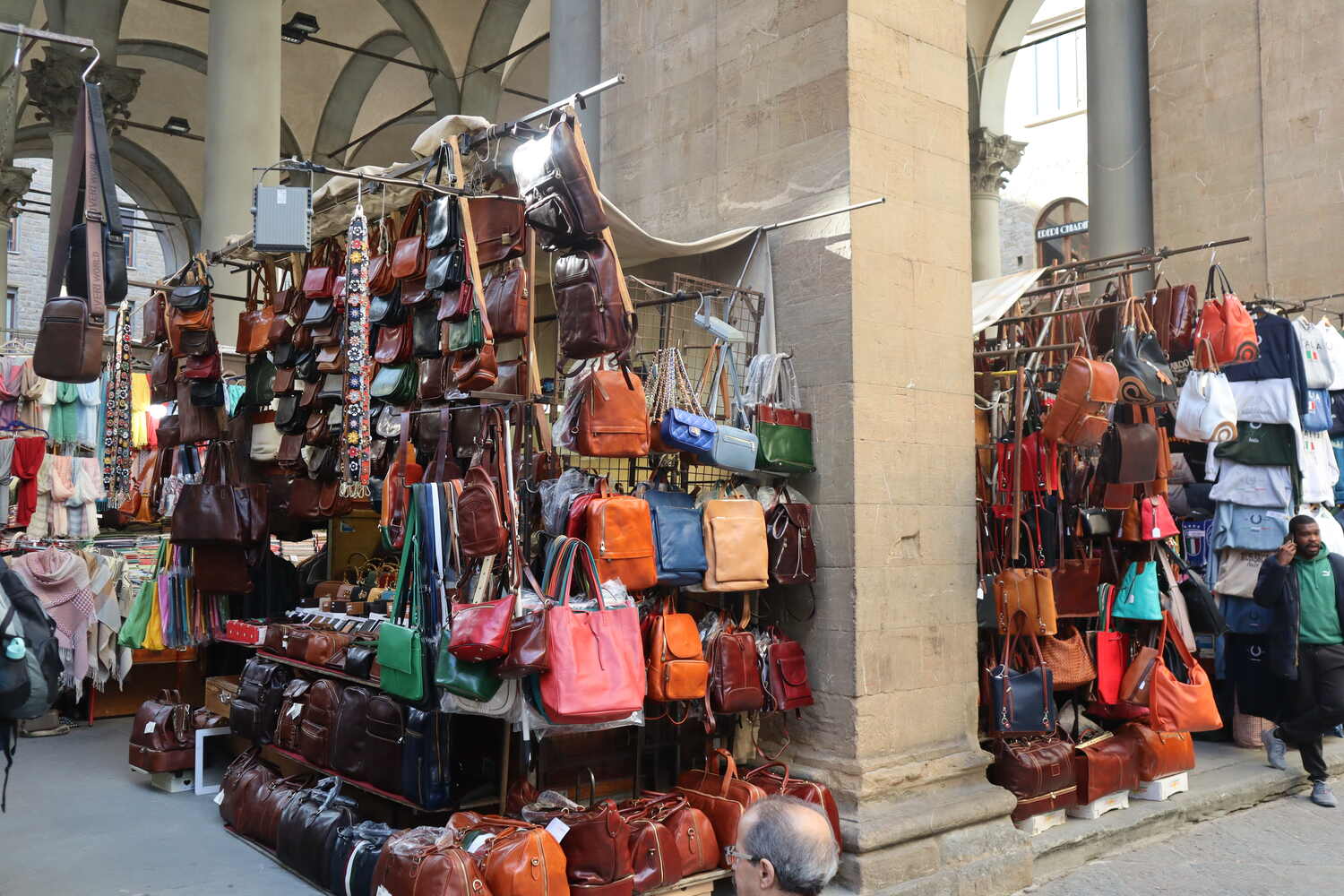
Day 3: Day Trip to Lucca
Lucca is the “hidden gem” in Tuscany that most people don’t know about, and I personally think you should spend a day here, as you’ll find real Italian culture.
The charming little town is famous for its well-preserved, huge Renaissance walls, later transformed into walkways and biking paths around the old city center.
You’ll find countless impressive churches, two towers, and historic buildings to get a glimpse of Italian history without the overcrowding of more famous Tuscan cities.
The best is to leave early from Florence to Lucca to make the most of your time. If driving, head straight to Lucca and park just outside any of the city’s four gates—parking is affordable and convenient for exploring.
Alternatively, public transportation is a hassle-free option, with train tickets around €8 one way and a journey time of approximately 1 hour. Trains start around 6.00 AM and the last one comes back to Florence around 10.30 PM, which is convenient.
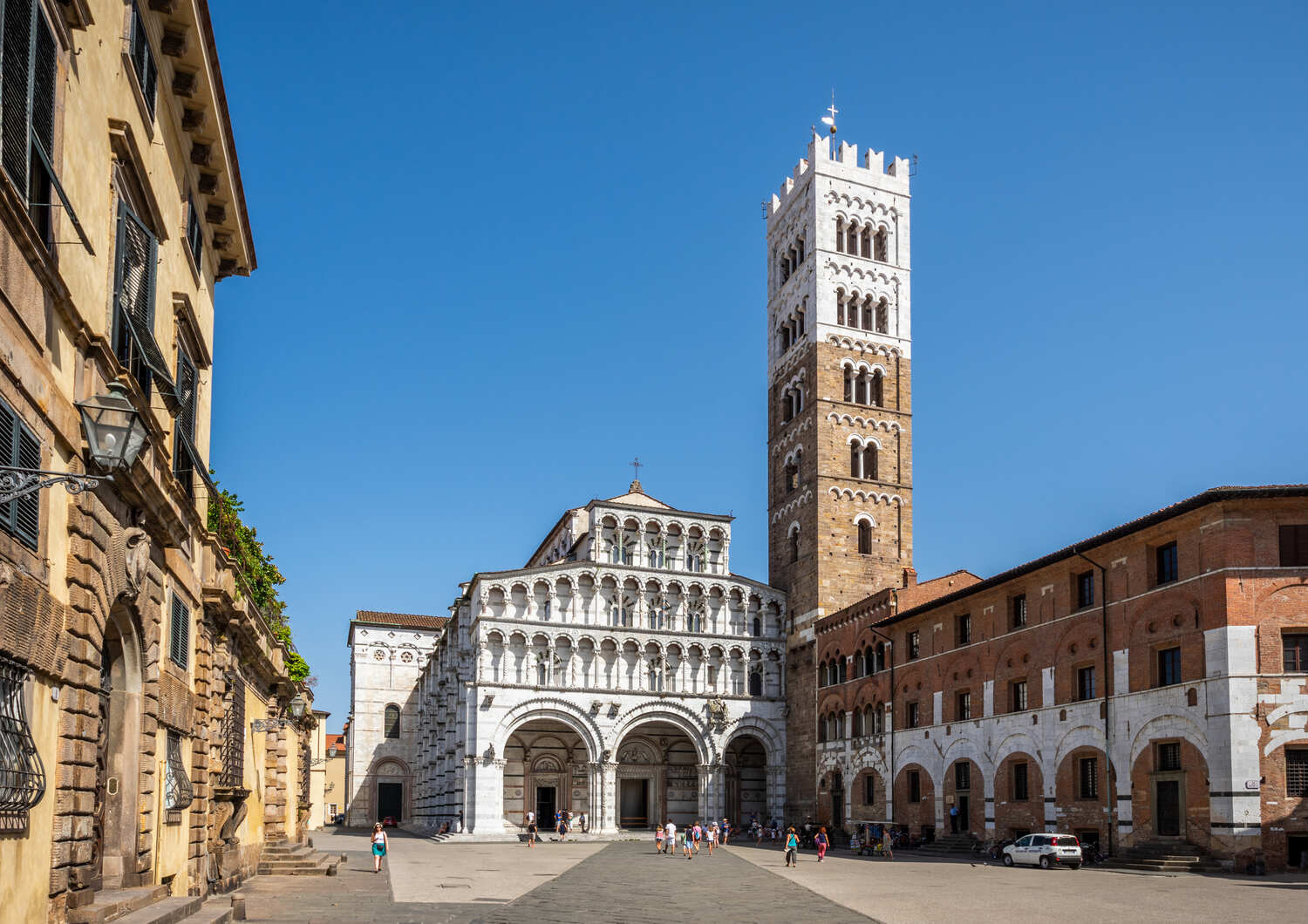
Want to know more?
Check out this guide about
spending 1 day in Lucca.
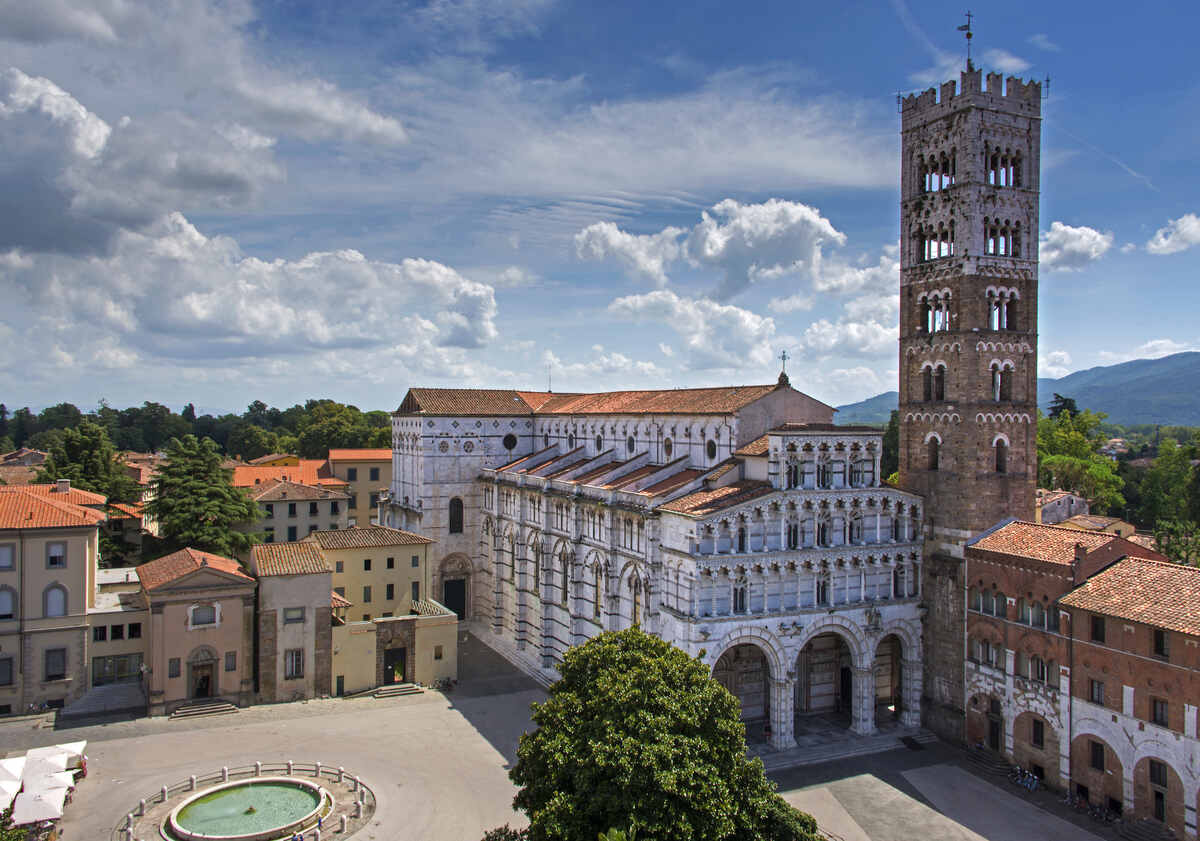
Go early on arrival for a stroll on Lucca’s Renaissance walls, enjoying splendid views. Follow the walls all the way around the city.
Our next stop is to explore the main churches of Lucca, the most important of which are the Church of San Michele in Foro — one of the city’s most distinctive buildings — and San Martino, a masterpiece in Pisan-Romanesque architecture.
Next, walk back across the picturesque city center through Via Fillungo, the principal shopping street, with plenty of souvenirs, hats, and scarves, as well as many Tuscan handicraft shops with high-quality clothes.
This street is what makes you feel the liveliest of Lucca, with its combination of medieval structures, elegant boutiques, and traditional coffee/ice-cream spots.
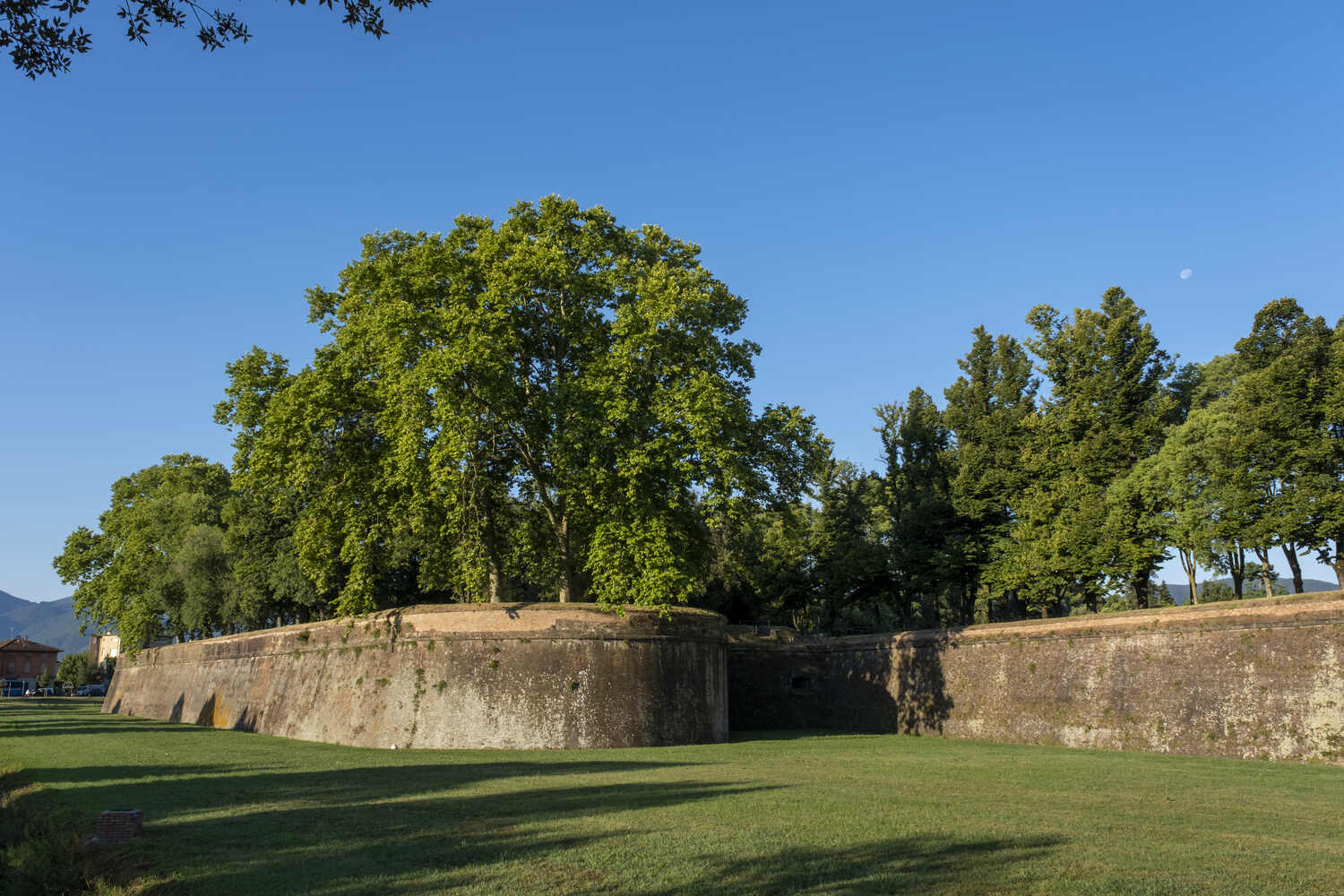
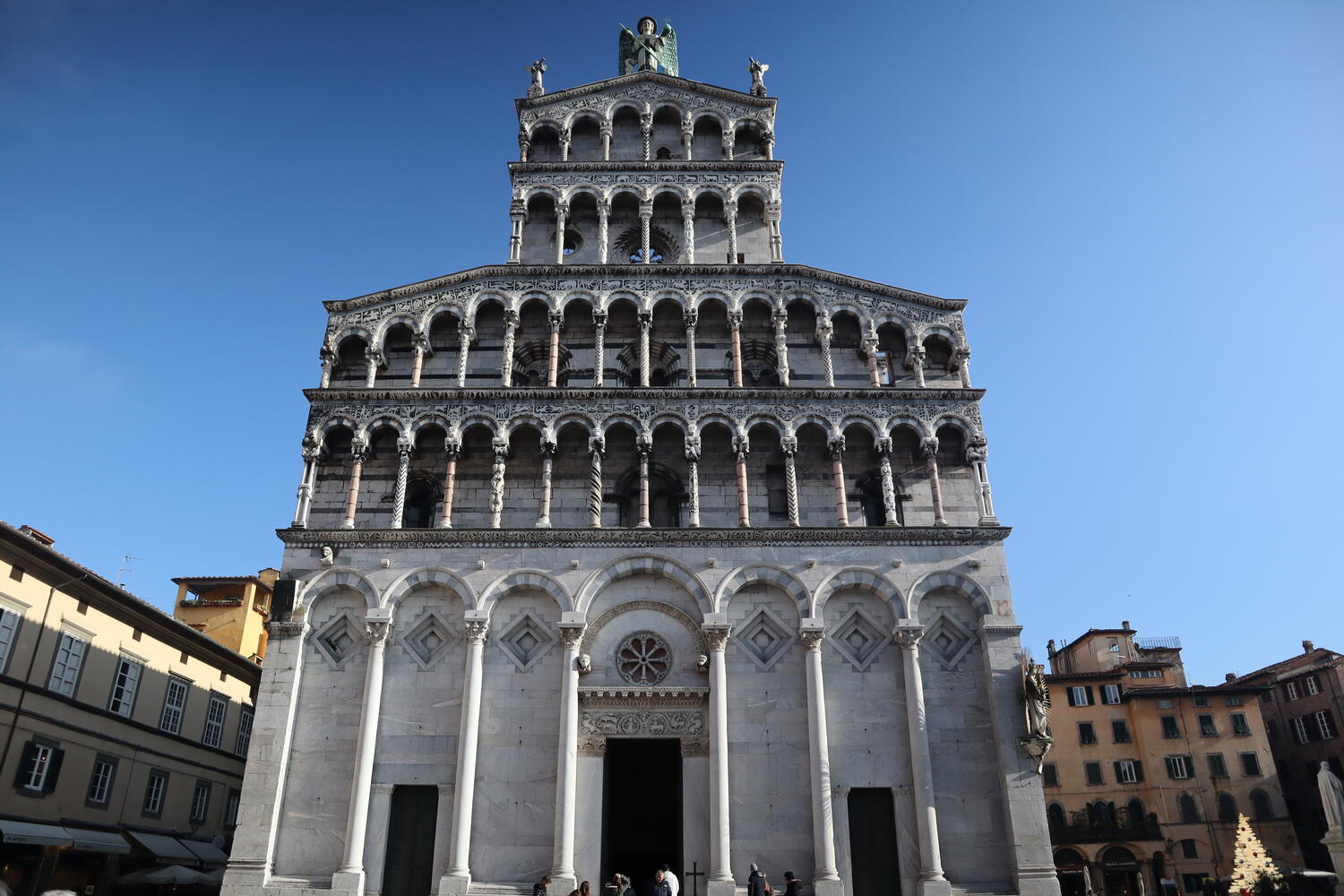
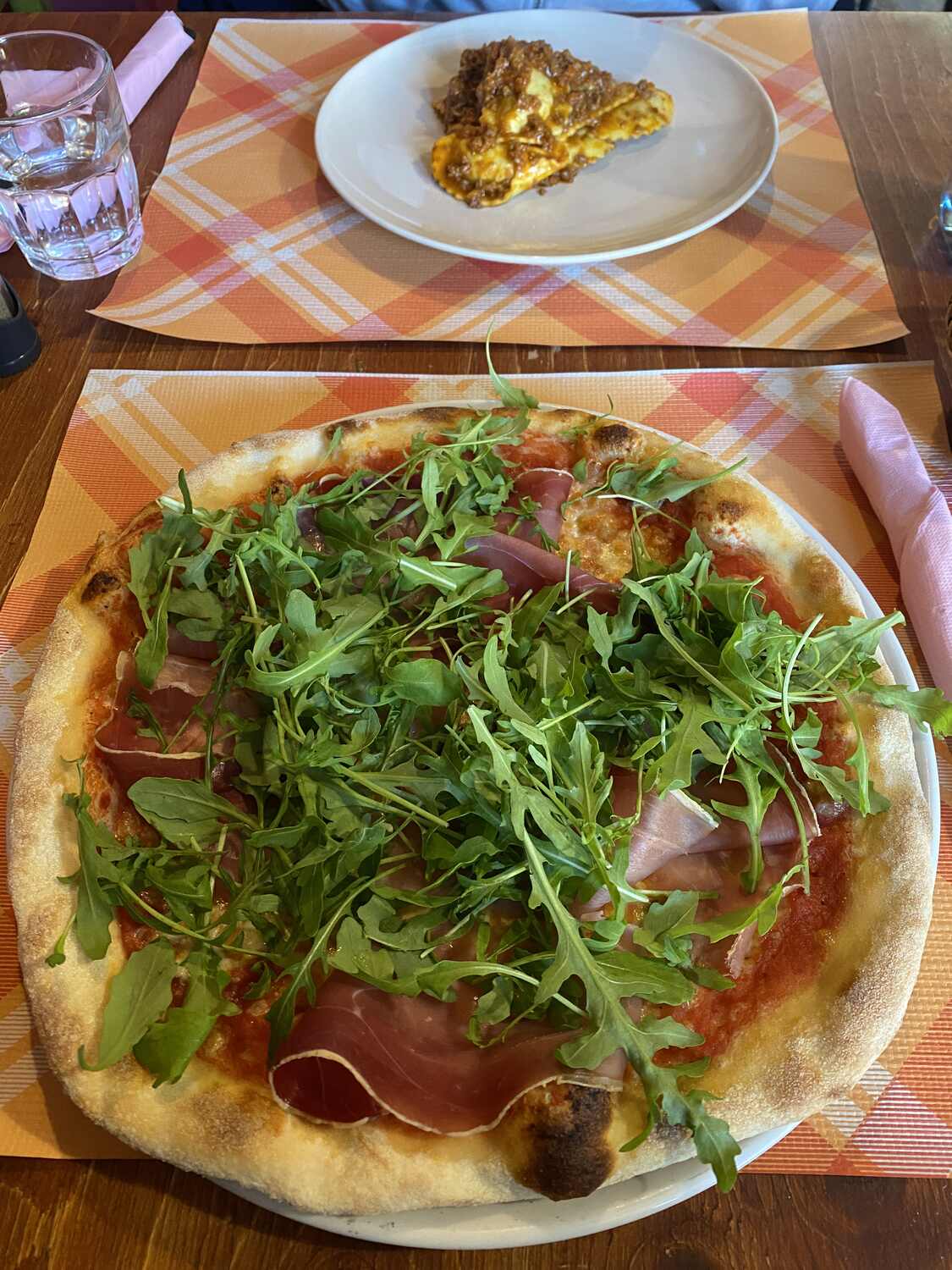
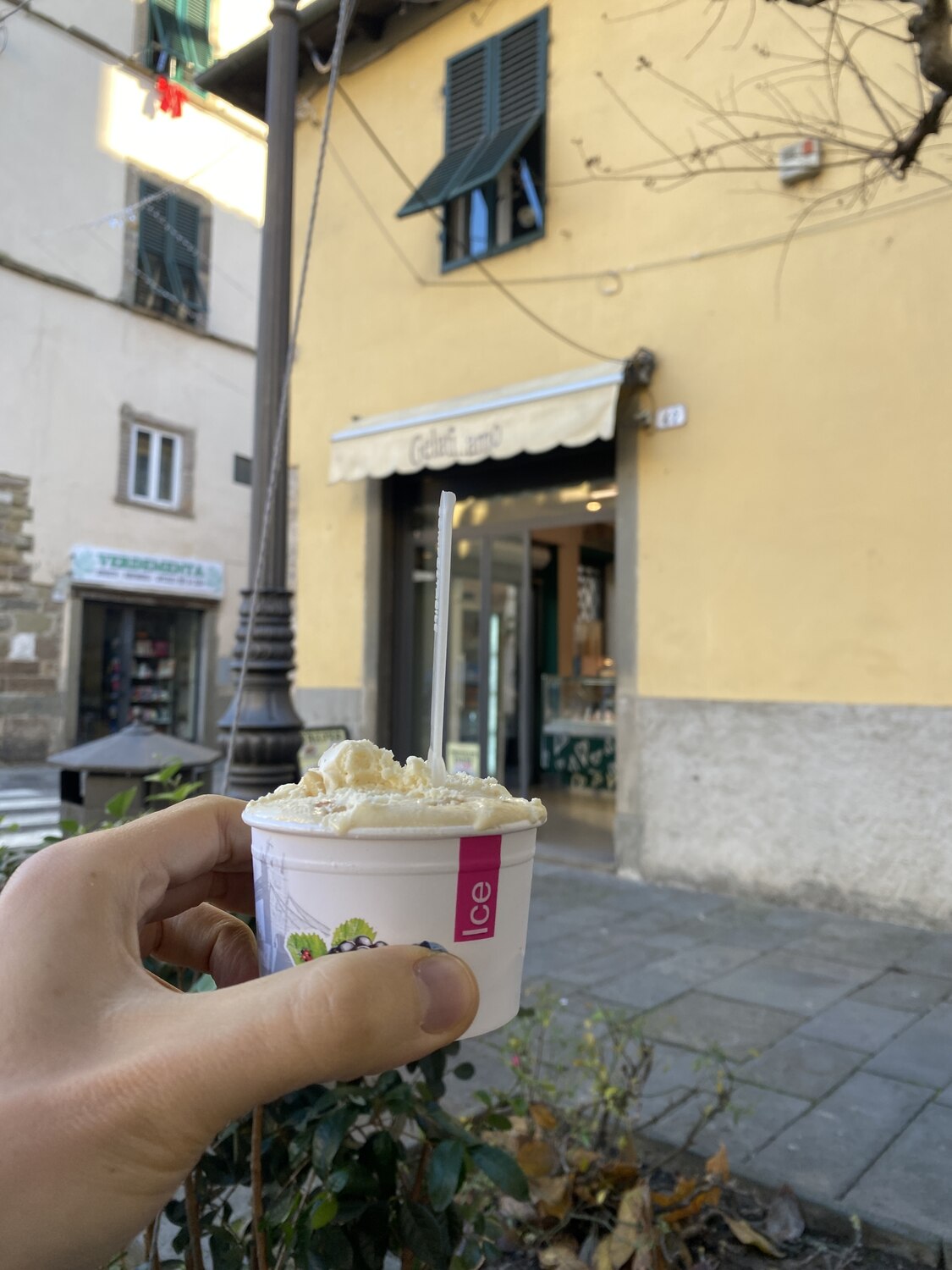
And, in the late afternoon, we make our way up to Torre delle Ore, the ancient clock tower which, unlike some of the other towers in Lucca, can be climbed.
The views from the top are breathtaking, and yes, the climb is well worth the effort. Then let yourself get (only mildly) lost in Lucca and discover hidden gems and soak in the Italian culture.
Also, bear in mind that Lucca’s intact city walls can be walked or biked and bikes are an option as well— what a fun way to do a circle of the city in case you have had time enough. Plus, climb the Guinigi Tower with trees on the top — challenge yourself again!
Last of all, head back to the station, zoom back to Lucca and perhaps spend one night here because it is so seriously good.
Day 4 is all about Siena and going there is easy by car or, if you don’t rent one, you can take the train from Lucca or join a tour from Florence.
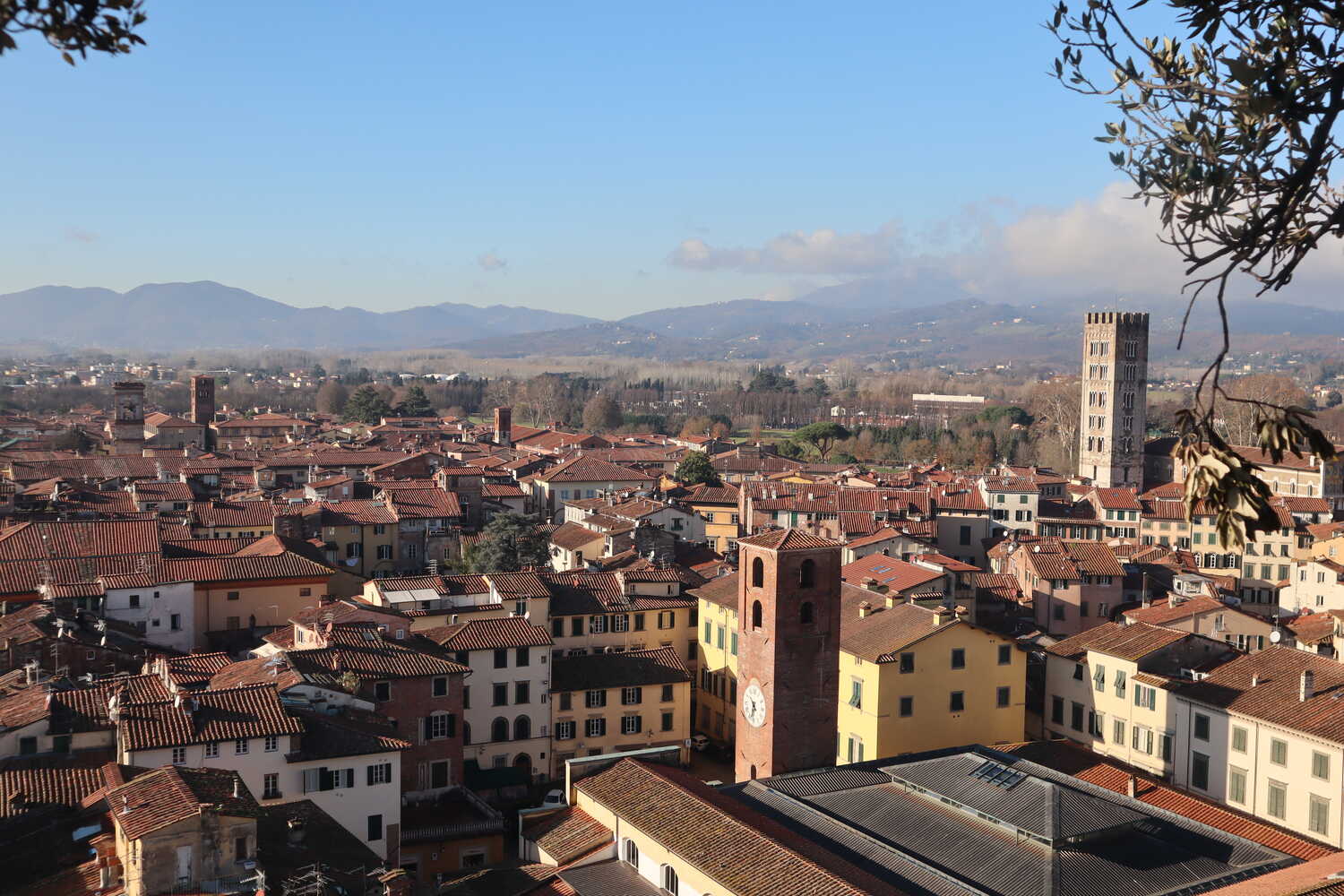
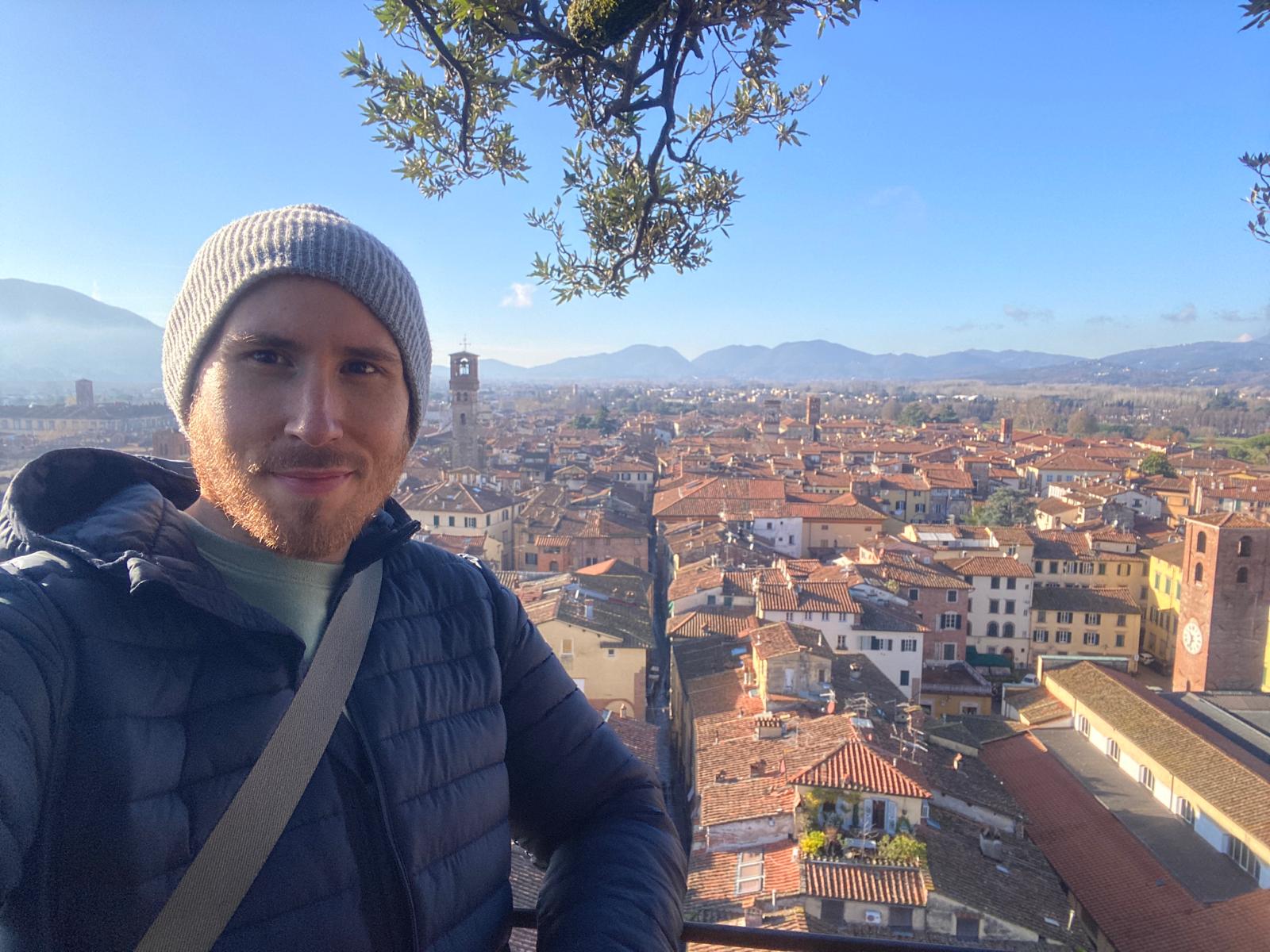
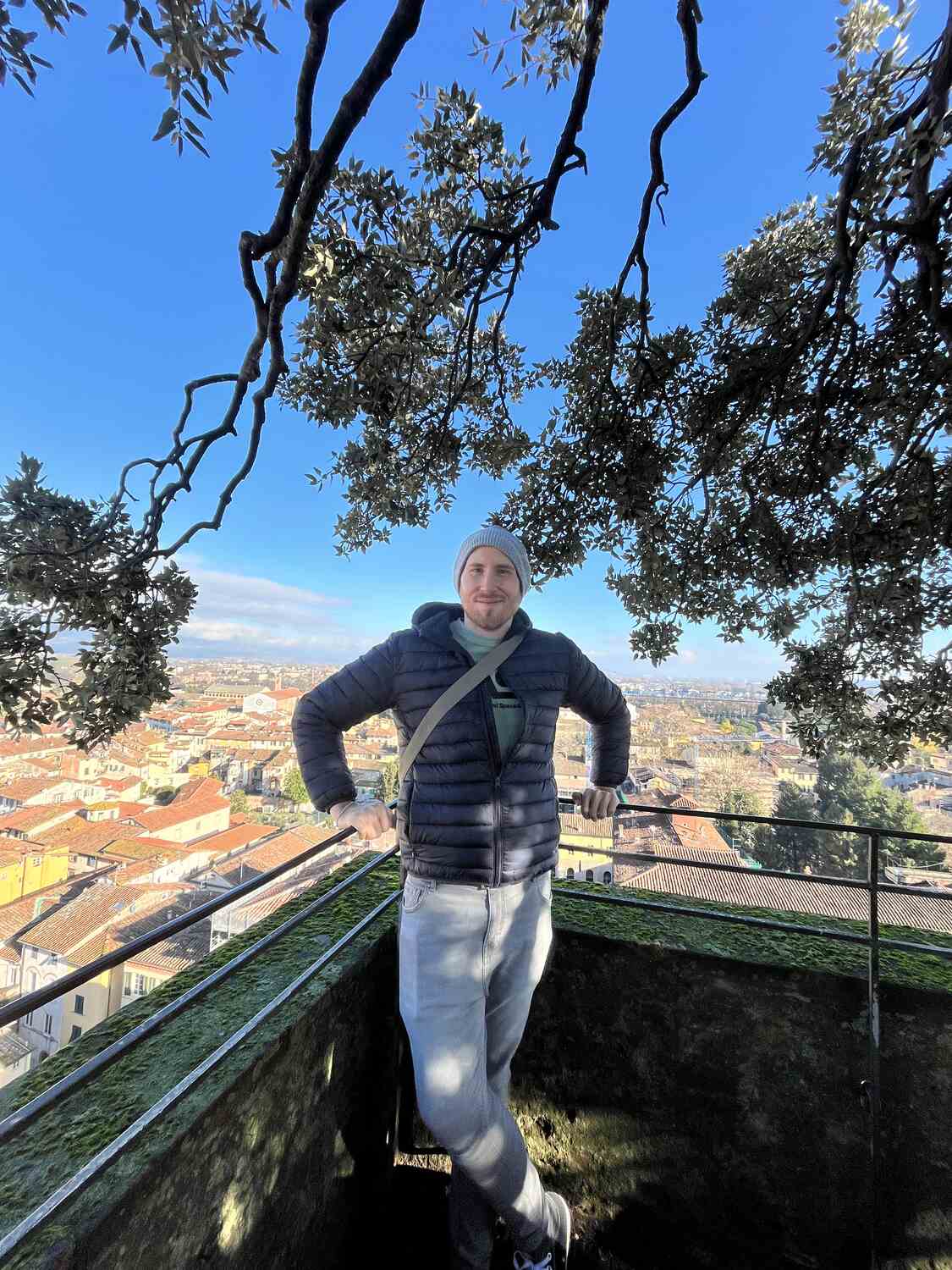
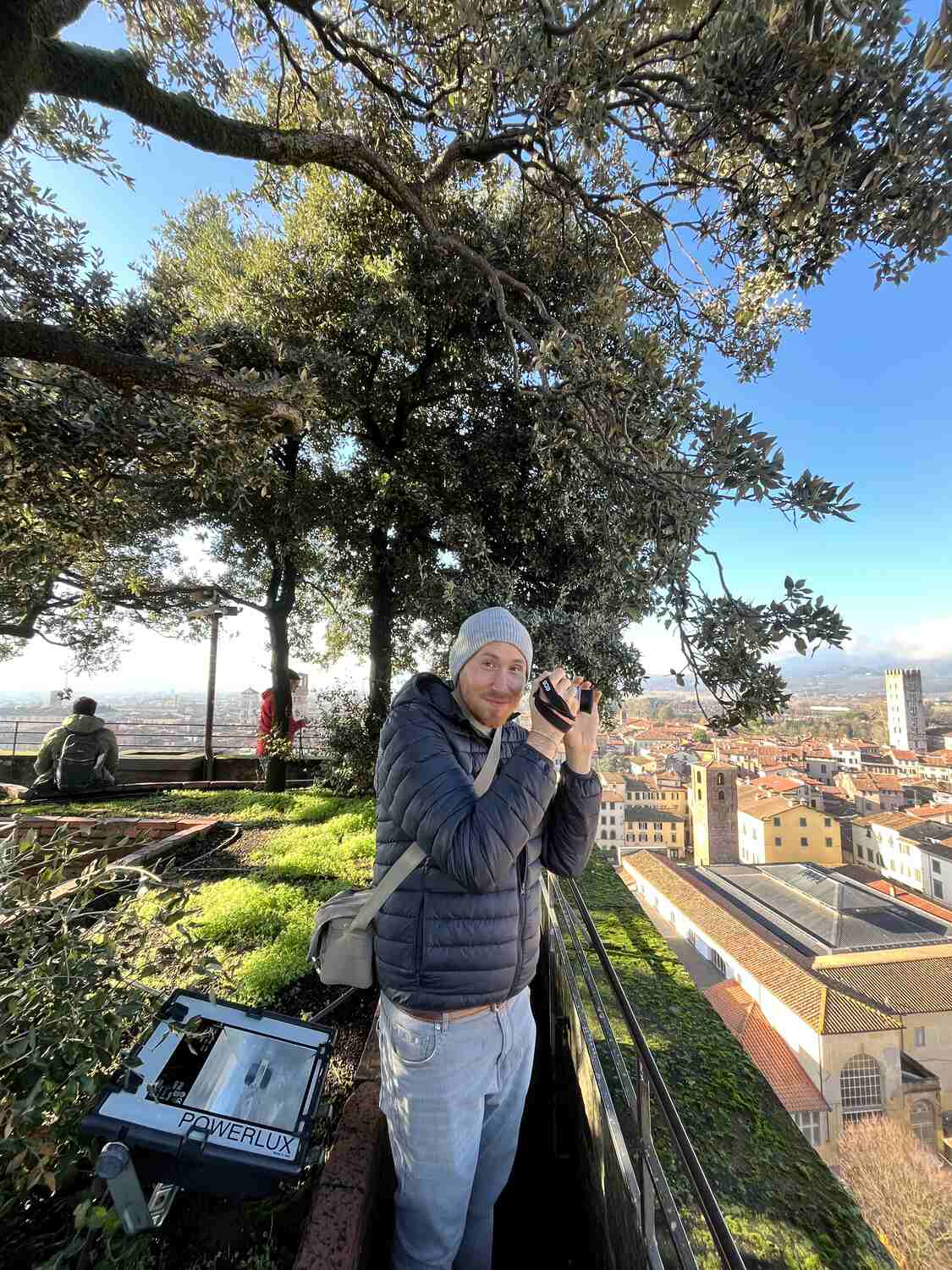
Where to Stay in Lucca
- Luxury: Hotel Alla Corte degli Angeli
- Mid-Range: Il Vicolo
- Budget: La Gemma Di Elena
Where to Eat in Lucca
- Trattoria Da Leo – You’re always sure to get the most delightful Lucchese dishes in the company of some casual and friendly staff.
- Osteria San Giorgio – Romantic dining with an emphasis on farm-fresh ingredients and local red as well as white wine.
- Buca di Sant’Antonio – This authentic restaurant has been receiving visitors since the 18th Century and is well-known for its historical charm and extensive menu offering regional specialties.
Best Tours in Lucca
Day 4: Day Trip to Siena
Siena is roughly 70 miles (113 km) and about an hour and a half drive from Florence and is easily accessible by car, train, or prearranged tour.
If you drive, it’s the perfect opportunity to enjoy the Tuscan landscape with the iconic rolling green hills. Parking is available right outside the city center. We parked at this one and was centrally located and not too expensive.
By train, the journey takes about 1.5 hours, and trains run frequently.
Note: If you don’t rent a car, the best way to visit Siena and Tuscany is to join this tour, which includes a stop in Siena, San Gimignano, and Pisa.
Once you’re in town, head to the Piazza del Campo, at this point, a fundamental part of the city. Yes, the Palio horse race is organized here.
So take your time to look at Fonte Gaia, the large fountain placed in the middle of the square, along with all the surroundings, and take plenty of photos.
Shortly following this, we were able to enter the Siena Cathedral (Duomo di Siena), a Gothic masterpiece featuring intricate façades and decorated interiors, including fragments of Michelangelo sculptures and Donatello creations.
I highly recommend booking a combined ticket for the cathedral complex in advance to access the Piccolomini Library and the Baptistry.
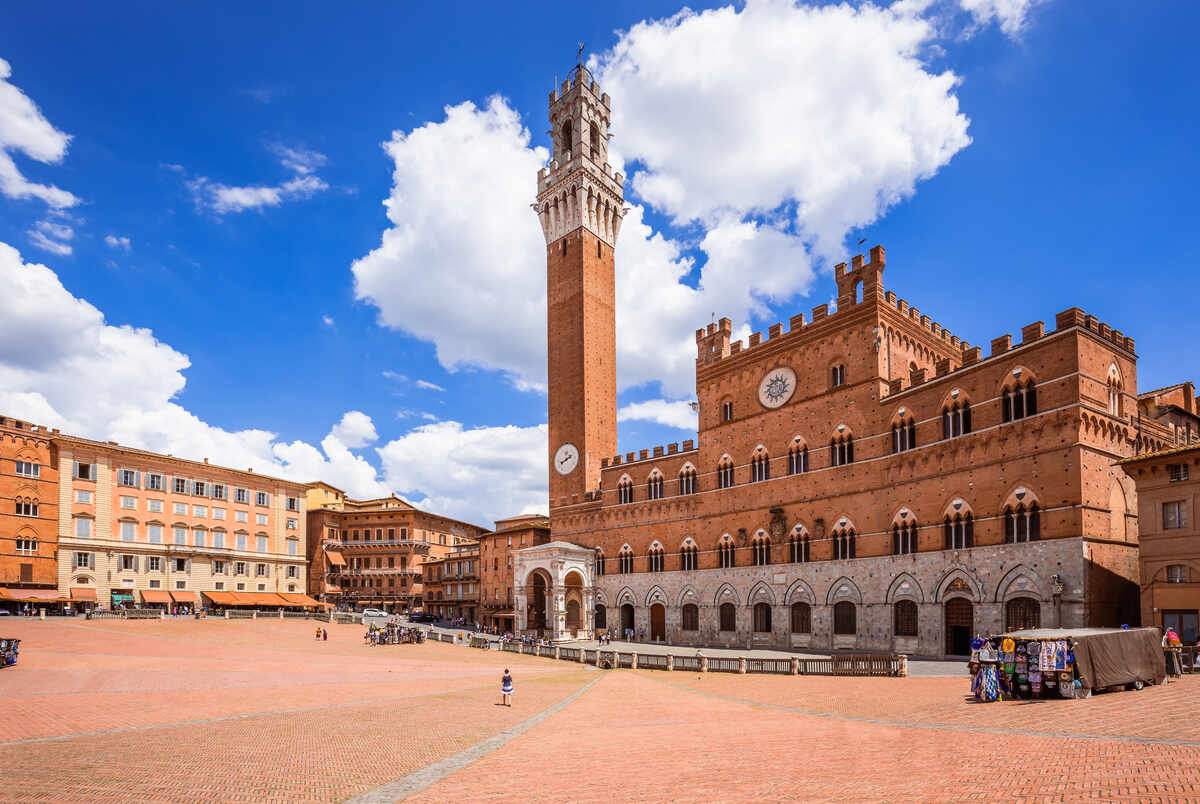
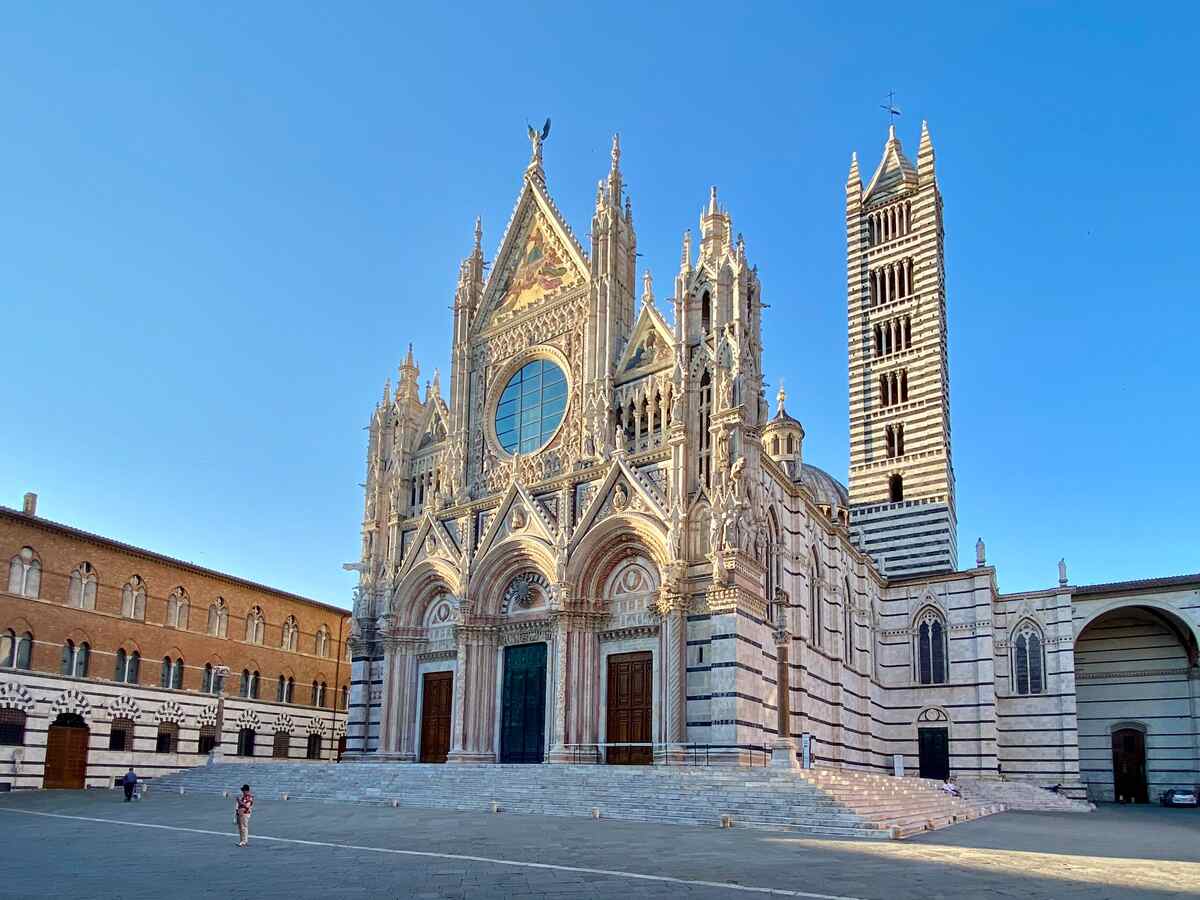
Piazza del Campo creates a traditional Sienese lunch experience with its trattorias, and you can try local specialties like pici, a favorite of pasta with ragù, and a well-known sweet – the Panforte.
We had lunch at Prètto Prosciutteria e Convivio and the pasta and sandwich were incredibly tasty!
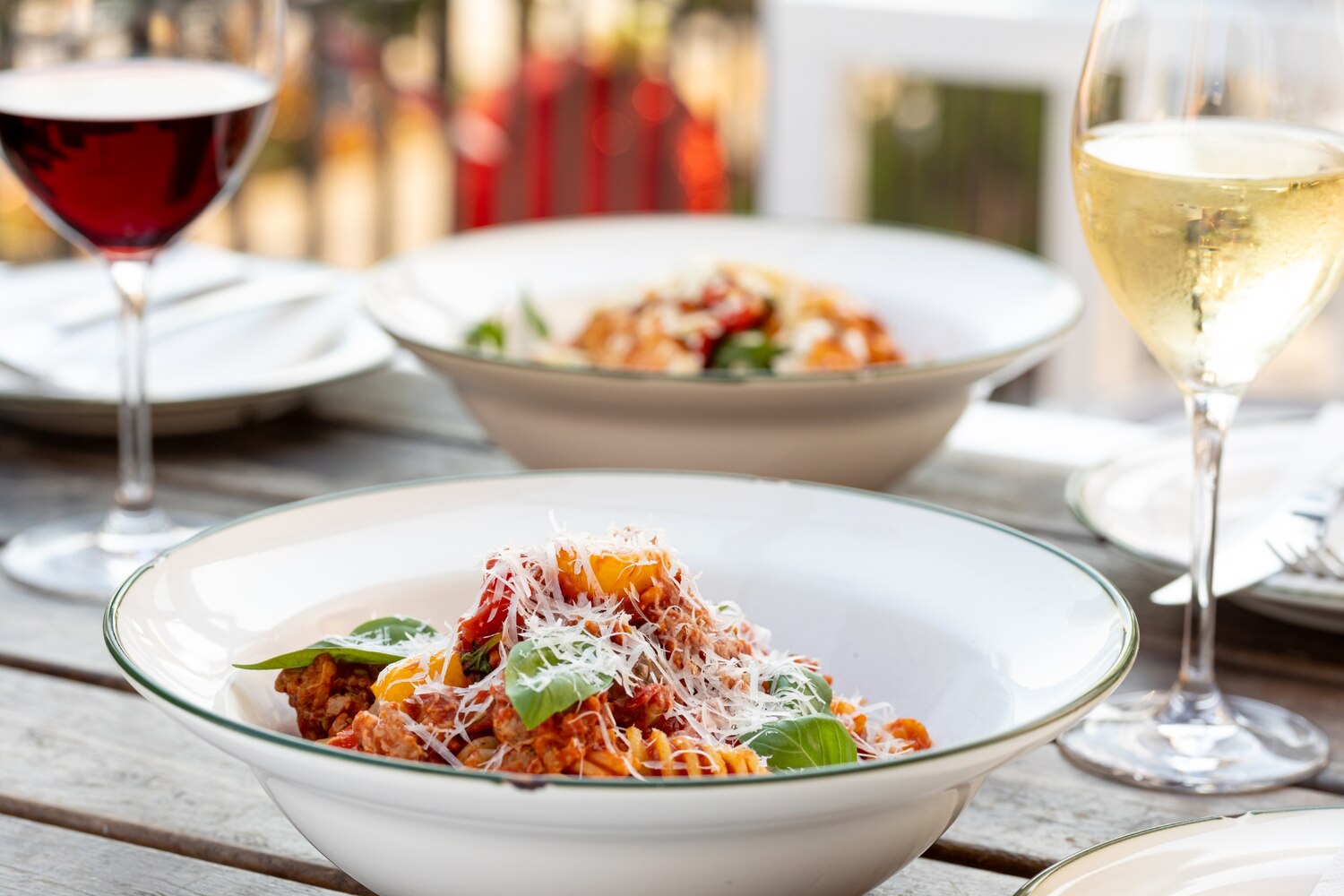
Post-lunch, tour the Museo Civico inside the Palazzo Pubblico, where you will find famous frescoes depicting the historical government of Siena.
Next, I would recommend scaling the Torre del Mangia to get a panoramic view of the city and the Tuscan hills beyond.
Spend the rest of the afternoon exploring the winding alleys of old Siena at your leisure, and you’ll find secret spots to learn and explore more of the wealthiest history in Tuscany.
The final stop of the day is a visit to the Basilica of San Domenico, a typical Gothic church where the relics of St. Catherine of Siena are kept.
Once evening sets in, have dinner at one of the trattorias around, perhaps trying white or red wine like Chianti or Brunello
I recommend staying in Siena for the night to continue with your Tuscany itinerary on Day 5. A tip I have is to book early as hotels in town sell out super fast and you want to secure your room as soon as possible.
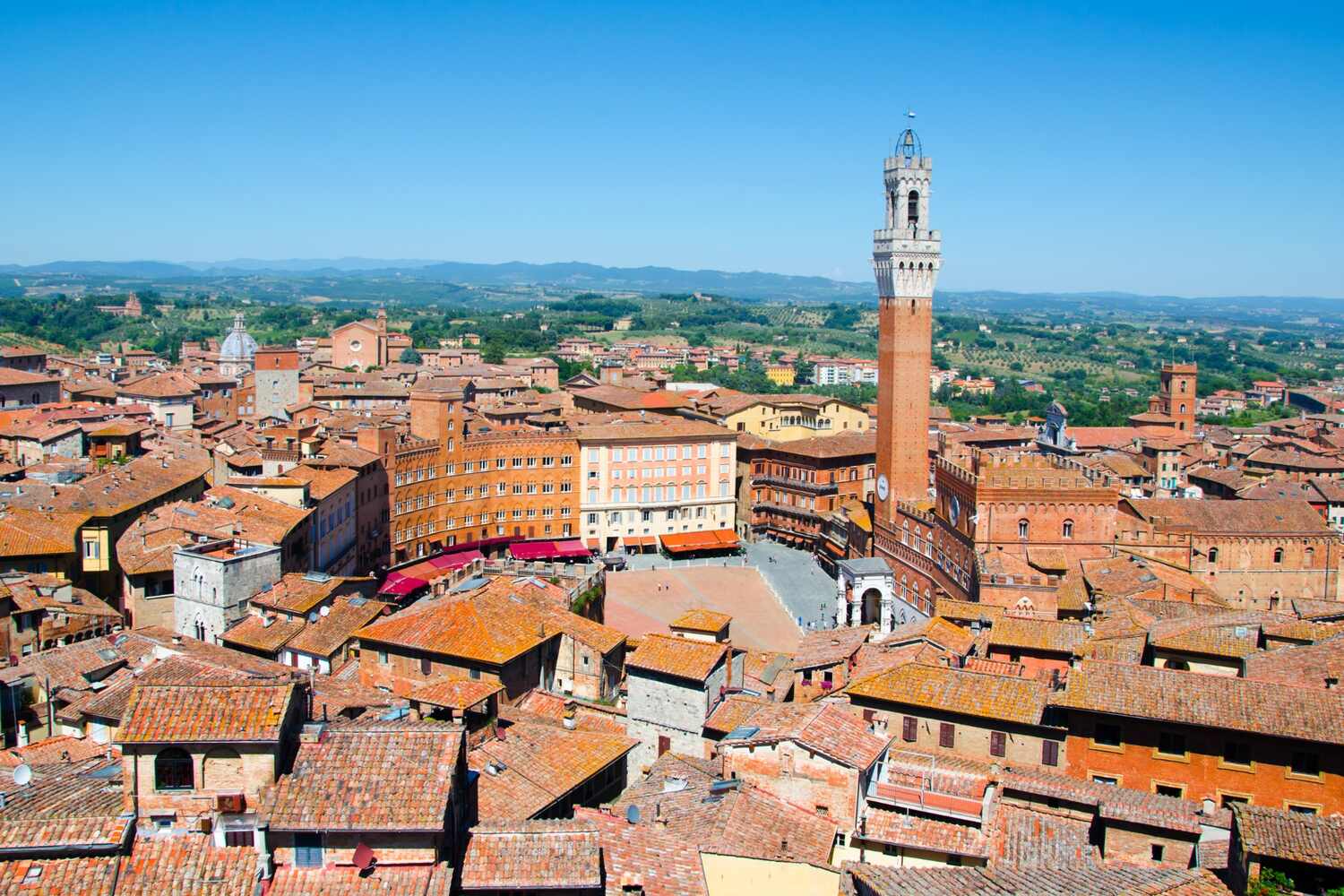
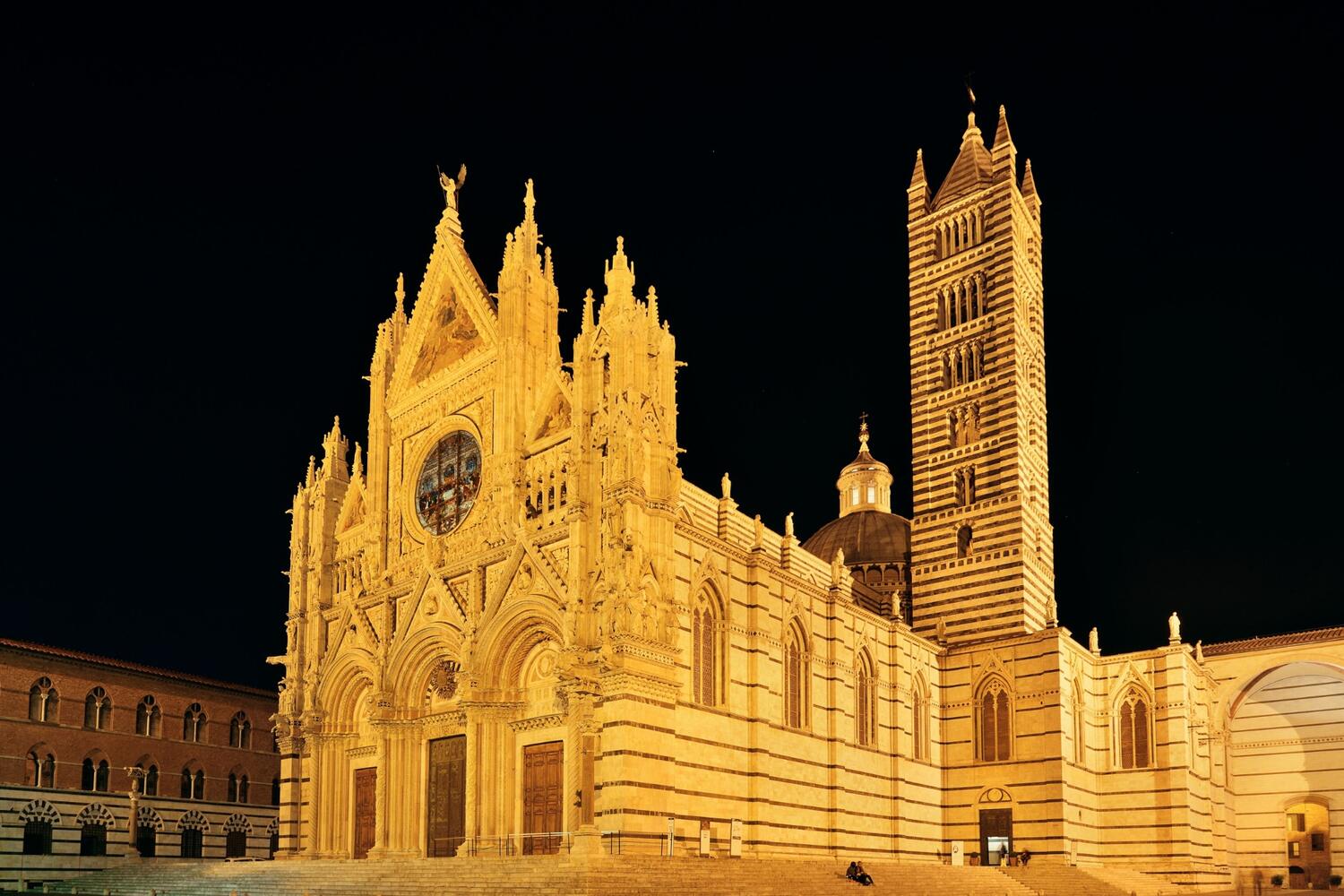
Where to Stay in Siena
- Luxury: Hotel Certosa Di Maggiano
- Mid-Range: Albergo Chiusarelli
- Budget: All’ombra della Torre
Where to Eat in Siena
- Prètto Prosciutteria e Convivio -The warm, welcoming and memory-making stop that you will be dining in with aged wines and some exceptional truffles during the season.
- Osteria Le Logge – This restaurant started out as a pharmacy but turned into a restaurant where traditional recipes and creative modern techniques meet up.
- Antica Osteria da Divo – Set into ancient Etruscan ruins, this place gives a special setting and is particularly strong in Sienese cooking.
Best Tours to Siena
Day 5: San Gimignano, Volterra, Cortona
Day 5 becomes a bit more complex if you don’t have a car since, at this time, there is no guided tour that reaches Cortona. But, you can still see San Gimignano and Volterra through a tour from Siena.
That being said, it’s still possible to see San Gimignano and Volterra with this tour from Siena.
Here below, I’ll go through the itinerary you’d do with a rental car, and if you join the tour, the itinerary is available in their description!
Start the day driving to San Gimignano, a UNESCO World Heritage site, famous due to its fourteen medieval towers showing its historic roots.
Make sure that you are quick to arrive in order to avoid the crowds, as San Gimignano is one of the most visited towns in Tuscany.
Scroll along to Piazza della Cisterna, which takes its name from the pedestal of the central well. Then stop for a while to admire the views of the surroundings, as this is definitely a perfect photo stop.
After that, visit the Collegiate Church of San Gimignano is Romanesque church, known for its world-famous cycle of murals that recount various stories both from the Old and New Testament, reflecting the town’s rich religious history.
For a lunch option, you can try one of the local restaurants serving dishes made of saffron and Vernaccia di San Gimignano, both typical products of the area.
A dish featuring wild boar would provide a taste of traditional Tuscan game, and Le Vecchie Mura is your best bet, and they have incredible views!
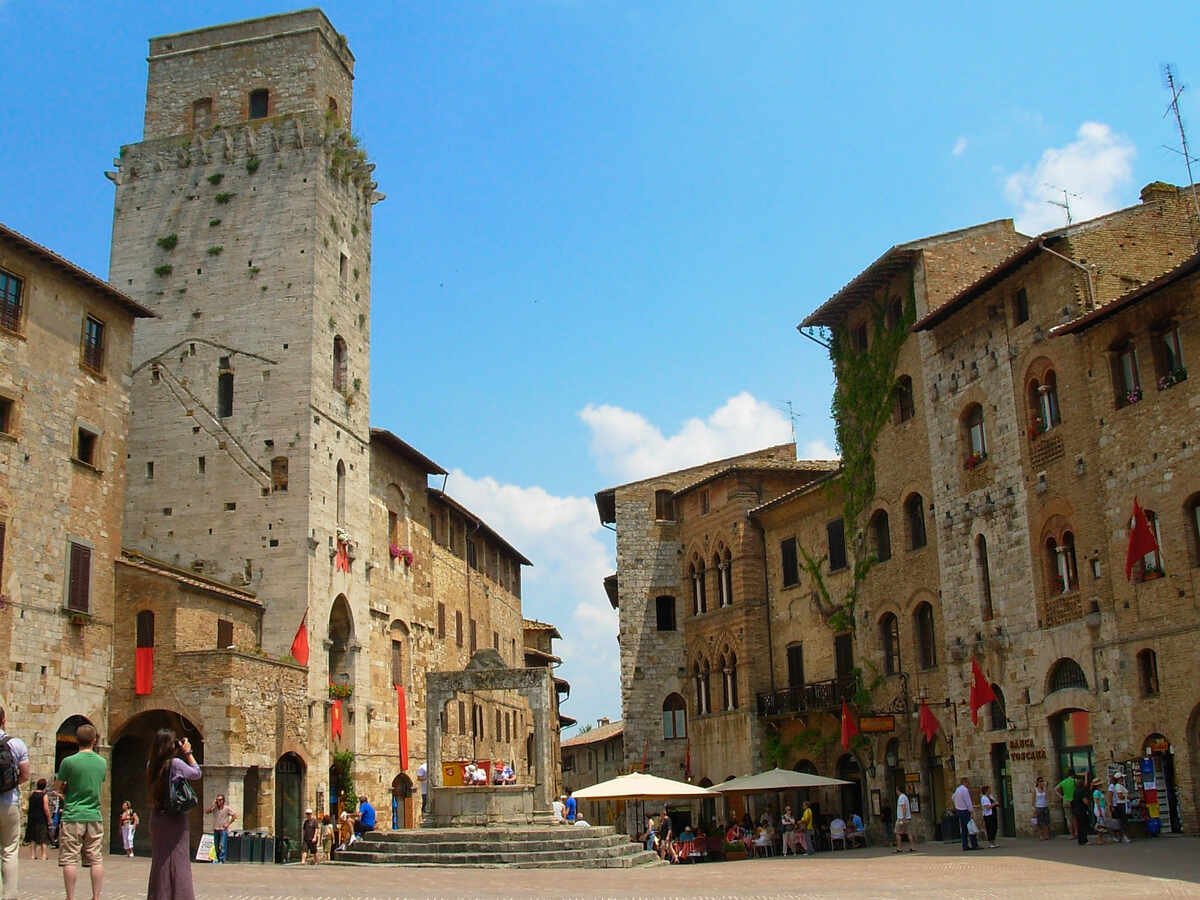
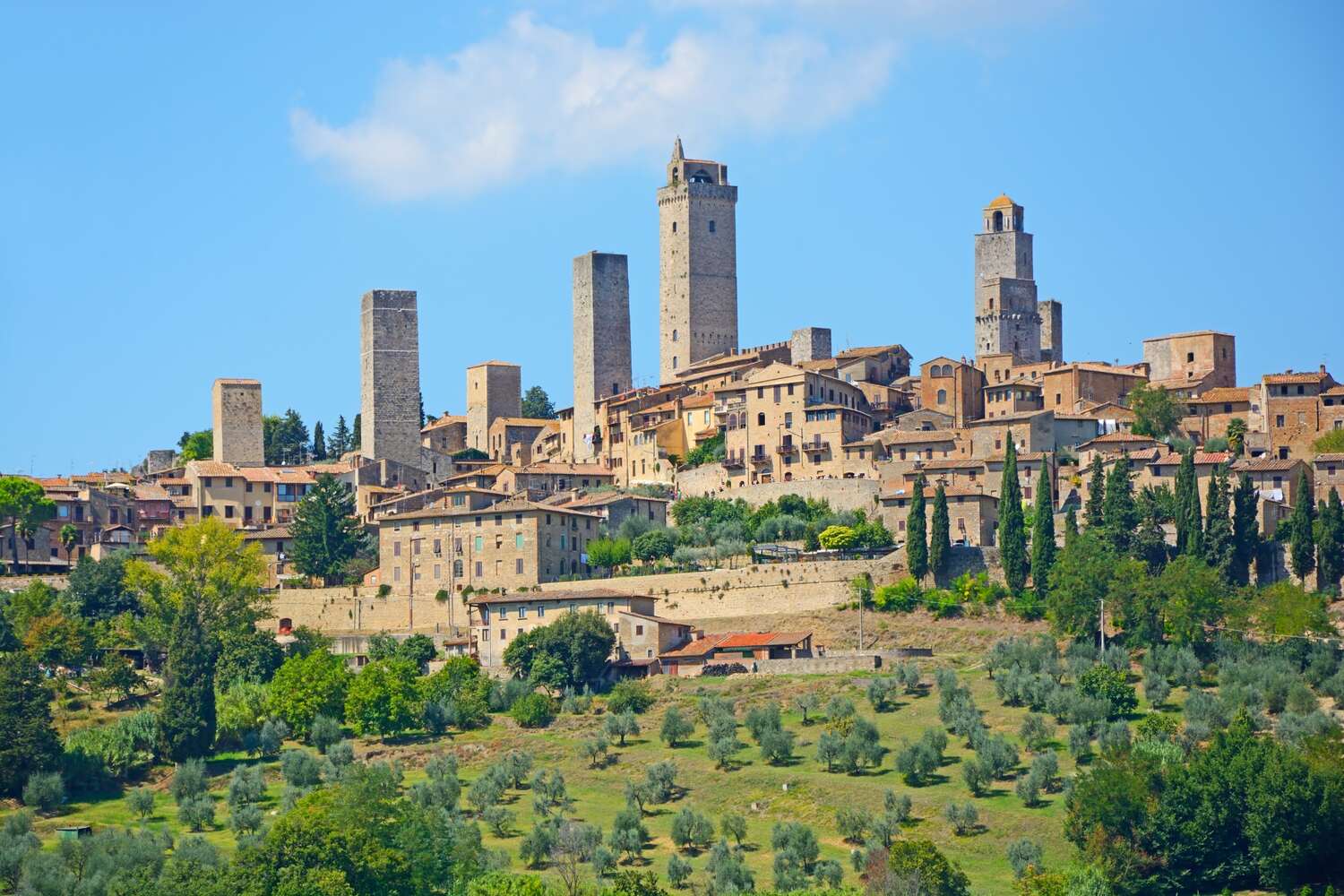
In the afternoon, go to Volterra, which is the highest town in Tuscany surrounded by massive walls around the city lying on a hill, and with some astonishing sceneries for the whole region.
Just approx 30-40 minutes to drive with a rental car, so it’s an easy and quick way to get out of town! The history of Volterra comes from the Etruscan, Roman, and medieval periods.
Start with the Piazza dei Priori and the Etruscan Museum (Museo Etrusco Guarnacci), which houses one of Italy’s largest Etruscan artifact collections — as well as the famous “Shadow of the Evening” bronze statue.
Afterward, walk to the well-preserved Roman Theatre, discovered in the 1950s, to step back in time with its magical history. Don’t head home without seeing this one-of-a-kind museum!
Make sure to get a piece of alabaster art for a unique souvenir of your visit.

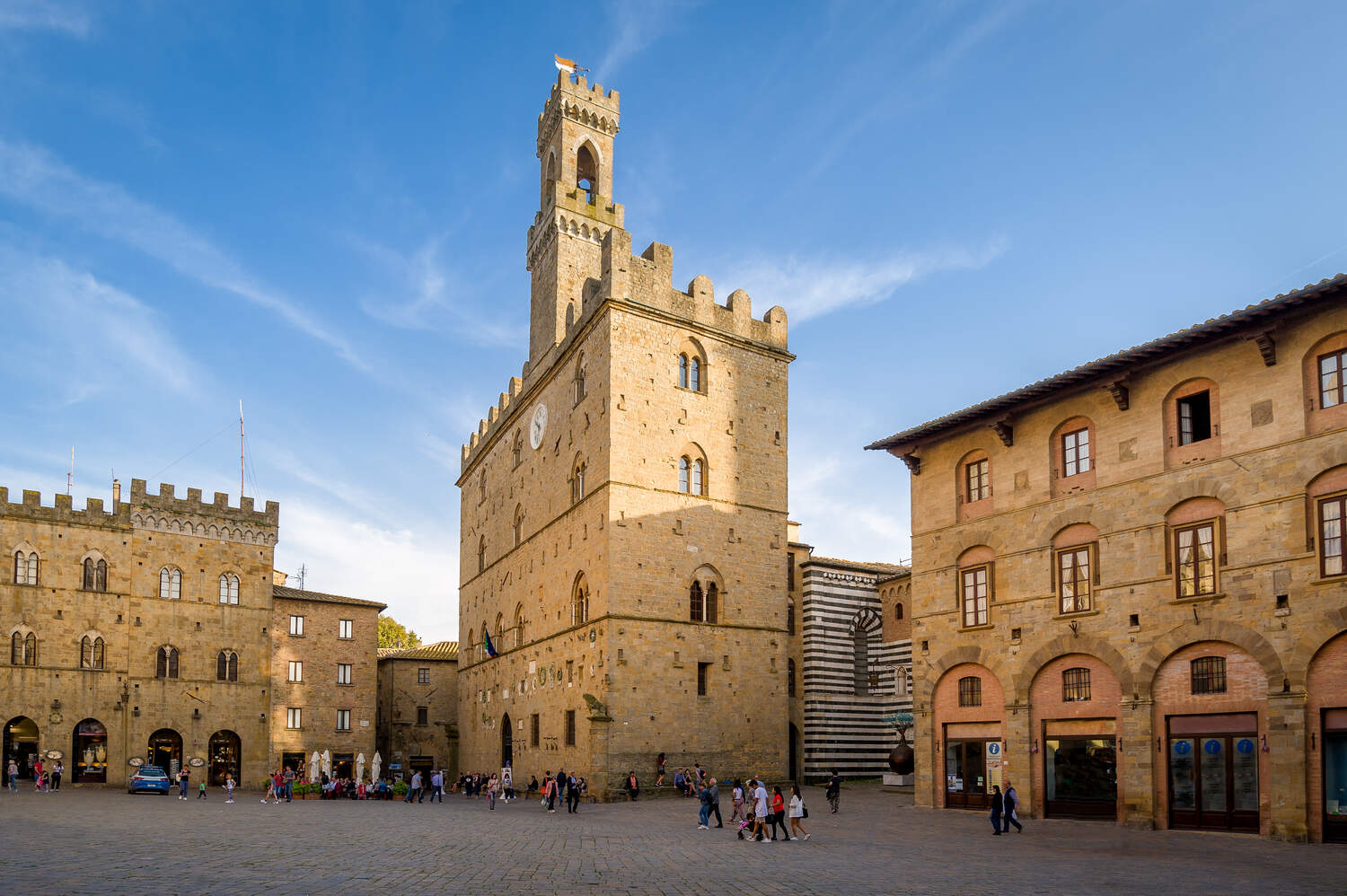
By the late afternoon, you end up in Cortona, which is in southern Tuscany. Between Volterra and Cortona today is your chance to see the captivating scenery featuring the winding hills, olives, and vineyards.
Walk around Cortona and visit the Piazza della Repubblica (Town Hall Square) – It is Cortonese heart with its face Palazzo Comunale (Town Hall educational center).
For dinner, find an Osteria, grab a seat check out local meals like pici pasta – it’s a thick unique pasta made with a robust meat sauce, or some dishes to highlight their Chianina beef, a prized local cattle.
If you have the time, a visit to the Basilica of Santa Margherita is well worth it- not just for the religious aspect, but primarily for the breathtaking view over the entire Val di Chiana and Lake Trasimeno – especially at sunset.
Additional Notes:
- There’s a ZTL Zone in each town, so if you are driving, park outside and walk.
- We suggest getting up in the early morning to enjoy the three cities so you can see them more leisurely and go at your own pace
- If you’ve booked the tour, you will return to Florence or Siena, or if you drove yourself, you can spend the night in Cortona, ready to take a road trip to the Val D’Orcia on Day 6.
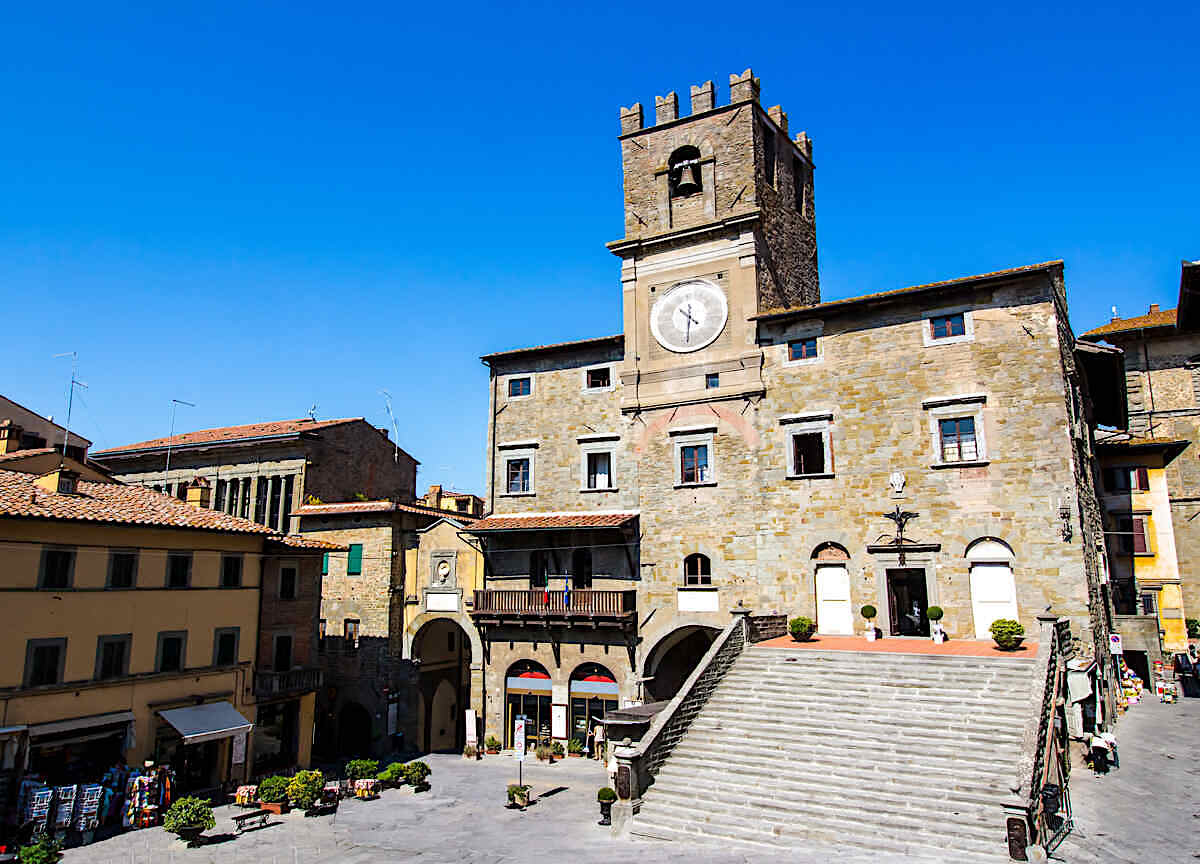
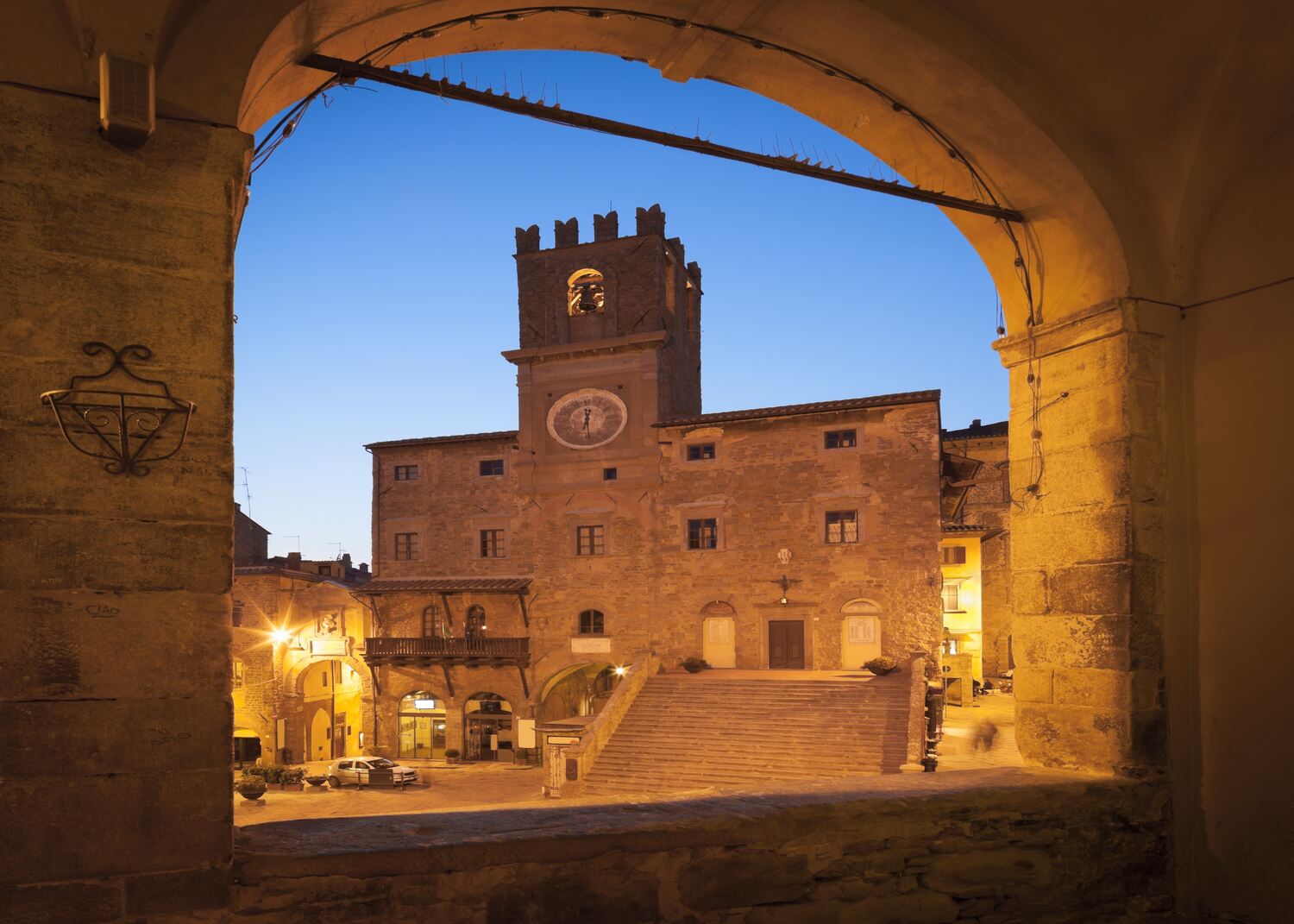
Where to Stay in Cortona
- Luxury: Monastero Di Cortona Hotel & Spa
- Mid-Range: Hotel San Luca
- Budget: Le Residenze Ristori
Day 6: Val D’Orcia (Montepulciano, Montalcino, Pienza)
Val D’Orcia is the most visited place in Tuscany and possibly you pictures of the rolling hills and classic Tuscan houses shared all over the internet. That is what Day 6 includes and you will love your day under the Tuscan sun!
Here are the options: If you rent a car, you can consider driving between Cortona to Montepulciano If you have no car, you can join this tour from Siena to Montepulciano and Siena, which is the best way to visit both towns.
A UNESCO World Heritage site, the Val d’Orcia region is typified by rolling hills, vineyards, and cute medieval towns that swirl in such a perfect picture postcard, and coming here will be the highlight of your trip to Italy!
In the morning, begin your journey through the Piazza Grande and the vineyards of the beautiful Montepulciano known as a Renaissance hill town and for its Vino Nobile wine.
Sitting at the very top is a massive fortress and if you go up to the walls beside the gate, you get a bird’s eye view of Tuscan and Umbrian countryside.
Lastly, we recommend tasting some typical wines of the region and visiting a local “cantina” that in some cases are entire budget dishes themselves.
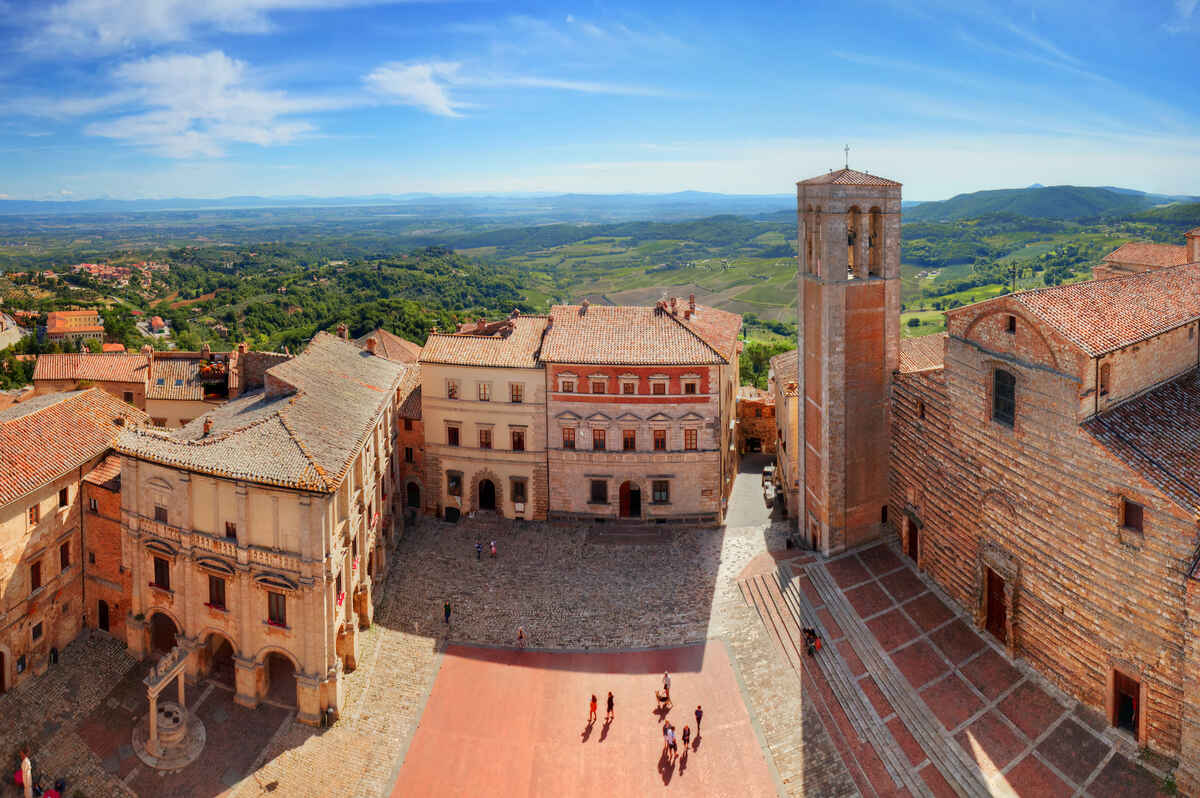
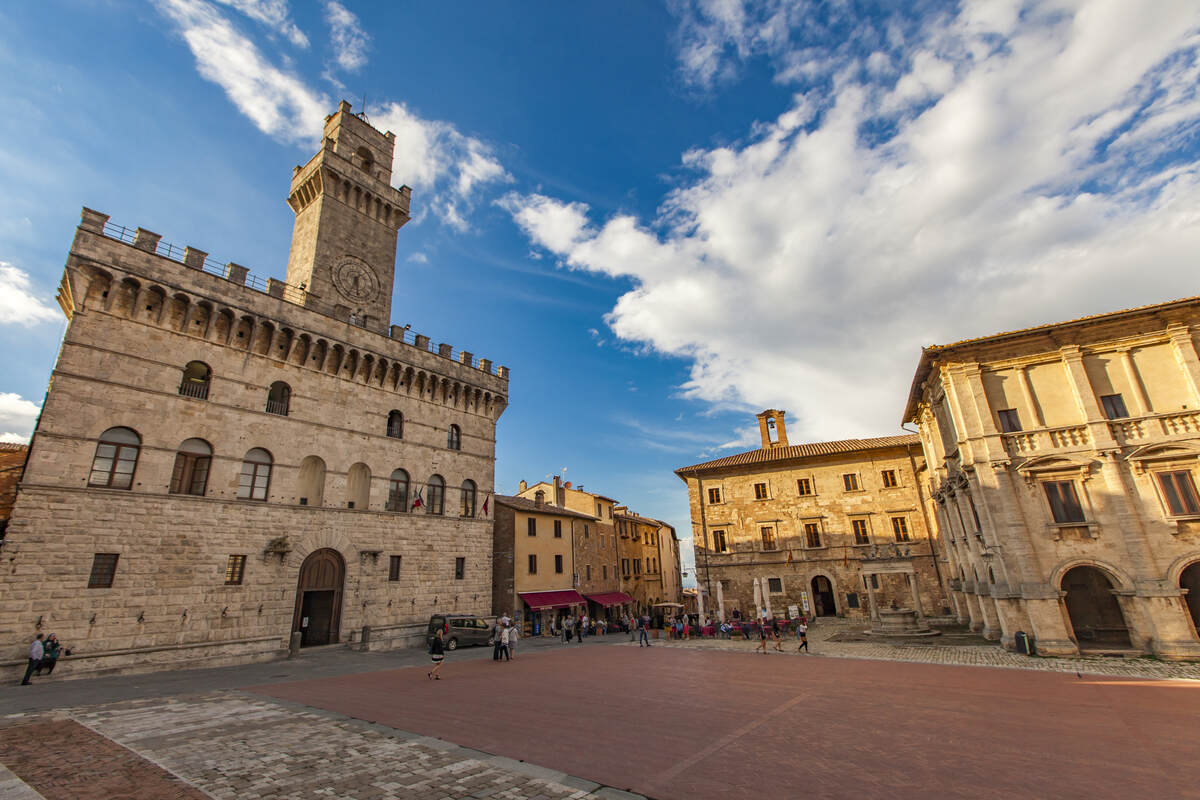
Following Montepulciano, travel to Montalcino – a famous wine town that’s only about 45 minutes away from Montepulciano. Montalcino’s wines have gained a global reputation with Brunello di Montalcino being the most well-known wine from Montalcino.
A delicious lunch with a glass of Brunello isn’t complete without a visit to the local osteria in Montalcino. You can expect dishes to include classic rabbit or polenta at Il Moro – The perfect place for lunch.
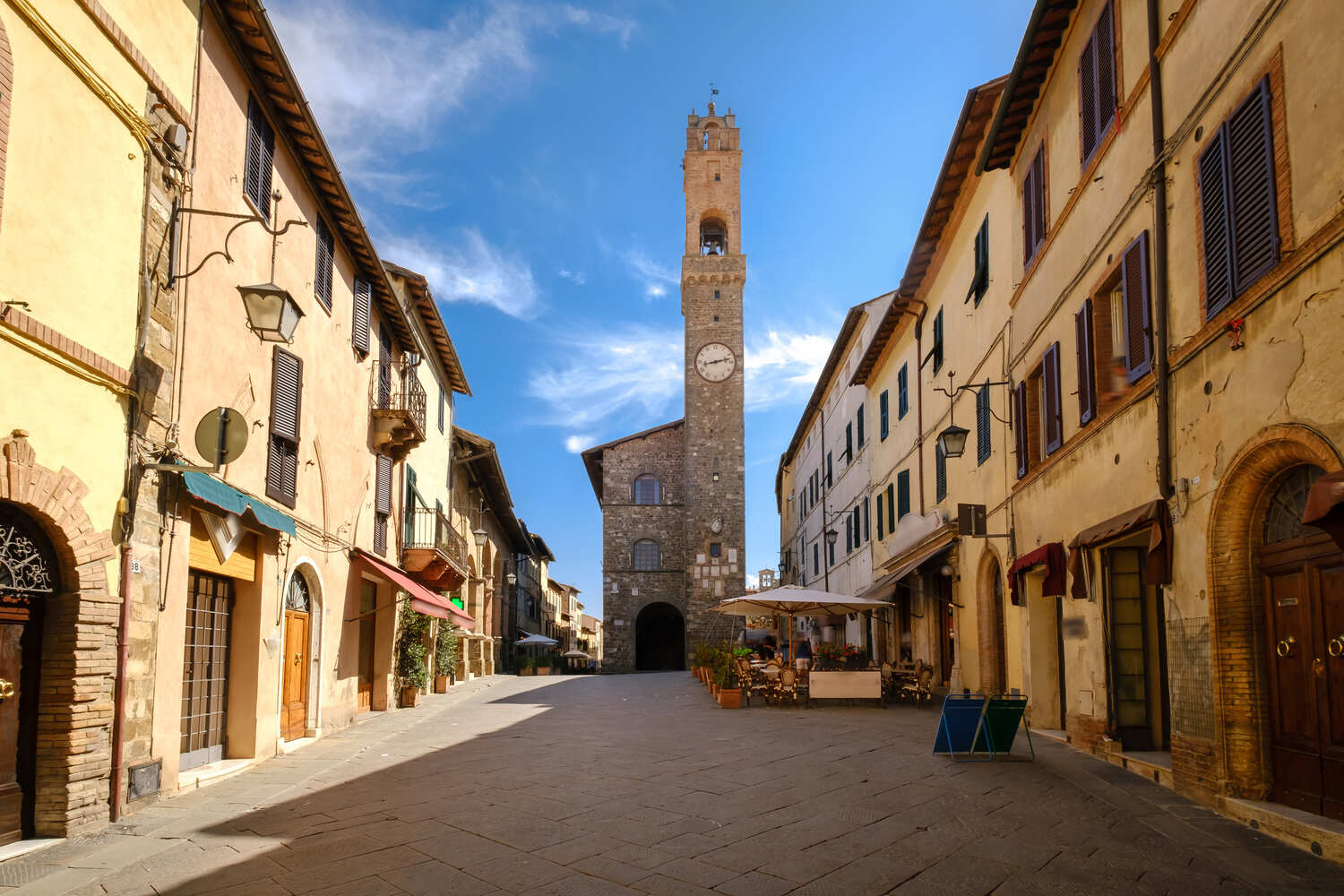
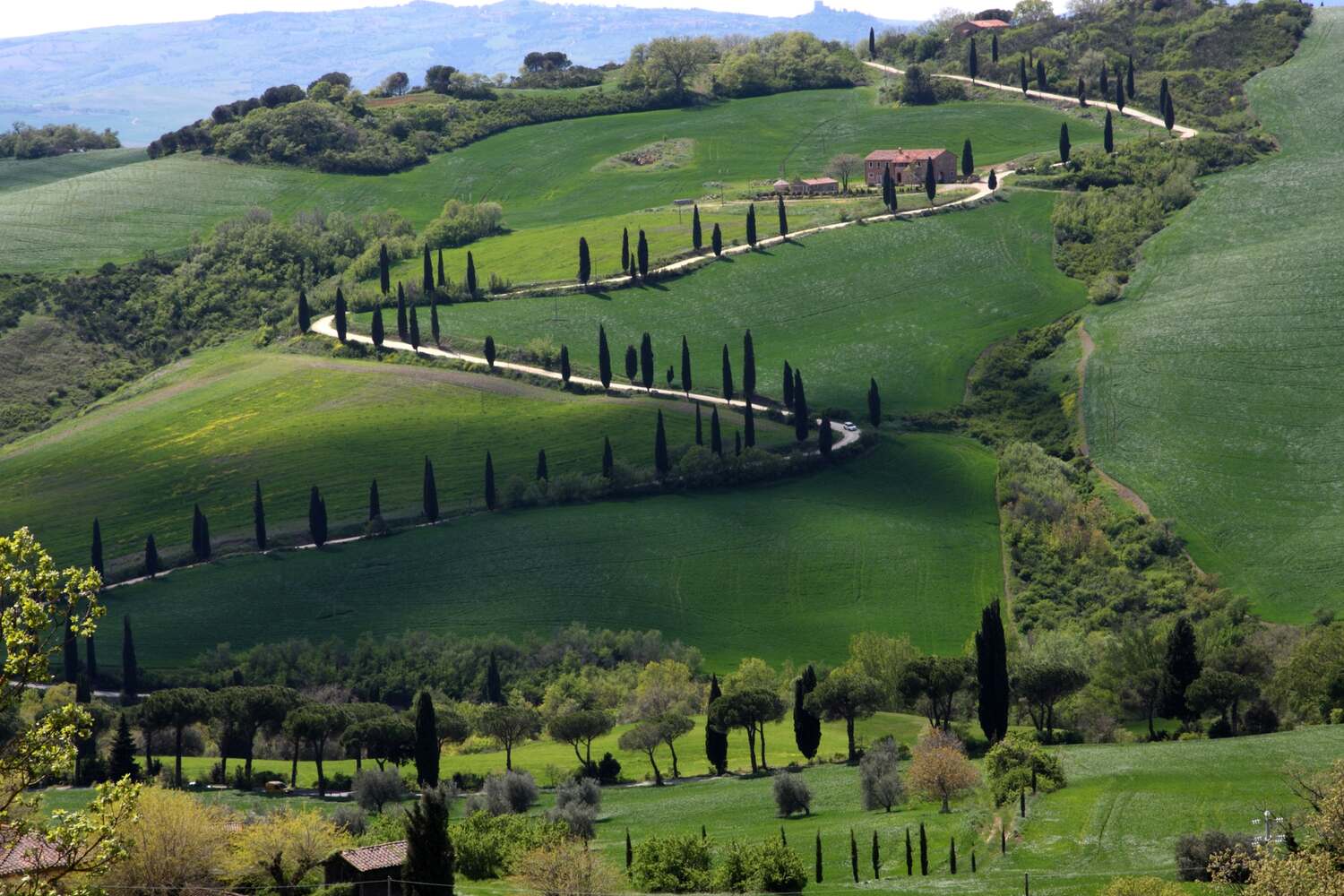
Next is Pienza, also a short drive from Montalcino. Pienza is a small hill town that was built during the Renaissance period on the idea to create the ideal city.
The main square, Piazza Pio II, is surrounded by beautiful buildings like the Palazzo Piccolomini, which has a great view of the Tuscan hills from its garden.
Pienza is also home to pecorino cheese, a cheese made from sheep’s milk. You can easily taste and buy this cheese in one of the many shops in Pienza.
Visiting Pienza provides a chance to see history, architecture, and taste of the great local food all within a lovely spot that is almost like being inside a Tuscan postcard.
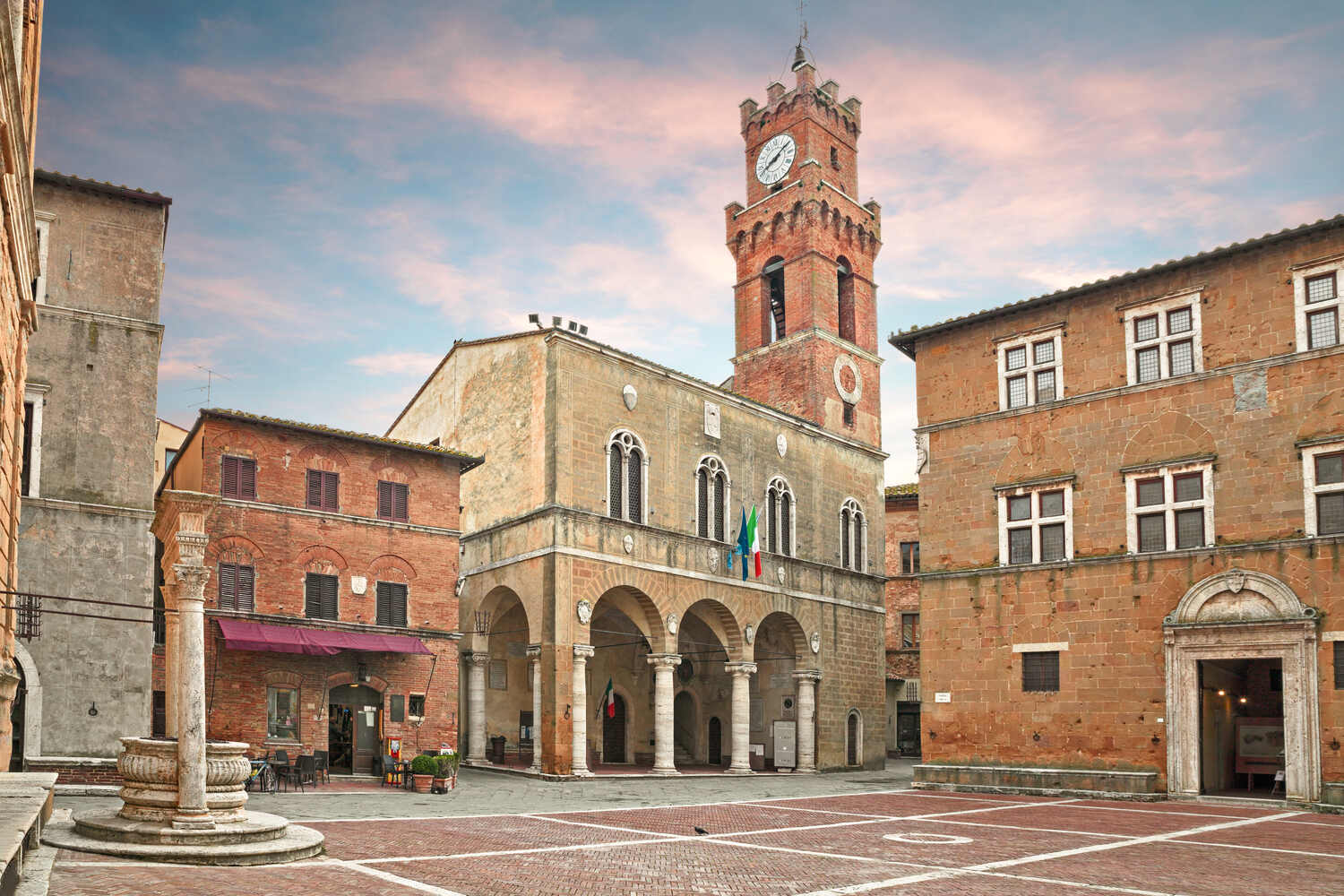
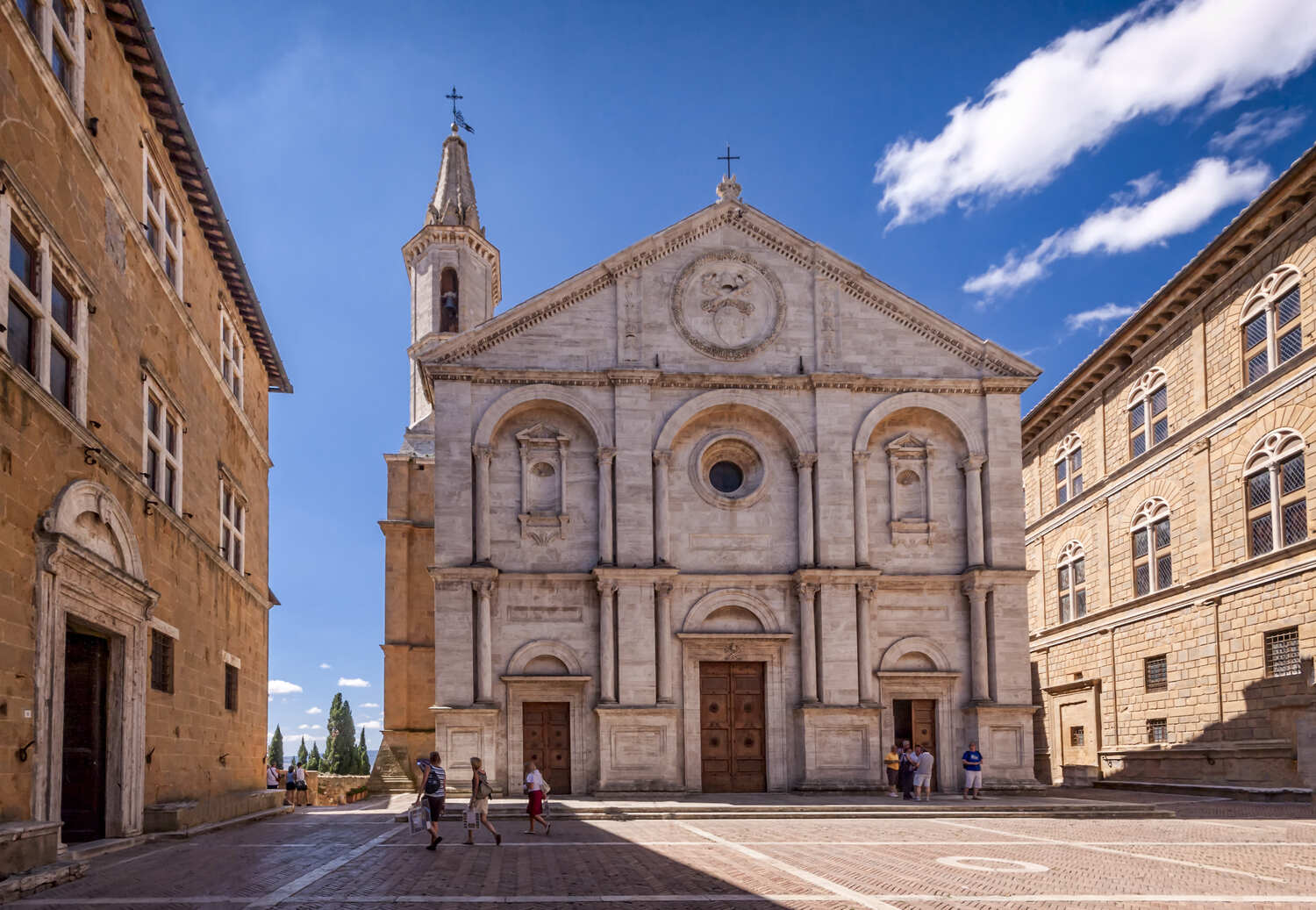
Conclude your exploration of the Val d’Orcia with a scenic drive back to Florence. The last of these 7 days in Tuscany will take place in Pisa, where you’ll see the iconic Leaning Tower!
Additional Notes:
- Each town’s center is relatively compact, making it possible to explore the main sights on foot.
- Booking wine tastings in advance is recommended, especially during peak tourist seasons.
- The drive between these towns is as much a part of the experience as the destinations themselves, with breathtaking views and photo opportunities along the way.
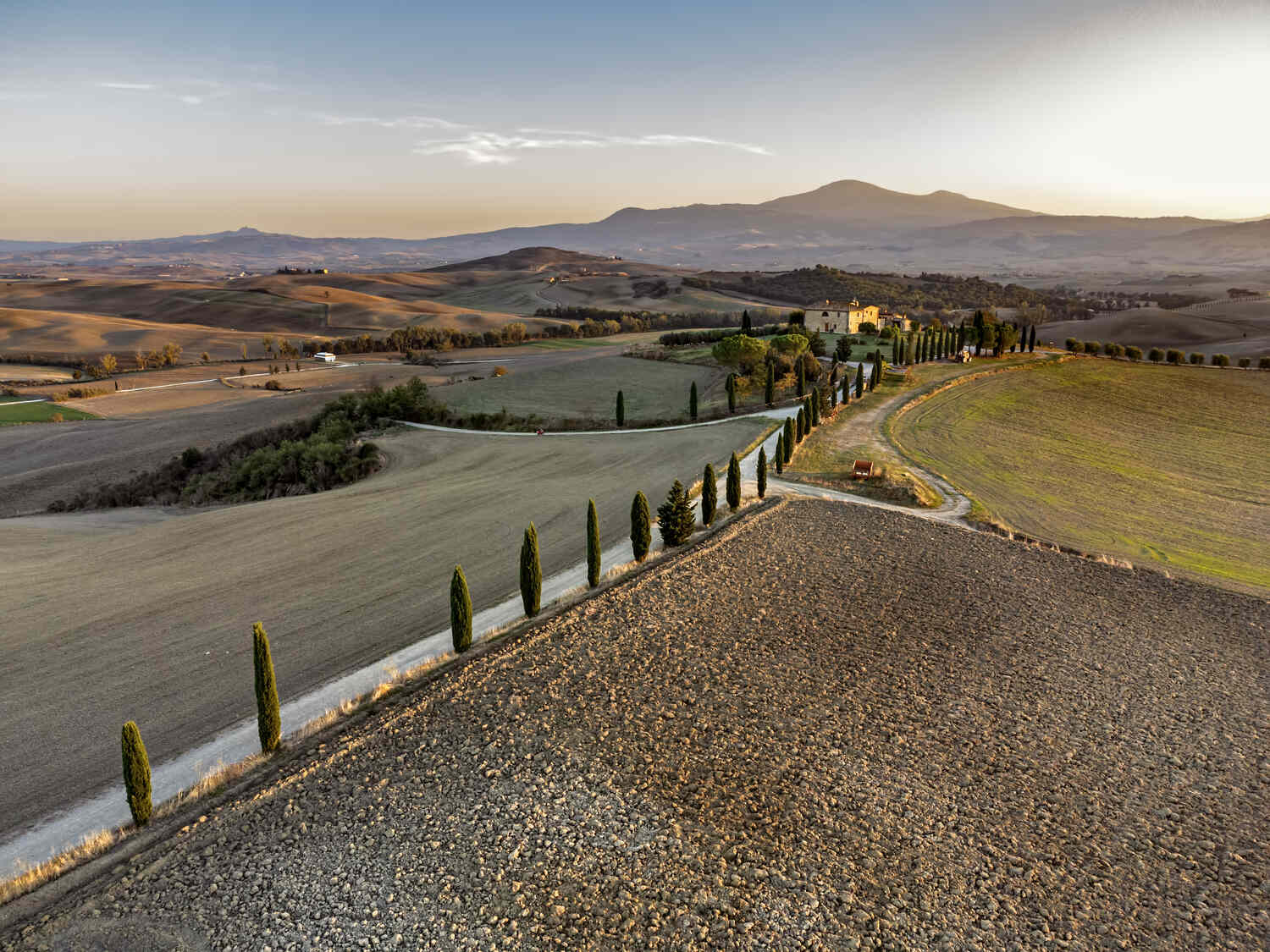
Day 7: Spend the Day in Pisa
Perfectly located for a day trip from Florence to Pisa, and less than an hour’s train ride away, Pisa is easily accessible and you’ll love your last day in Tuscany here. You have 2 options to get there:
Either return it to Pisa and fly out of the international airport you originally arrived at. Alternatively, take a train/stay the night and catch a guided tour from Florence to hit all the Pisa hotspots in one day.
Ready for the highlights? When you arrive, the city center is walkable from the train station, with the Piazza dei Miracoli only about 30 minutes away.
Make sure you start your visit at Pisa’s iconic Piazza di Miracoli, a UNESCO World Heritage site. This area is enclosed by old city walls and is famous for its three masterpieces of medieval architecture:
- Leaning Tower of Pisa: No visit to Pisa is complete without seeing the Leaning Tower. Book your ticket in advance to climb to the top for an exceptional view of the city. There are about 297 stairs to climb and the climb can be a bit challenging but the views are worth it. Oh, and don’t forget about this golden opportunity for a fun photo!
- Pisa Cathedral: After visiting the tower, see the brilliant Pisan-Romanesque architecture of the impressive Pisa Cathedral
- The Baptistery: Meanwhile, the Baptistery is famed for its exceptional acoustics. Please take some time to appreciate all the art and architecture these locations have to offer!
Enjoy a leisurely lunch at a local café or restaurant. Pisan cuisine offers simple, flavorful dishes such as cecina (chickpea pancake) and pasta with wild boar sauce. We went to Osteria I Santi and we had a fabulous meal.
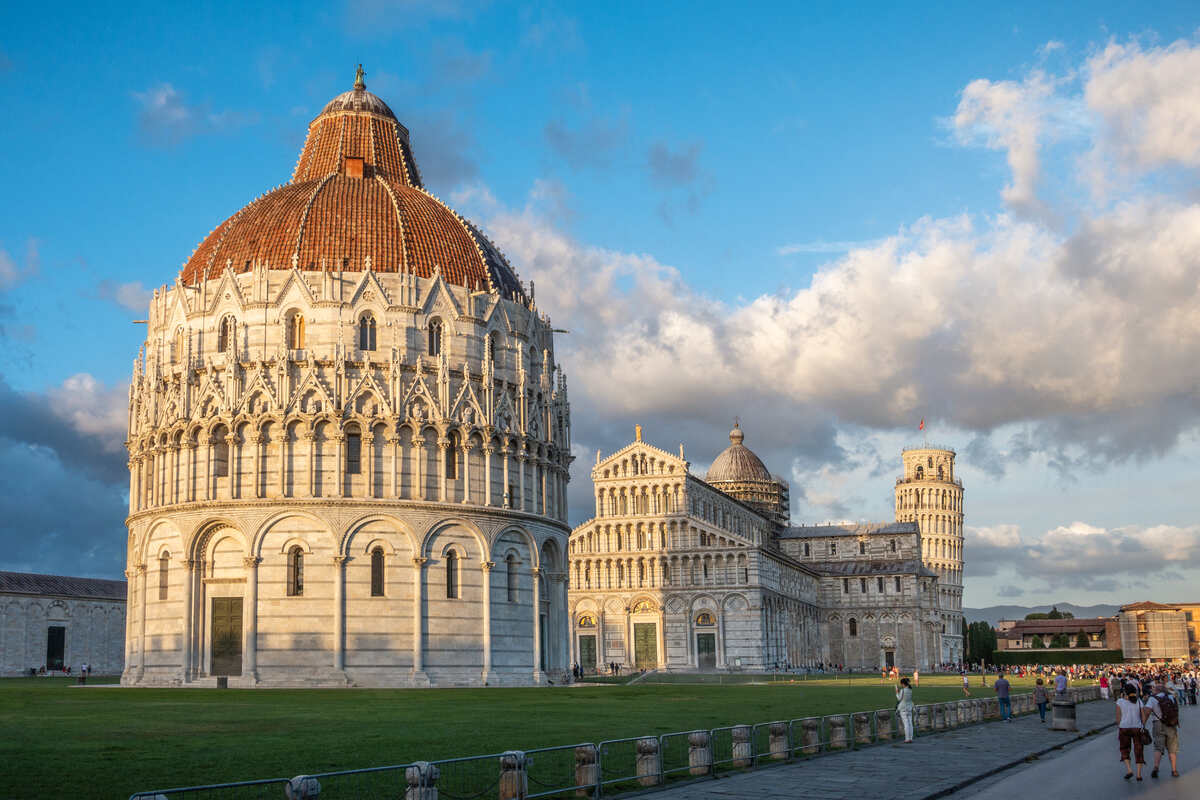
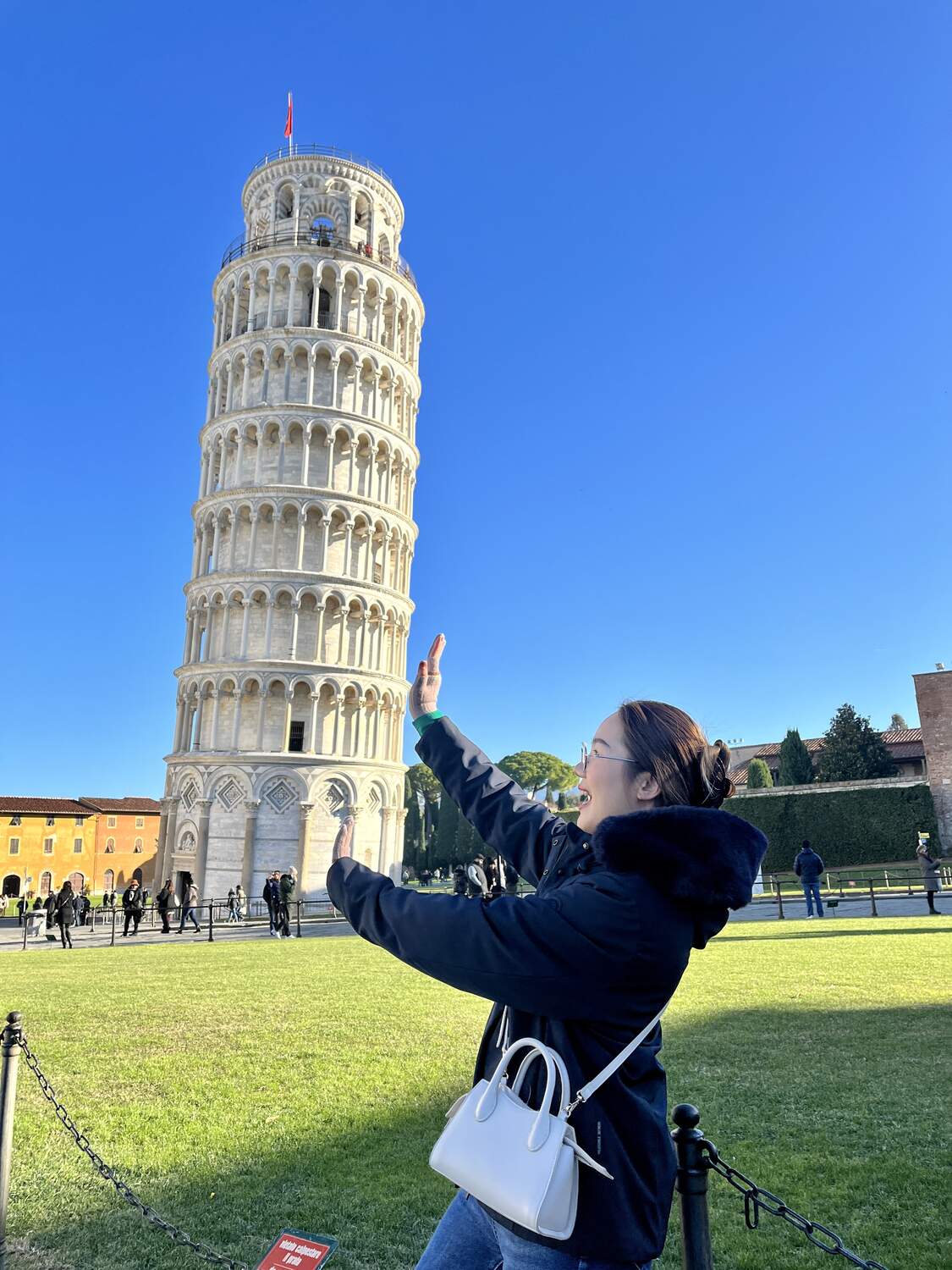
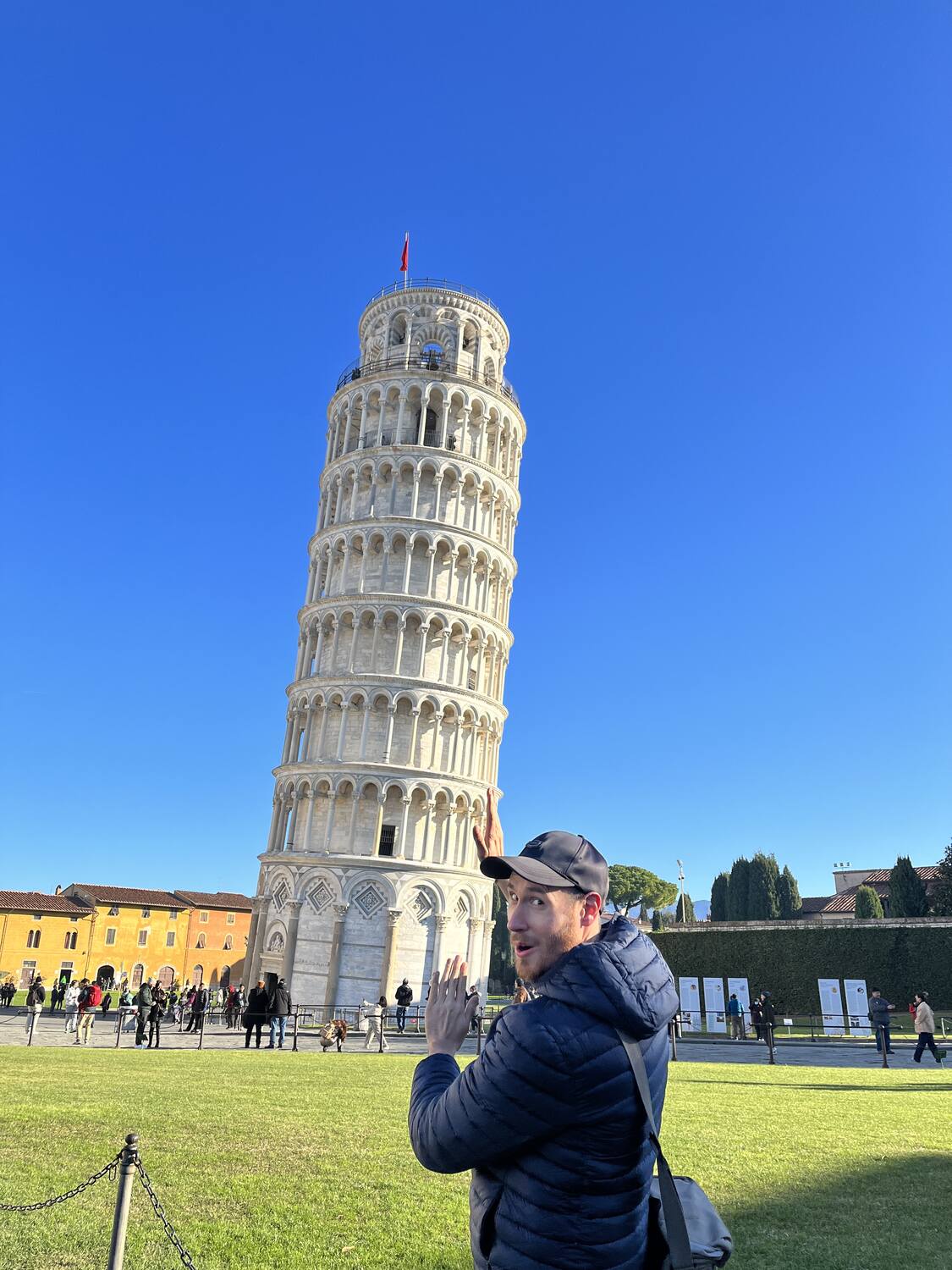
After lunch, go roaming around Pisa. The best option for your time is probably to visit Camposanto, an ancient cemetery renowned for its frescoes and peaceful atmosphere.
Later, one can take a leisurely walk along the Arno and watch how the river divides the city in two. Walk while discovering new views and enjoying the charm of the scenic streets decorated with historical buildings.
If you have some time left, go to the Museo Nazionale di San Matteo, which displays medieval art from Tuscany (mainly from the 1200s- 1500s) or Palazzo Blue, which gives temporary exhibitions.
At the end of your day, you can have dinner close to the river as it looks beautiful, or enjoy one of Pisa’s squares. A stroll in citrus may be ideal for a meal since Pisan cuisine is based mainly on seafood because Pisa is on the coast. Have gelato to finish and breathe the tranquil mood of the town at night.
Additional Notes:
- While the Leaning Tower is the highlight for many, taking the time to explore Pisa’s other historical and cultural sites can provide a deeper understanding of the city’s rich history.
- Pisa is relatively compact, making it ideal for walking, so wear comfortable shoes.
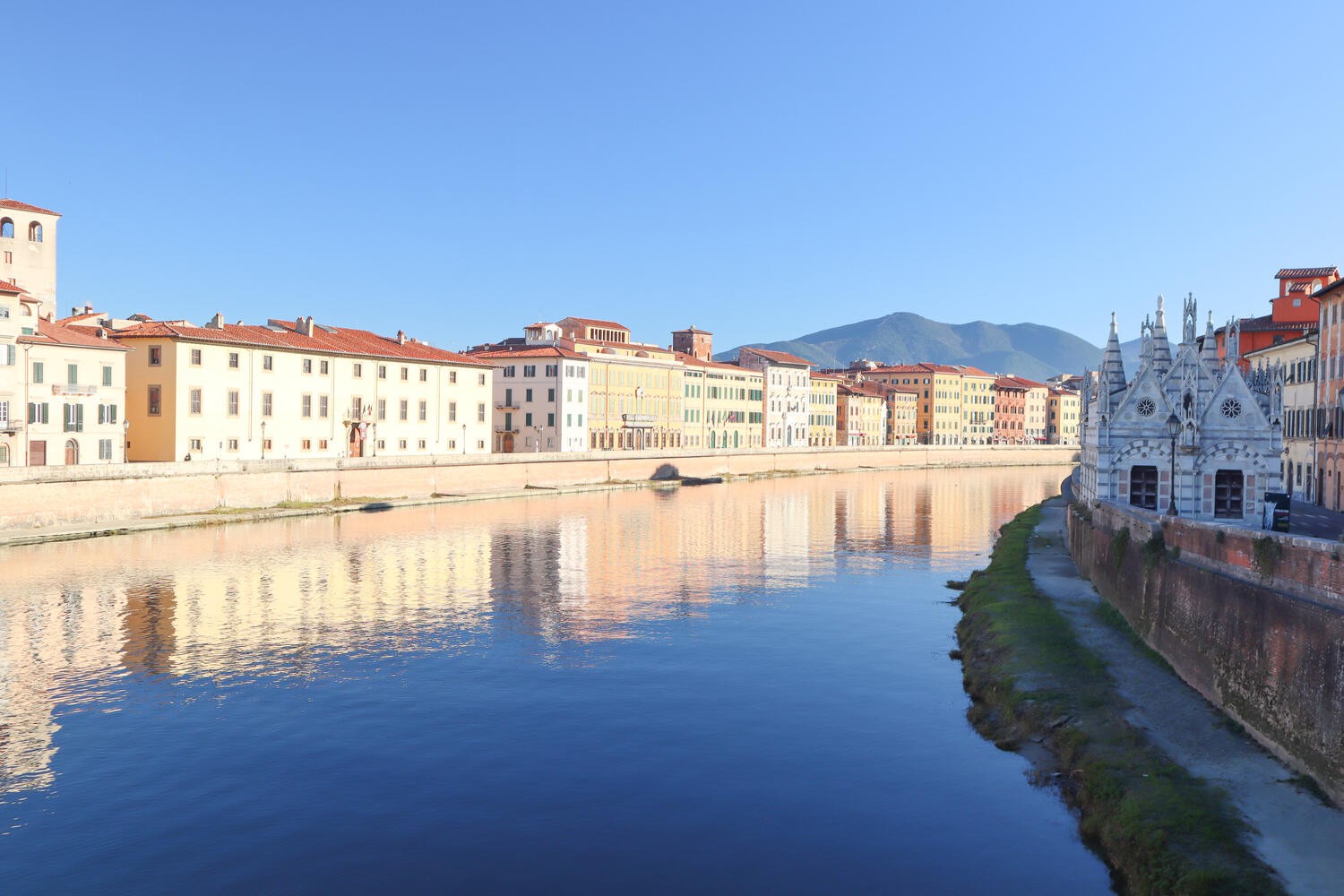
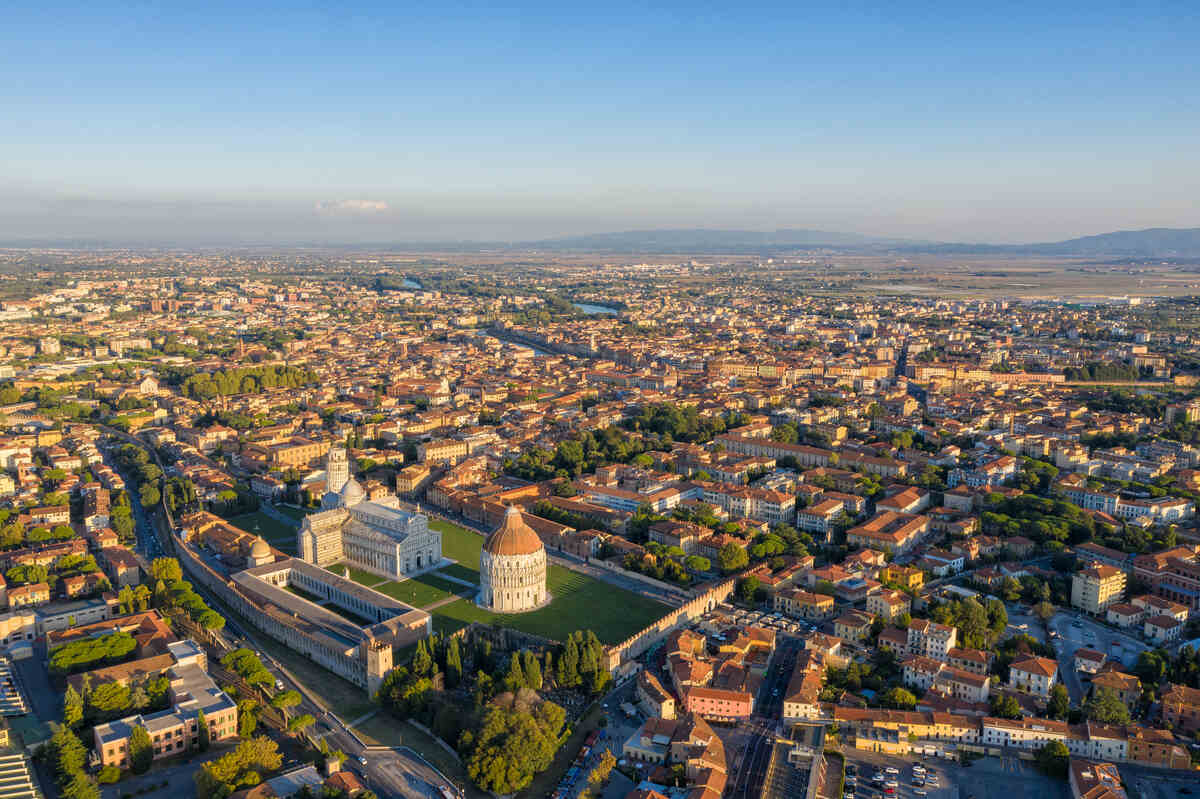
Where to Stay in Pisa
- Luxury: Palazzo Cini Luxury Rooms
- Mid-Range: Residenza D’Epoca -Santa Caterina
- Budget: Royal Victoria Hotel
Where to Eat in Pisa
- Ristorante Il Campano – Offers an array of specialties of Pisa served in a homely setting, ideal for tasting local flavors such as Cecina.
- Osteria dei Cavalieri – Known for its attention to detail and a menu that creatively interprets traditional Tuscan recipes.
- I Porci Comodi – A cozy spot right in the center of Pisa, best known for its homemade sandwiches with prime ingredients.
Best Tours in Pisa
Tips for Visiting Tuscany
Now that you know how to plan the perfect 7-day itinerary in Tuscany, let me give you some advice to travel the local way and make the most of your time.
Book Tickets and Tours in Advance
With spots such as the Uffizi Gallery in Florence or the Leaning Tower of Pisa, it’s best to always book in advance. That way you won’t have to wait in the crazy long lines and miss out!
Speaking of planning ahead, if you want to do something a bit more special like a wine tasting or cooking class, you need to book these in advance too. Showing up unannounced is a no-go.
Use The Fork to Eat Cheap
When you visit Tuscany, a good app to download is The Fork, one that gives deals on food, which is great when planning your trip to Italy budget.
This is great for finding places to eat that you might not know about along with potentially saving you money on restaurants. Might not be popular in smaller Italian cities and small villages in Tuscany but plenty of choices in bigger cities like Florence and Pisa.
Also, it’s not available for wine tasting, so make sure to book that before spending your week in Tuscany.
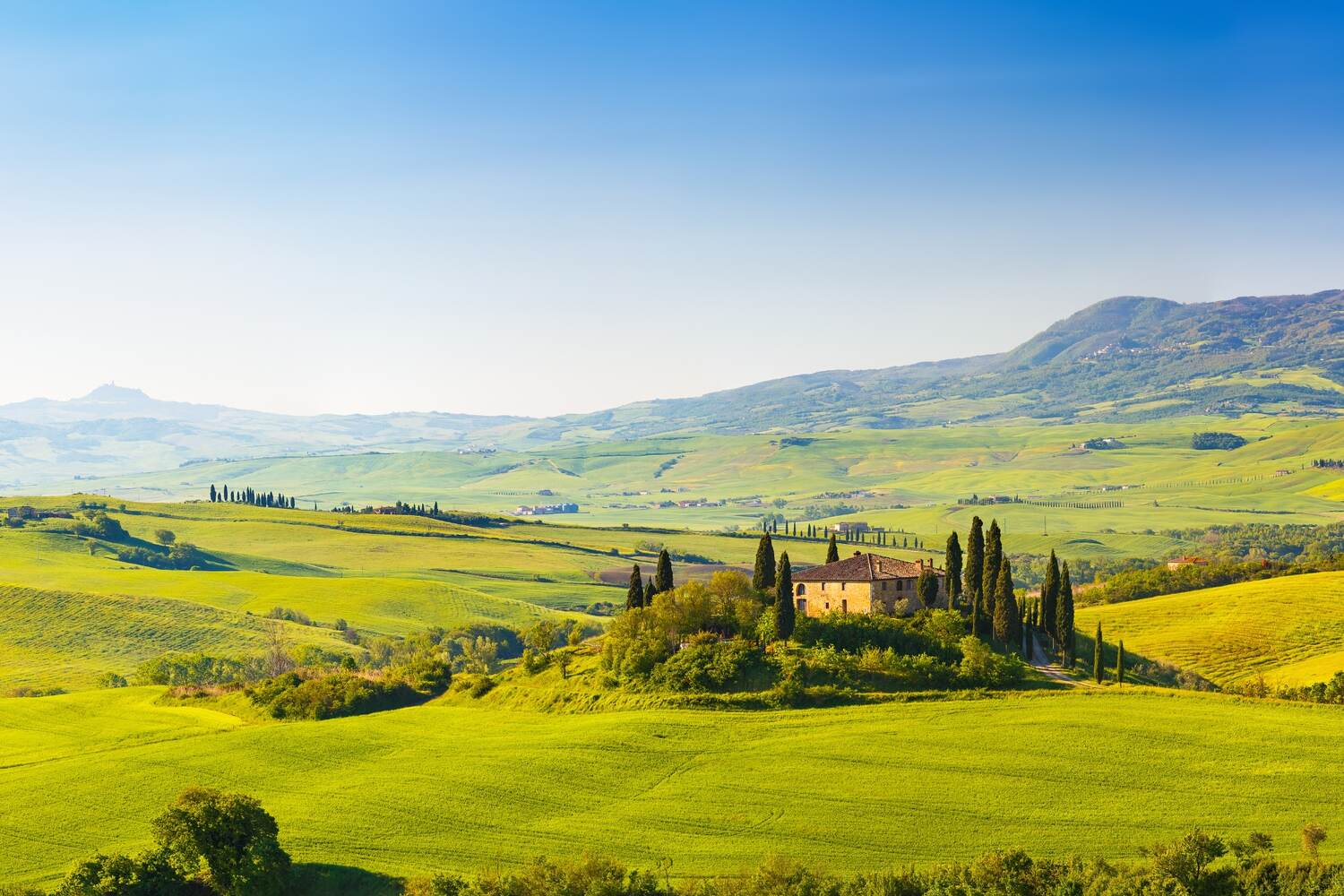
Learn Basic Italian Words
Knowing a few simple words and phrases in Italian can make your trip better. Even just being able to say “hello,” “thank you,” and “please” can make a big difference.
Learn Basic Italian Words: Knowing some simple Italian can really help during your trip. Start with greetings like “Ciao” (Hello/Goodbye), “Buongiorno” (Good morning), and “Buonasera” (Good evening). Saying “Grazie” (Thank you) and “Per favore” (Please) shows politeness. If you’re eating out, “Il conto, per favore” means “The bill, please.”
For asking if someone speaks English, you can say “Parla inglese?” It’s not only practical but also fun to try speaking the local language.
Renting a Car VS Joining Guided Tours
Tuscany is a must-visit region, but there are various ways to enjoy your stay. Most people drive their own cars or rent one at Florence airport’s car rental service, while others choose public transportation (buses or trains).
Some people also prefer to join guided tours for convenience, and that’s my favorite way of traveling when I don’t rent a car.
Also, remember that the difficulty of driving depends on the region and tours can take you to all the main sights and give you lots of interesting information without the stress of driving.
Conclusion for This Tuscany Trip
As your 7-day adventure in Tuscany comes to a close, you’ll leave with a collection of unforgettable memories and a deeper appreciation for the Italian way of life.
This journey through Tuscany offers more than just a glimpse into Italy’s heart—it invites you to live, taste, and revel the entire region that has inspired poets, artists, and travelers for centuries.
From the cobblestone streets of Florence to the valleys of the Val d’Orcia, every moment spent in Tuscany is one you’ll remember forever!
Thanks for reading this guide until the end and I hope it was helpful in planning your trip around Tuscany!

